 philips - en
philips - en
 philips - en
philips - en
 philips - en
philips - en
Anno: 1966/1967
Valvole ECC85 ECH81 EAF801 EF184 EM87 EM87 ECC808 ECC808 ECC83 ELL80 ELL80
Semiconduttori 4× AF126
Principio generale Supereterodina (in generale); ZF/IF 460/10700 kHz
N. di circuiti accordati 6 Circuiti Mod. Amp. (AM) 12 Circuiti Mod. Freq. (FM)
Gamme d'onda Onde medie (OM), lunghe (OL), corte (OC) e MF (FM).
Tensioni di funzionamento Alimentazione a corrente alternata (CA) / 110-125; 220 Volt
Altoparlante 2 altoparlanti / Ø 21 cm = 8.3 inch
Dimensioni (LxAxP) 730 x 240 x 250 mm / 28.7 x 9.4 x 9.8 inch
Stereo-Decoder
Potenza d'uscita 2 x 9 W
Peso netto 10.5 kg / 23 lb 2 oz (23.128 lb)
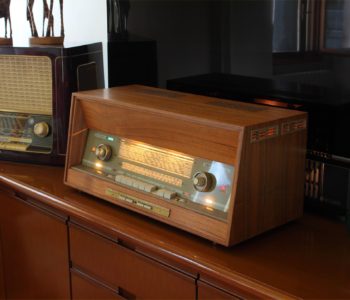 freiburg studio - en
freiburg studio - en
The Saba Freiburg Studio is almost identical to the Freiburg 14 and Freiburg Studio A.
The latter has a different design of the dialglass and the stereo decoder mounted standard, with its indicator on front.
The Saba Freiburg Studio is however ready for mounting a stereo decoder, so just insert it in the special socket after removing the plug.
The description is therefore the same as the Freiburg 14 model that has been previously reviewed.
The Saba Freiburg Studio are the highest expression of German production with regard to tube receivers equipped with automatic search.
No German receiver can give more, and none contains all the features and performances that Freiburg Studio have.
Electronically, it is the same machine used in the Saba Freiburg 14 or Saba STudio A, so refer to this page for the technical description, but the flexibility is very different.
In this description I will focus precisely on this versatility.
- The first advantage is that being without speakers the cabinet is much more compact, and this allows you to position it in the environment with much more ease.
- The second advantage is that is possible to pair the device with the most suitable speakers and position the speakers in the most appropriate way for ideal listening.
These possibilities offered by receivers, including the Saba Freiburg Studio, are extremely important. If well used they can radically change the sound of a system.

Bluetooth receiver embed
Each radio is equipped with a cable for connection to any digital device.
- Bluetooth receiver embed – The unit is equipped with a BLUETOOTH receiver powered directly by the receiver power supply. This makes it possible to control the amplifier from any external digital device as an IPAD, a Smartphone, or a sophisticated multimedia station. So you can hear your preferred web station or your lossesless file without cables on the room. Wireless Receiver can be equipped upon requests.
– Multi Platform Connection – A customized adaptation cable to connect any digital device as Iphone, Smartphone, Laptop, CD Player etc. will be provided with this radio. This special cable suits the different impedances between the modern equipment and the receiver. Furthermore the two stereo channels flow into one without increasing the load to the input unit.
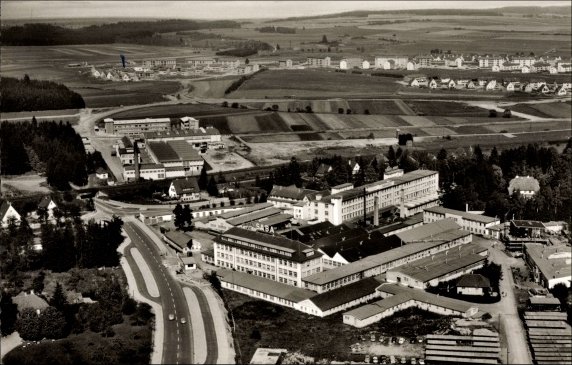

SABA is the acronym for Schawarzwälder-Apparate-Bau-Anstalt meaning engineering institute of Technological appliances of the Black Forest.
The company was founded back in 1835 by Joseph Benedikt with the initial name of Jockele-Uhren, but only in 1923 the production of radio devices began and the company went under the name of SABA.
Toward the end of the 20s SABA became famous with the well-known S35 and in the following years it became the second German producer after Telefunken. During the war SABA produced military equipment and in 1945 the company was completely destroyed by a bombing.
In 1947 the production of radio devices began again and SABA distinguished itself immediately for ist avant-garde and high- quality production.
hey also began to produce TVs (the first PAL color TV is a SABA), house appliances and medical equipment. Many Italians used to work there. The Alnico Greencone loudspeakers became popular for their linearity, power handling, constant impendence that would be employed in each Hi-Fi devices of that time.
The radio devices with motorized tuning became popular as well and SABA became the representative German brand meaning quality, reliability and detailed precision. In the 1970s the decline began. According to specialized magazines of that time not having a Japanese device at that time meant not having Hi-Fi. In the 80s Thompson took over SABA. In the 90s the other way around, having a Japanese device of the 70s meant not having Hi-Fi. They found out that they functioned with a 96% counterreaction and that a device with 0.001 db from 1 to 100 KHz extension did not necessarily sound good.
We do not trust our ears and we do trust what other people say not necessarily with a good purpose.
2007: due to insolvency SABA disappeared from the TLC (Chinese) and Thompson (French) joint venture, and SABA ceased to exist.
Year of production: 1963-64
10 AM Circuits
13 FM Circuits
Wavebands: Medium Waves (OM), Long Waves (OL), Short waves (OC), FM (UKW)
5 Greencone loudspeakers:
2 x 10" Alnico woofers
2 x 8" Alnico mid/woofers
1 Elliptical tweeter
Dimensions (LHD):: 27,6 x 17.9 x 12.2 inch
Net weight: 53.6 lb
14 Tubes: EC92 EC92 ECH81 EF89 EM87 EBF89 EF86 EF86 ECC83 ELL80 ELL80 EM84 EABC80 ECL80
Ferrite rotating aerial
Automatic tuning research
Optional remote control
FM stereo decoder arrangement


Rotating ferrite curve with lightened window indicating its position.
The ferrite curve can be rotated through a big knob which is coaxial to the volume knob. Inside the piece of furniture there is a dipole for the FM reception and a directable ferrite curve for the AM reception.
The device is equipped with separated tuning mechanisms for AM and FM bands and for each of the FM bands.
There is only one tuning knob but the selector changes on a cable and pulley system that are separated according to the band.
Worth noticing is the accuracy and the complexity of the motorized FM group.


The magic eye indicating the tuning of each station is new.
The tuning system is a masterwork.
It is a motor with windings supplied in a phase shifted by some capacitors. It permit to change the motor rotation direction of according to whether the search is in one sense or another.
The tuning is centered by drawing part of the signal from the CAC circuit and by using a relais controlled by a tube.
As already mentioned, calibration is rather complex and it cannot be put into practice without referring to SABA’s original manuals.
Below a detail of the engine and the scheme section to control the automatism.


Another interesting feature is the volume control.
The knob does not automatically control the volume potentiometer. It controls through an unknot push-back.
The motorized remote control has a slight friction effect which strengthens the resistance when you turn the knob.
The first small window that can be seen on the left side indicates whether the ferrite curve is inserted and its position.
On the left side you can also find the volume control (with incorporated loudness) and the ferrite curve rotation control.
Right above the volume control there is a magic eye indicating the perfect tuning of each station.
Below you can see the Mono/Stereo indicator and further below the bass control knob.
The AM bands with Short, Medium and Long Waves and the FM displays.
Starting from the lefthand corner you can see the Musik/Sprache, Stereo/Mono, AUX input buttons, the band switch buttons, the Long, medium, short waves and FM switch buttons and the motorized tuning system (Automatik) button.
Lastly the ON/OFF button.
Next to it the acutes control knob is to be found.
The Musik/Sprache equalizer indicator.
On the right, the tuning knob, which is supported by a big fly-wheel that renders its movement really pleasant.
The automatic tuning functioning indicator is to be found on the right as well.
Below two buttons for the automatic tuning functioning. Each button activates the automatic tuning mechanism in one or the other direction. By pushing one of those buttons the engine constantly activates the tuning indicator for a fast reposition.

Output for external speakers.
Socket for recorder (tonbandgerat).
Turntable input (Tonabnehmer)
AM and FM aerial inputs and ground socket.
Remote control inputs
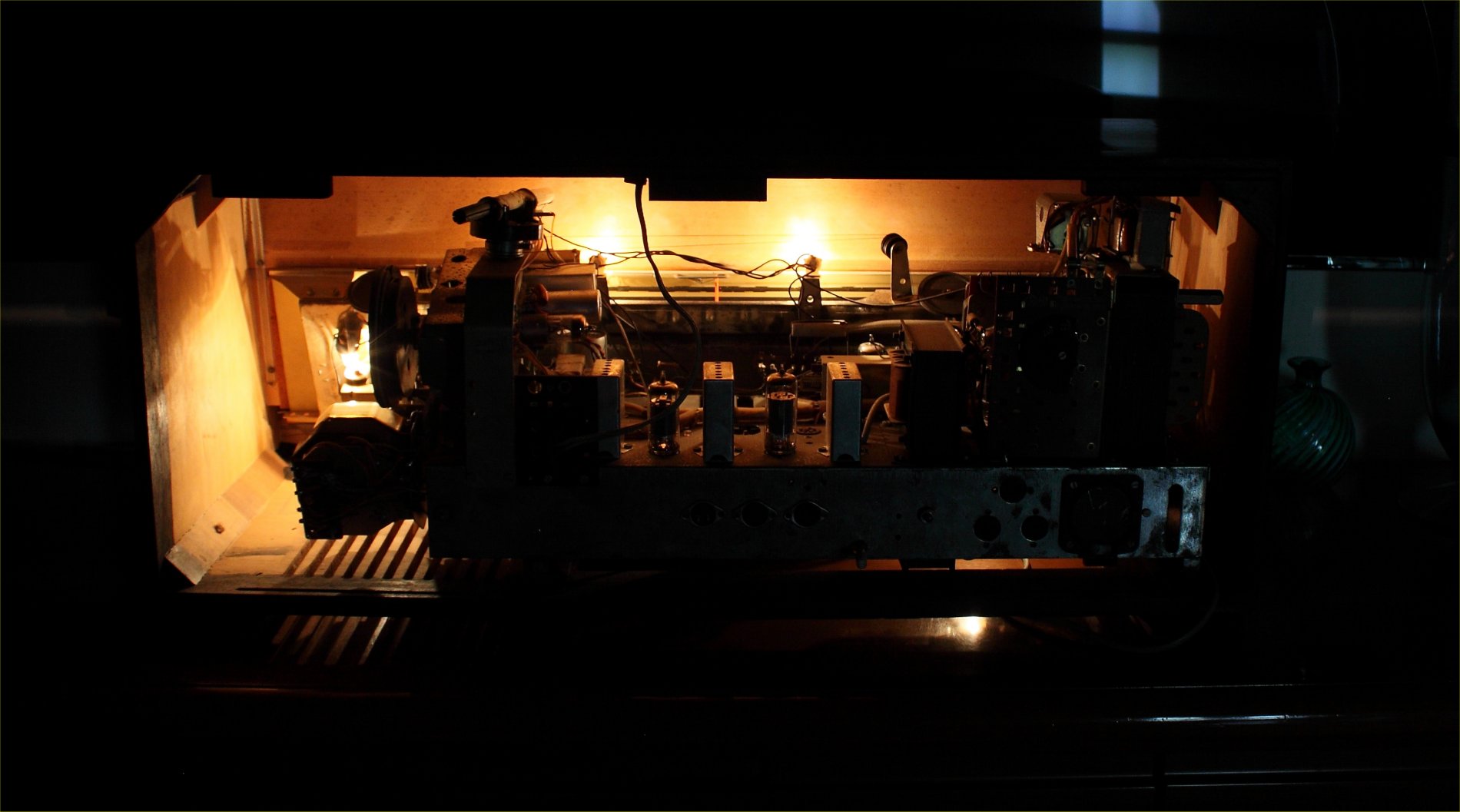
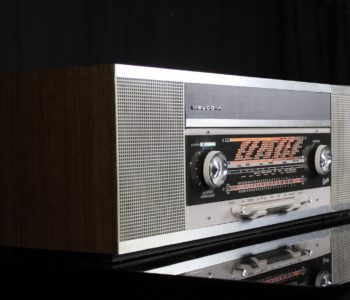 german radios - en
german radios - en
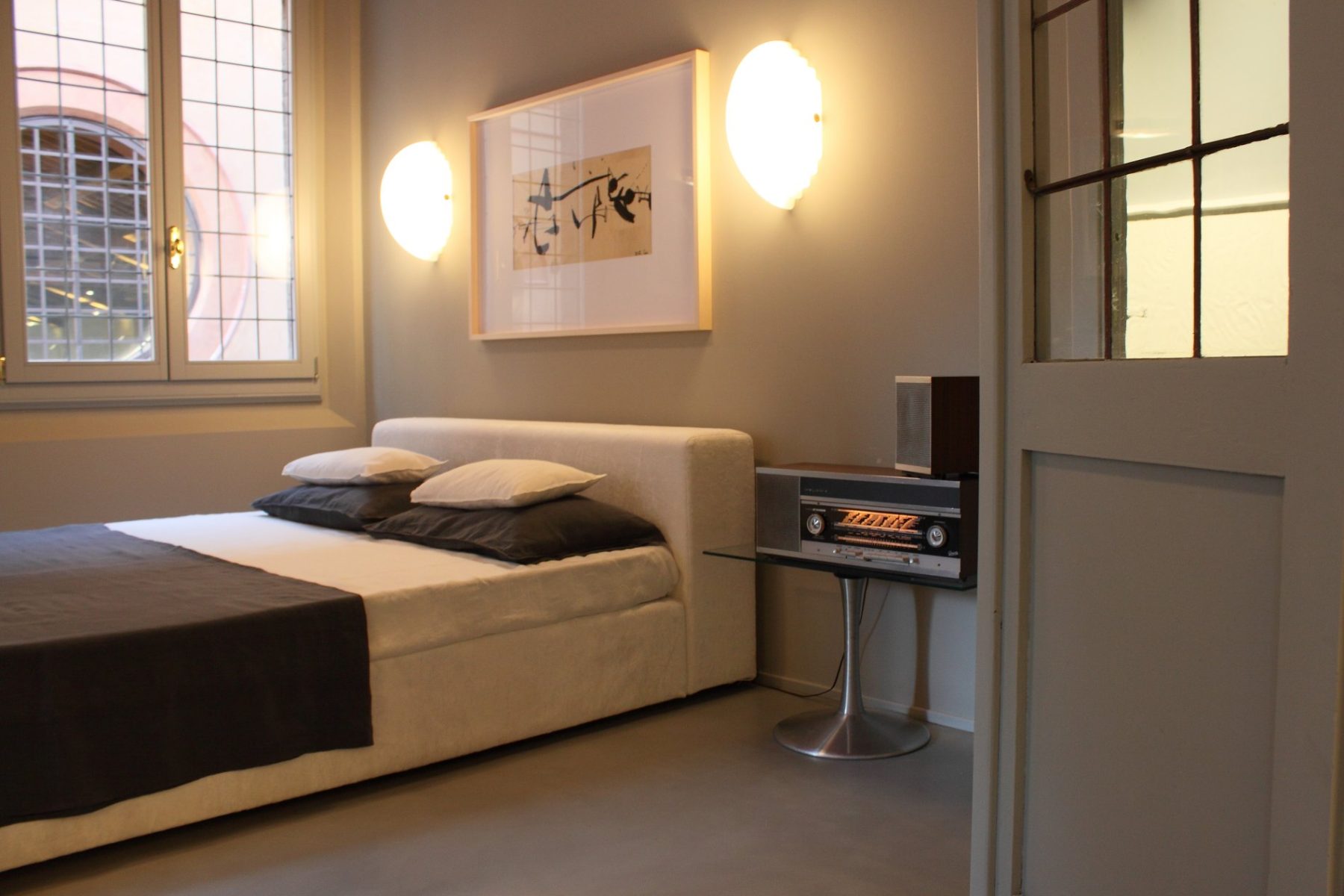

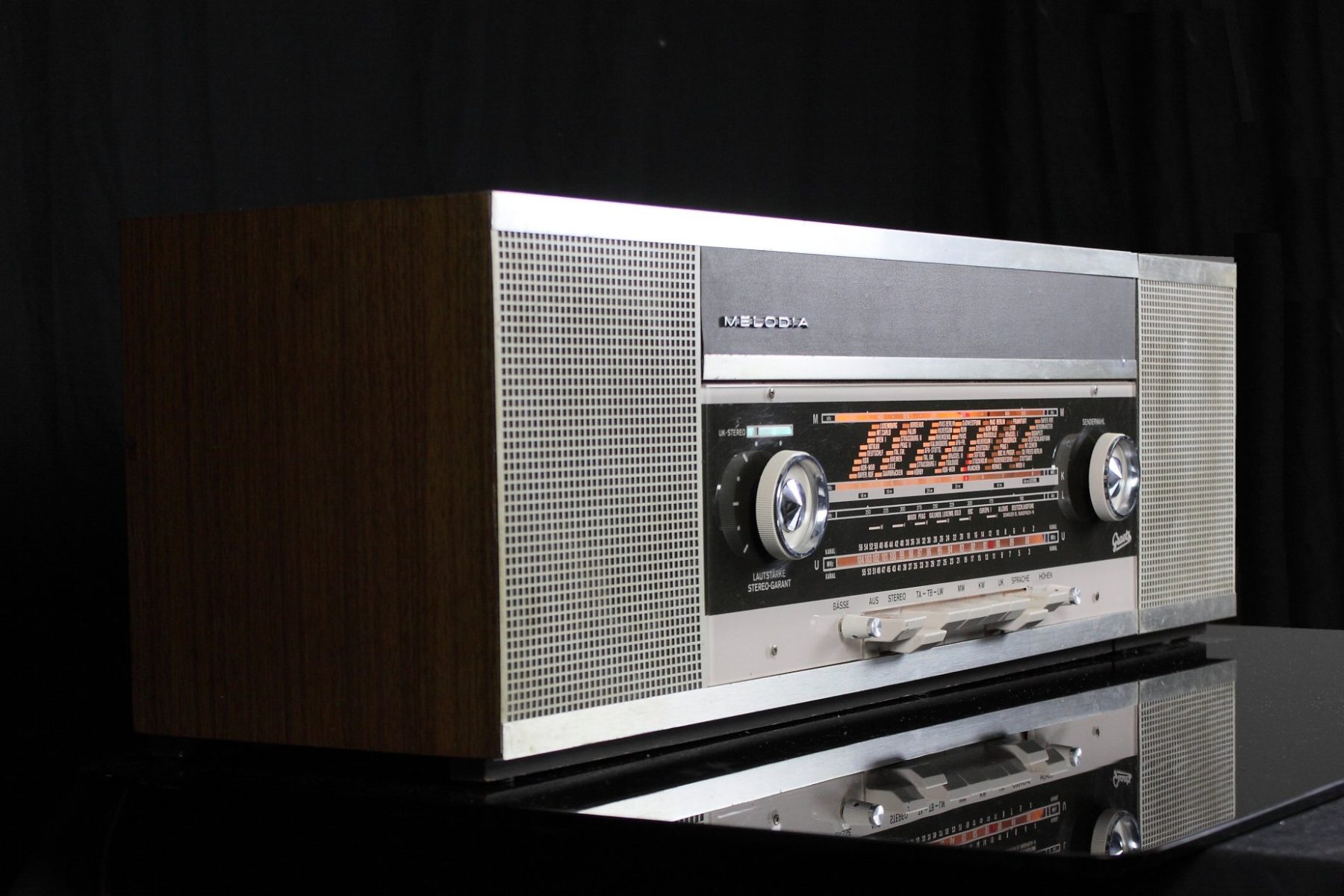

The Graetz Melodia 14F immediately distinguishes itself from the other devices produced in the mid-60s by the prestigious brand of Berlin for the very modern look, which used to make large use of metals and plastics.
This interesting design experiment is found, apart from the Melodia 14F, only on the Stereo Unit 250 model.
Comparing, in the pictures on the right, the Melodia 1118 model – the production of which was only finished the year before – and the Melodia 14F, it is impossible not to be impressed by the incredible stylistic evolution of the two devices.
Graetz products have always been characterized by a meticulous and refined design, but in the 1960s there was a real acceleration, which anticipated one of the greatest creative movements of the 1970s, known as the "Space Age".
From the famous "Ball Chair" of the great Finnish designer Eero Aarnio to the Eclisse Lamp of the Italian Vico Magistretti.
The Space Age experiments with new materials and this allows to explore new shapes, previously difficult to build.
In those years, many companies realized some unsurpassed technological “objects”, in great demand nowadays.
Among the producers of technological equipment I mention only – apart from the Graetz with the Melodia 14F Stereo Unit 250, of course – the Grundig with the series of spherical HI-FI speakers AudioRama and the Italian Brionvega with its Algol TV and the Radio Cubo.
In '64, Charles Mingus left the contrabass to record the album “Mingus Plays Piano”, “The Velvet Underground” and “The Who” made their debut, in Italy the group “The Giants” was formed and I conclude the review stealing their battle cry - “Put flowers in your cannons ..."
The Amplifier Section consists of an EL84 in A class for each channel, driven by a section of the doppio triodo ECC83.
The Volume potentiometer is equipped with loudness terminal (Yellow). As known, in fact, when listening to very low volume the basse and the acute notes are not perceived with the same sound intensity as the medie notes, which seem to be clearly predominant.
The Balance (Blue) is inserted between the two channels at the output of the preamplifier.
The Feedback network (Red) was designed to reduce distortion and equalize the risposta in frequenza of the device. In fact, the device is equipped with independent loudspeakers for each channel. Although these loudspeakers are broadband and of excellent quality, they cannot faithfully reproduce the entire audible band. Their frequency response, in fact, decays at the extremes, in particular the low one. The feedback network compensates for the efficiency drop of the loudspeakers at the two ends of the frequency. The result is a surprisingly linear response on a very extensive frequency band. You do not expect a sound like that from such small loudspeakers, and this is how it was obtained.
The Radio Section is very refined, too.
The most interesting feature is the high selectivity of this device, due to the double IF amplifier. In fact, the two EF89 and the numerous MF transformers are visible in the photos.
In FM was even implemented an additional transformer tuned into the converter, in order to make the reception of these frequencies even more stable and insensitive to disturbances.


Bluetooth receiver embed
Each radio is equipped with a cable for connection to any digital device.
- Bluetooth receiver embed - The unit is equipped with a BLUETOOTH receiver powered directly by the receiver power supply. This makes it possible to control the amplifier from any external digital device as an IPAD, a Smartphone, or a sophisticated multimedia station. So you can hear your preferred web station or your lossesless file without cables on the room. Wireless Receiver can be equipped upon requests.
- Multi Platform Connection - A customized adaptation cable to connect any digital device as Iphone, Smartphone, Laptop, CD Player etc. will be provided with this radio. This special cable suits the different impedances between the modern equipment and the receiver. Furthermore the two stereo channels flow into one without increasing the load to the input unit.


The Ehrich & Graetz metalworks was a factory established in 1866 in Berlin by Albert Graetz (1831–1901) and the tradesman Emil Ehrich (died 1887) under the name "Lampen-Fabrik Ehrich & Graetz OHG" (E&G).
By 1897 the firm was controlled by Albert's sons, Max Graetz, and Adolf Graetz. The company grew rapidly, and in 1899 factory complexes were built in Berlin, in the United States, France, the UK, and Bombay.
Around 1910-1916 Max Graetz developed the famous Petromax Lantern. Around 1925 the factory also produced radios, and other electrical appliances under the name Graetzor.
In the Second World War, just as in the First World War, the company was part of the war industry. With the use of forced laborers from France, Russia and the Netherlands the company made huge gains in production.
At the end of April 1945 the factory was claimed by the Russian army.
In 1949 the firm became part of the "peoples" program, "VEB-VolksEigenerBetrieb" and since 1950 "VEB Fernmeldewerk, Berlin Treptow (RFFT)." VolksEigenerBetrieb, means that the factory was owned by the people for the people (Communism)
In 1948 Erich, and Fritz Graetz founded a new company in Altena, Germany known by the name The Graetz Firm, which was successor to the lost family company in Berlin. The new company produced mainly radios and televisions.
In 1961 the company was then sold to Standard Elektrik Lorenz (SEL) AG, but since 1987 has been to the present owned by the Finnish company Nokia.
Year of production: 1966/68
Superheterodyne IF 460/10700
6 AM Circuits
10 FM Circuits
Wavebands:
Medium Waves(OM), Long Waves (OL)
Short waves (OC), FM (UKW)
Loudspeakers:
2 Elliptical Fullrange
Dimensions (LHD): 750 x 225 x 190 mm / 29.5 x 8.9 x 7.5 inch
Net weight: 10 kg / 22 lb 0.4 oz
7 Tubes: ECC85, ECH81, EBF89, ECC83, EMM803, 2xEL84


The loudspeakers are two Lorenz LP 1318/19/105 AF with alnico magnet. They are very efficient. So, the 4 watts of each of the two channels is transformed into a noticeable acoustic pressure.
For a “normal” volume listening, not annoying, the knob is positioned at 11 o'clock.
The sound power is therefore more than enough to sonorize also medium-sized environments.
In this way the dynamic response is very prompt, and the lows are slowed down but very present.
This feature allows to take full advantage of the AUX input with lossesless digital files or CDs providing a brilliant and dynamic reproduction.
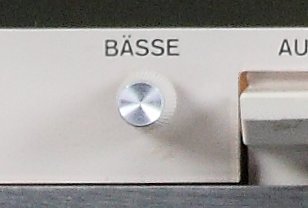
In line with the latest trends (of the time) there is a single equalization button, the Sprache key/button (Voice) which attenuates the low and high frequencies, making the transmissions where the speaking prevails more intelligible.
On the sides we find the two tone control knobs.
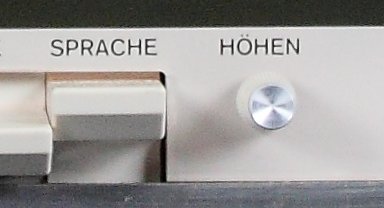
The unit is equipped with mechanisms that keep AM and FM bands separate very simple to use.
The tuning knob is single, but a selector switch commutes between cable systems (all steel made) and pulleys dedicated to each band.
The movement is transferred to both mechanisms with a system of pulleys and separated gears.

The magic eye has a double function.
The left section (Pink) indicates that the received station is broadcasting in stereo.
The right section (Green) indicates the perfect tuning of the received station.

Left from the top:
- The Magic Eye that indicates the perfect tuning of each station and the Stereo broadcast
- The volume control (with built-in loudness)
- Axially this balancing.
- The bass control knob
In the center:
The AM display for long, medium, short waves and the FM display.
Right from the top:
The tuning knob, whose movement is very pleasant being supported by a large flywheel
-The treble control knob.
The keyboard:
AUS - Switch off
STEREO - Stereo
TA - Turntables
TB (TA + LW) - Tape Recorder
LW - Long Waves
MW - Medium Waves
SW - Short Waves
UK - FM
SPREACHE - Voice

Output for external speakers, with the possibility of excluding the internal loudspeaker depending on how the DIN plug is inserted.
Socket for recorder (tonbandgerat).
Turntable input (Tonabnehmer)
AM and FM aerial inputs and ground socket

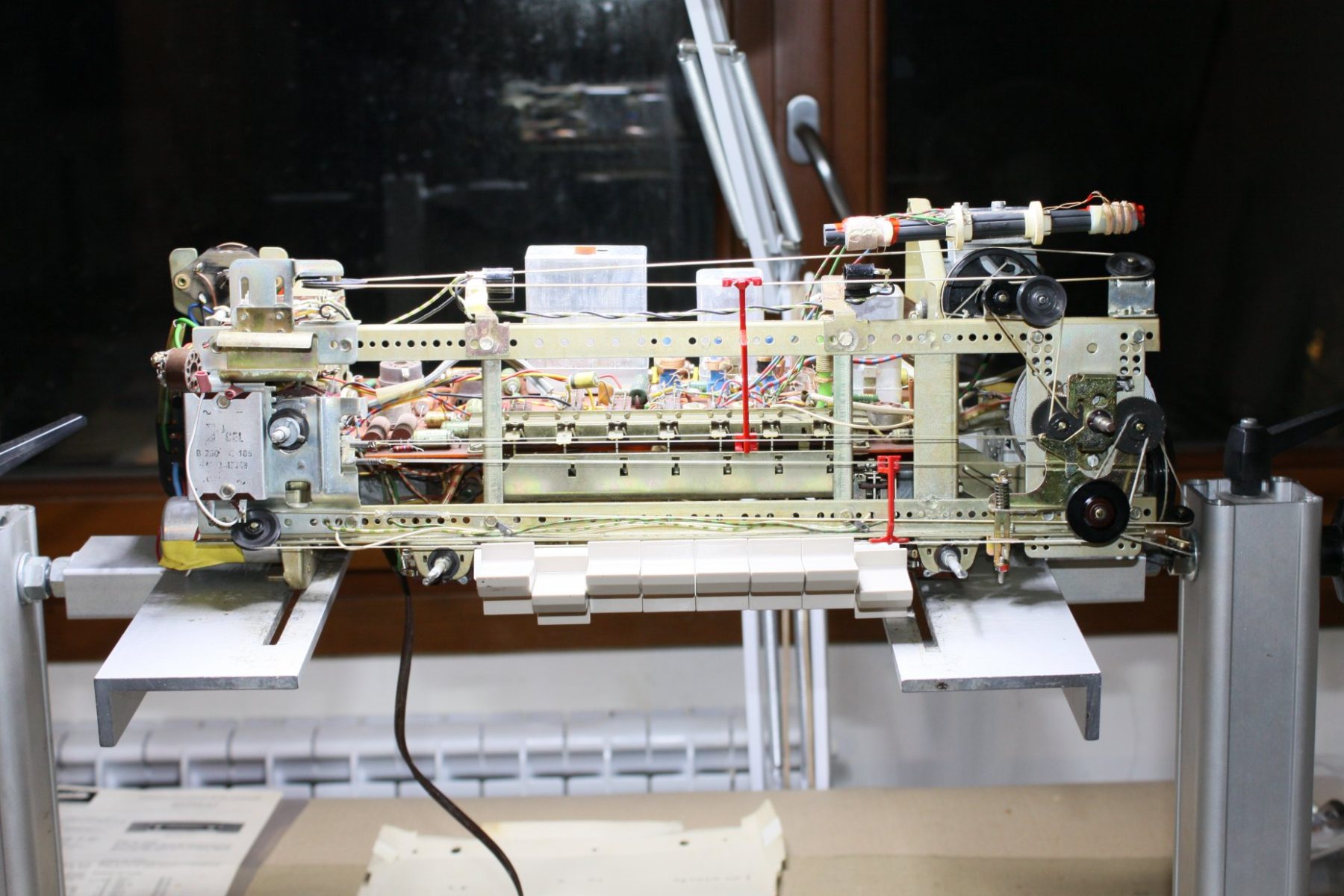





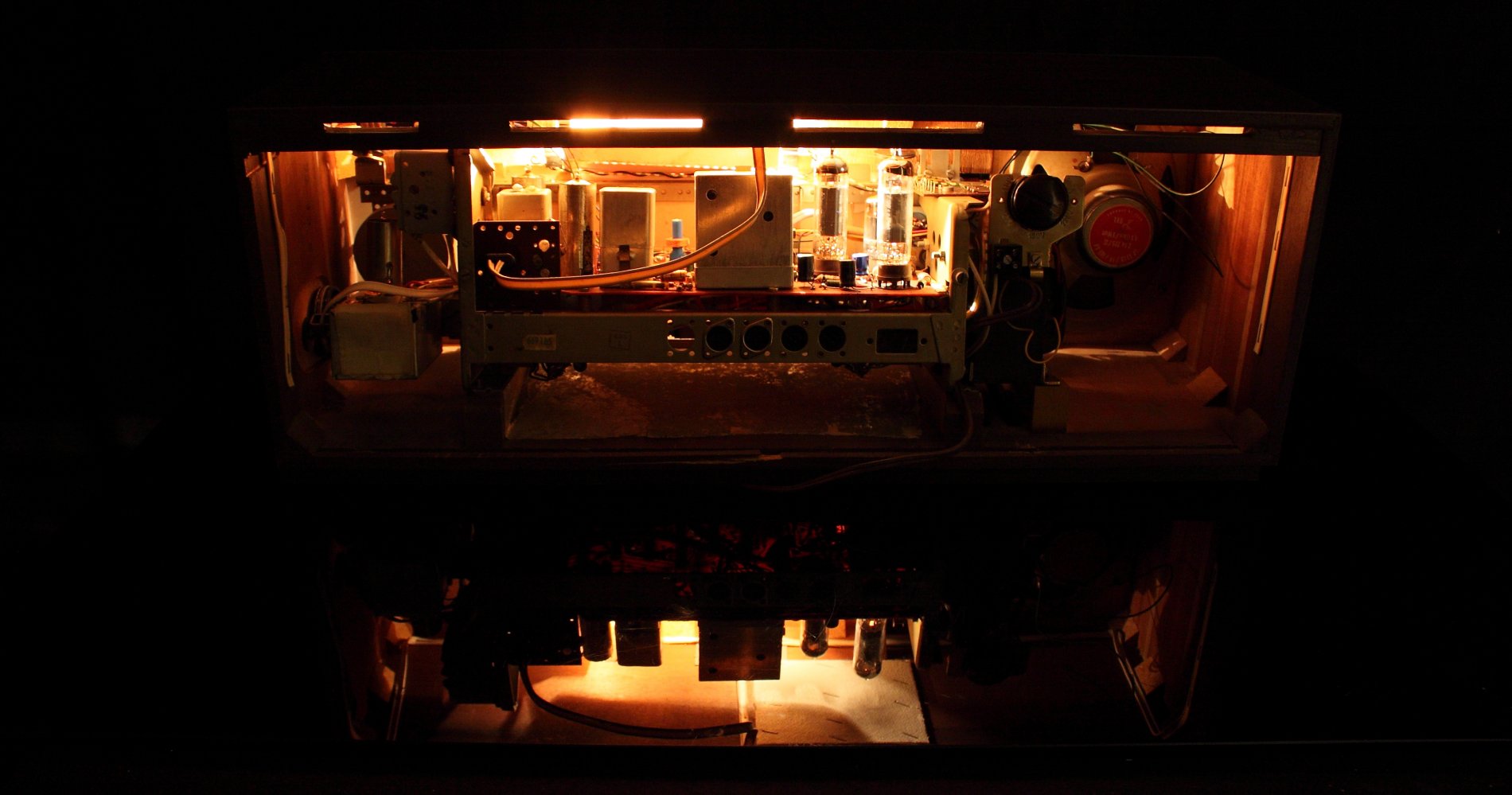
 german radios - en
german radios - en

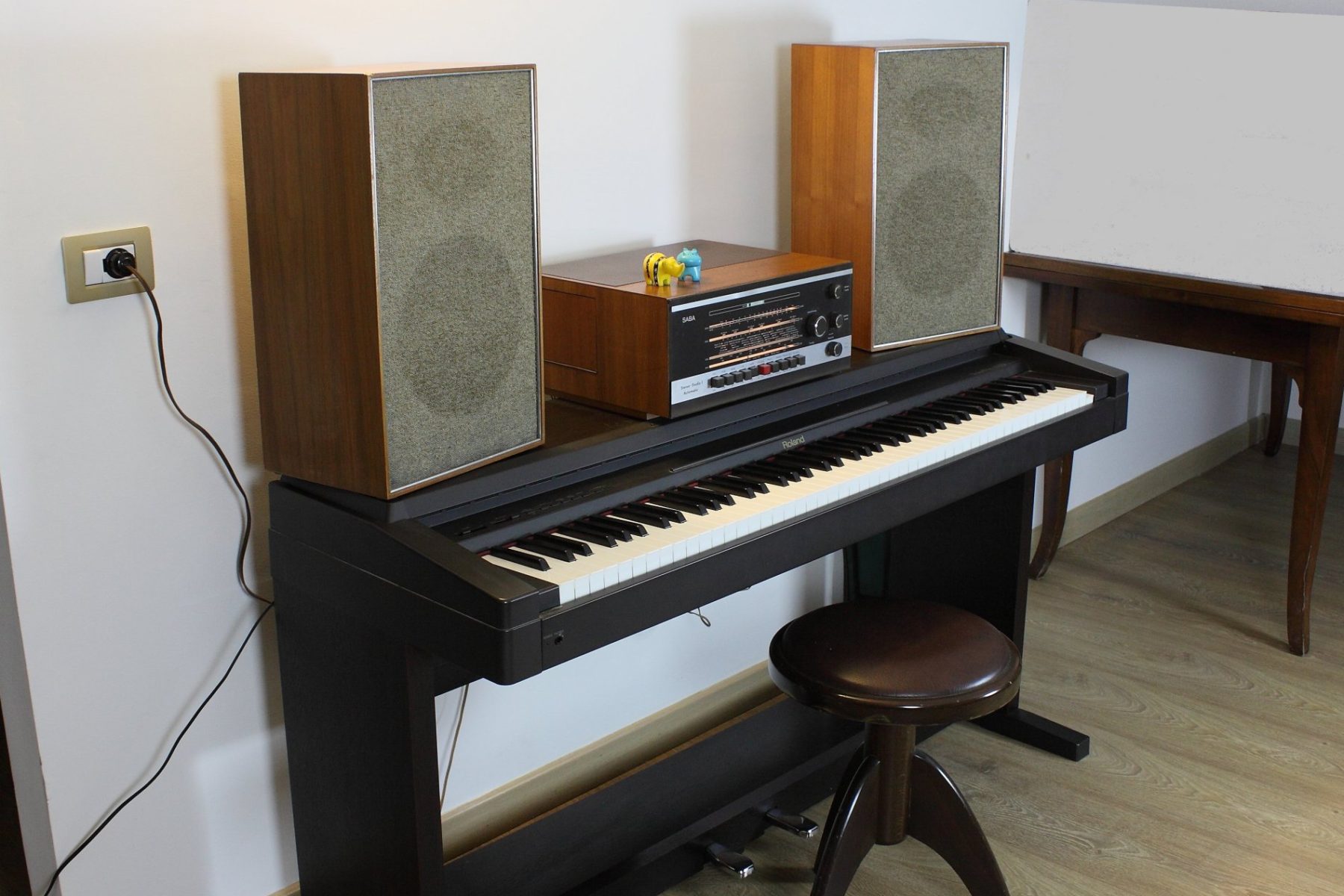






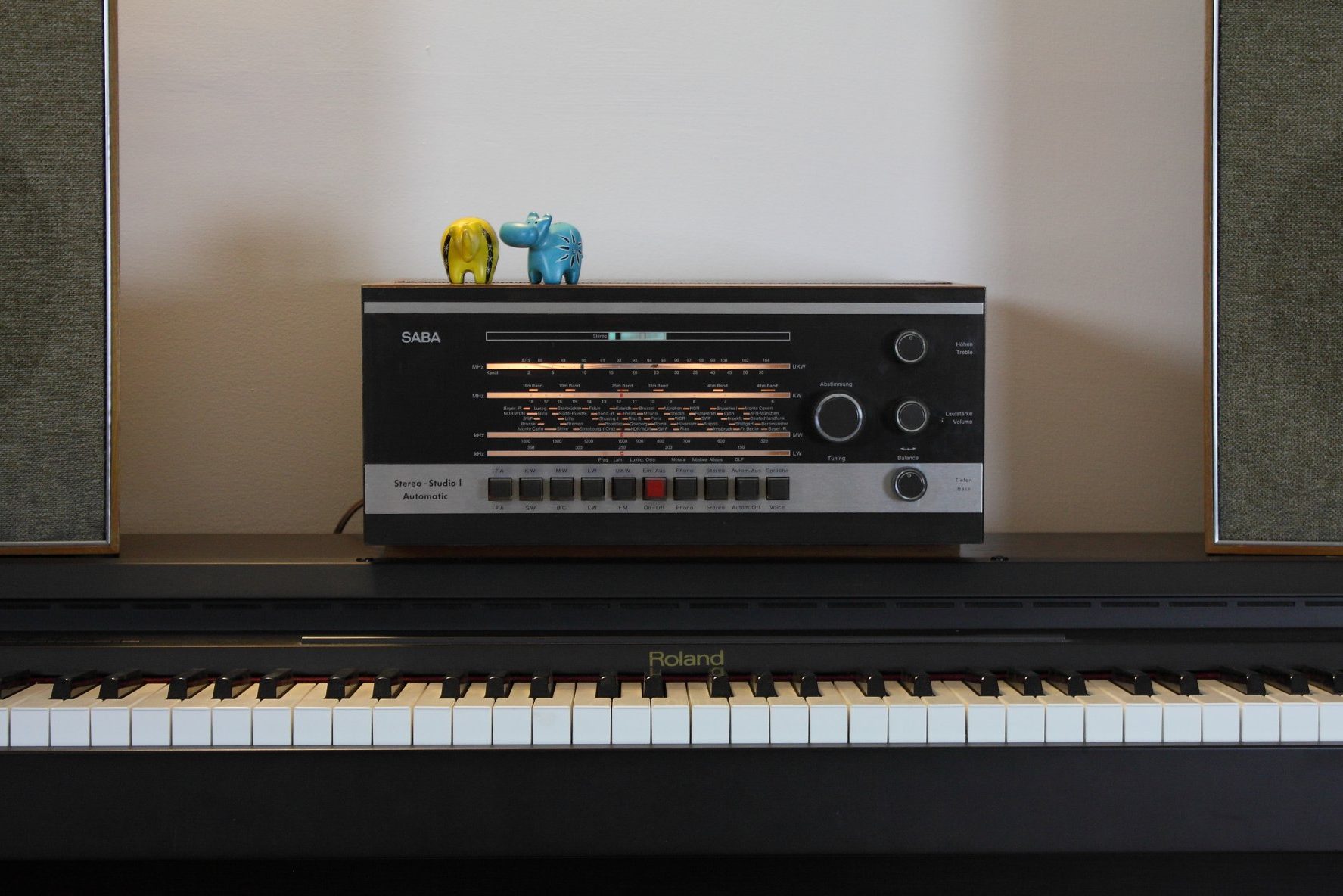







Saba Studio I is the latest Saba receiver built entirely with tubes, apart from the multiplexer. The next devices will have tube tuner section but solid state amplifier stage. A few years later the devices will be completely solid state.
This receiver constitutes an element of break in Saba's production. It sanctions the transition from a design that had remained unaltered from 1953 to a modern, essential and functional idea of industrial design.
The classic canons in the front panels of the German receivers are abandoned, like the windows with the tone controls indication, the tone knobs placed on the keyboard, the knobs symmetrically arranged on the sides of the dial glass etc.
The commands are grouped in the right side of the front panel. They are essential and simple to understand and use. They are also simple to build, which leads to a reduction in the risk of failure.
All the following devices will adopt this rationalization of the front, whose design philosophy will remain valid until the introduction of touch-control displays.
A second break with the past is the engineering oriented to the compaction of the elements.
Everything on this machine has been designed to reduce its size. This is a result that is difficult to obtain on a top range device.
Unfortunately, the restoration of this device was particularly complex due to the need to dismantle many components and entire schede in order to access the circuit sections in question.
The final stage uses excellent ECC808 double triode as preamplifiers and ECLL800 double pentode and triode as final tubes.
Also the radio section uses all multiple tubes, in order to contain the overall dimensions.
The Automatic Frequency Control is very efficient, in fact the frequency stability of this device is well known.
The sound is sweet and well defined, especially thanks to the large output transformators that do not saturate even at high levels of listening.
But the most important advantage is the use of separate loudspeaker boxes. First the cabinet is much more compact, and this makes it easier to place it in the room, second because it is possible to pair the device with the most suitable loudspeakers and place them in the most appropriate way for ideal listening.
These possibilities that the receivers offer, including the Saba Studio I, are very important. If well used they can radically change the sound of a system.
I quote the indication I gave in the description of Saba Freiburg Studio A, as I consider it very important.
Do not place the electronics between the two loudspeakers.
In the pictures the receiver is in the middle of the two loudspeakers, are exclusively for photographic needs.
In a real configuration it must be placed on one side.
Listening to music is a total experience and captivates other senses beyond hearing. Try to listen to a track in the dark and then listen to the same track in the light in your home. Also, listen to the same track used as a soundtrack watching a film. Lastly, try to listen to the same track once more watching the video of the concert.
In all these cases, and in many other situations, the brain will detect and develop sound in different ways. It will create different feelings even though we are listening to the same track.
Placing the electronics in the middle of the loudspeakers distorts our perception of the sound.

Bluetooth receiver embed
Each radio is equipped with a cable for connection to any digital device.
- Bluetooth receiver embed - The unit is equipped with a BLUETOOTH receiver powered directly by the receiver power supply. This makes it possible to control the amplifier from any external digital device as an IPAD, a Smartphone, or a sophisticated multimedia station. So you can hear your preferred web station or your lossesless file without cables on the room. Wireless Receiver can be equipped upon requests.
– Multi Platform Connection – A customized adaptation cable to connect any digital device as Iphone, Smartphone, Laptop, CD Player etc. will be provided with this radio. This special cable suits the different impedances between the modern equipment and the receiver. Furthermore the two stereo channels flow into one without increasing the load to the input unit.


SABA is the acronym for Schawarzwälder-Apparate-Bau-Anstalt meaning engineering institute of Technological appliances of the Black Forest.
The company was founded back in 1835 by Joseph Benedikt with the initial name of Jockele-Uhren, but only in 1923 the production of radio devices began and the company went under the name of SABA.
Toward the end of the 20s SABA became famous with the well-known S35 and in the following years it became the second German producer after Telefunken. During the war SABA produced military equipment and in 1945 the company was completely destroyed by a bombing.
In 1947 the production of radio devices began again and SABA distinguished itself immediately for ist avant-garde and high- quality production.
hey also began to produce TVs (the first PAL color TV is a SABA), house appliances and medical equipment. Many Italians used to work there. The Alnico Greencone loudspeakers became popular for their linearity, power handling, constant impendence that would be employed in each Hi-Fi devices of that time.
The radio devices with motorized tuning became popular as well and SABA became the representative German brand meaning quality, reliability and detailed precision. In the 1970s the decline began. According to specialized magazines of that time not having a Japanese device at that time meant not having Hi-Fi. In the 80s Thompson took over SABA. In the 90s the other way around, having a Japanese device of the 70s meant not having Hi-Fi. They found out that they functioned with a 96% counterreaction and that a device with 0.001 db from 1 to 100 KHz extension did not necessarily sound good.
We do not trust our ears and we do trust what other people say not necessarily with a good purpose.
2007: due to insolvency SABA disappeared from the TLC (Chinese) and Thompson (French) joint venture, and SABA ceased to exist.
Year of production: 1964-65
Operating voltages: 115; 127; 220; 240 Volt.
8 AM Circuits
11 FM Circuits
Wavebands: Medium Waves (OM), Long Waves (OL), Short waves (OC), FM (UKW)
Output power: 2 x 11W
Stereo-Decoder: Saba E1
Dimensions (LHD): 390 x 180 x 315 mm / 15.4 x 7.1 x 12.4 inch
Net weight:14 kg / 30 lb 13.4 oz
9 Tubes:: ECC85 ECH81 EF89 EBF89 EMM803 2xECC808 2xECLL800

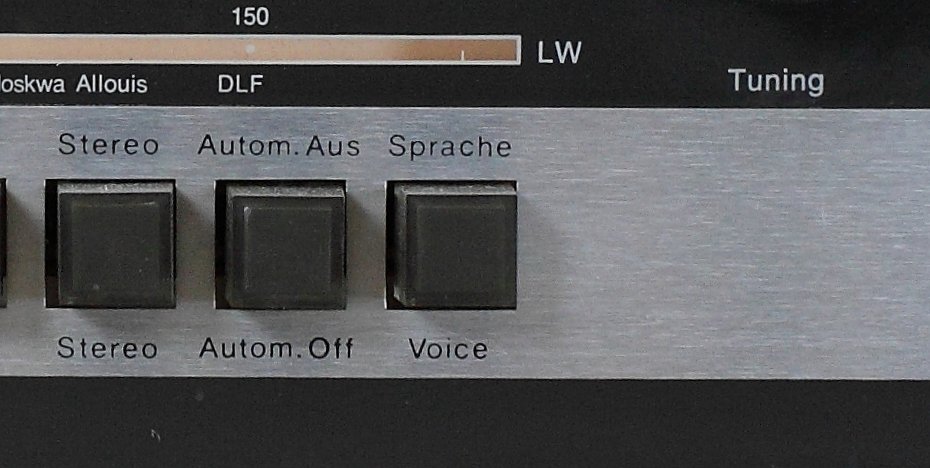
The correction system of the frequency response is made of one button, SPRACHE/VOICE.
They allow the emphasis of high and low tones while listening to music and of medium tones while listening to spoken programs.
The device is equipped with separated tuning mechanisms for AM and FM bands and for each of the FM bands.
There is only one tuning knob but the selector changes on a cable and pulley system that are separated according to the band.
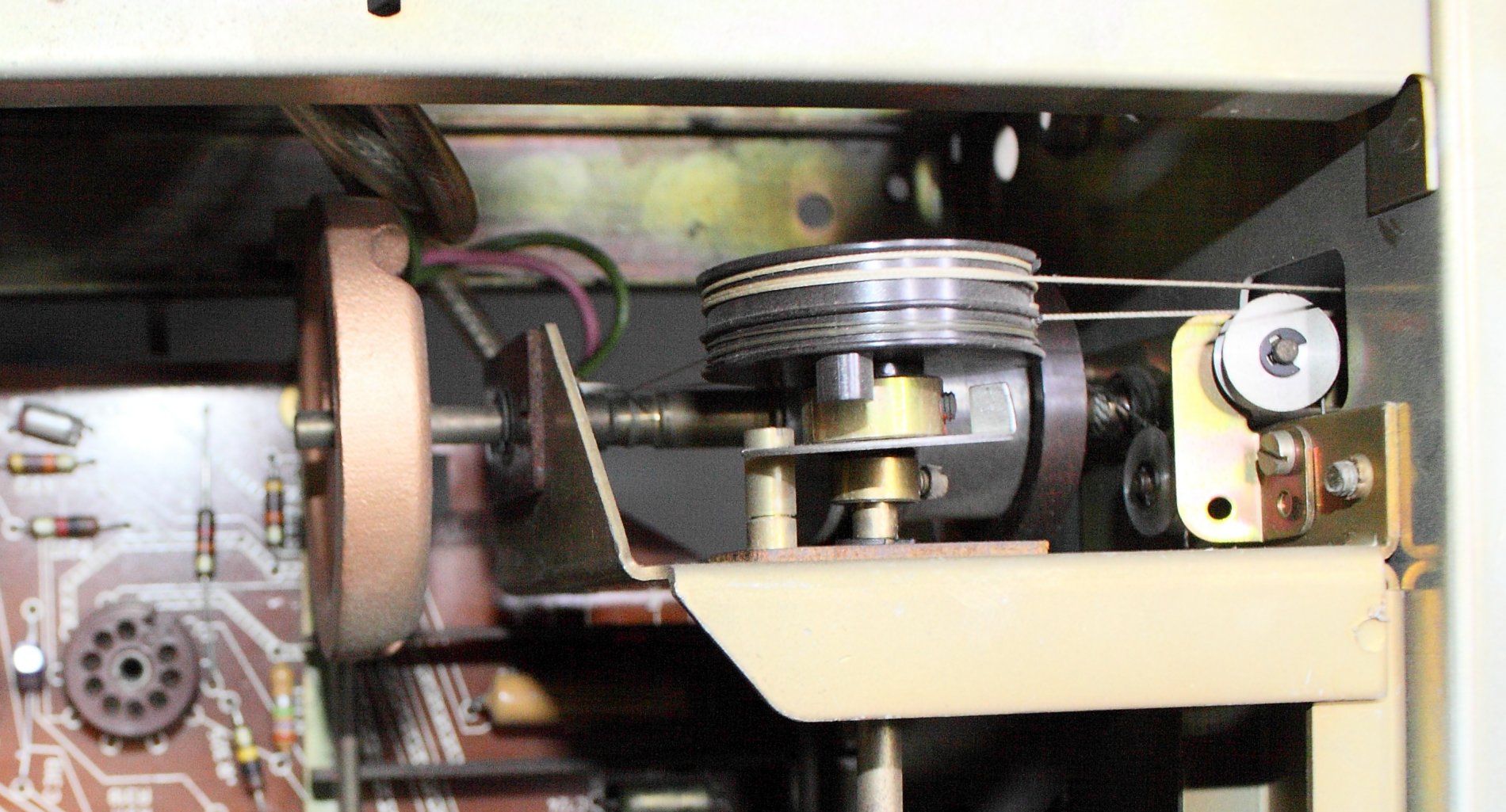

The tuning indicator is an EMM803. A tube that is rarely used and rather expensive. It is, in fact, a tuning indicator with a double display.
A section of the EMM803 is used to indicate the correct tuning of the stations.
The other section, the smaller one, is used to indicate that you are listening to a stereo station broadcasting.
Most of the radios and receivers do not have a stereo decoder, so listen in stereo is only possible when the phono input is selected.
Saba Studio I Automatic, instead, is equipped with the Saba E1 stereo decoder, so actual stereo listening is also possible in FM.
When pushed, the stereo button allows the listening and reception of FM stations in stereo.
If you are listening to an FM station that is broadcasting in stereo, this button inserts the stereo decoder, and the left and right channels work separately.
If the button is not pushed (mono) the input of the two channels is shorted, then the left and right channels process the same signal.

This unit is equipped with its original speakers and original packaging.
Here a list with the characteristics declared by the manufacturer:
SABA HI-FI Lautsprecherbox I
2 way Infinite Baffle Speaker
1 Tweeter 8x15 cm
1 Mid-Woofer 18x24 cm
Frequency response: da 65Hz a 16 kHz
Average Power: 15W
Max Power: 20W
Impedance 5 Ohm
Internal Box Volume 12 l
Measurements: 36 x 22 x 20,5 cm/14.2 x 8.7 x 8.1 inch

The keys have an indication of their function in German (line above) and in English (line below).
They have respectively the following functions:
FA - Ferrite Antenna insertion for Medium and Long Waves
KW - Shortwave
MW - Medium Waves
LW - Long Waves
UKW - FM
EIN-AUS - On / Off
Phono - Turntable / Aux Input
Stereo - Stereo / Mono switch
Autom.Aus - AFC insertion in FM (Automatic Frequency Control)
Sprache - Music / Voice switch
On the right side all the controls are placed
The first knob at the top (Hohen / Treble) is the treble one
Below we find the big tuning knob (Abstimmung / Tuning)
At the side you can see the volume knob (Lautstarke / Volume)
Coaxial with the volume knob you can see the left and right channel balance lever (Balance)
Below we find the low tone control knob (Tiefen / Bass)
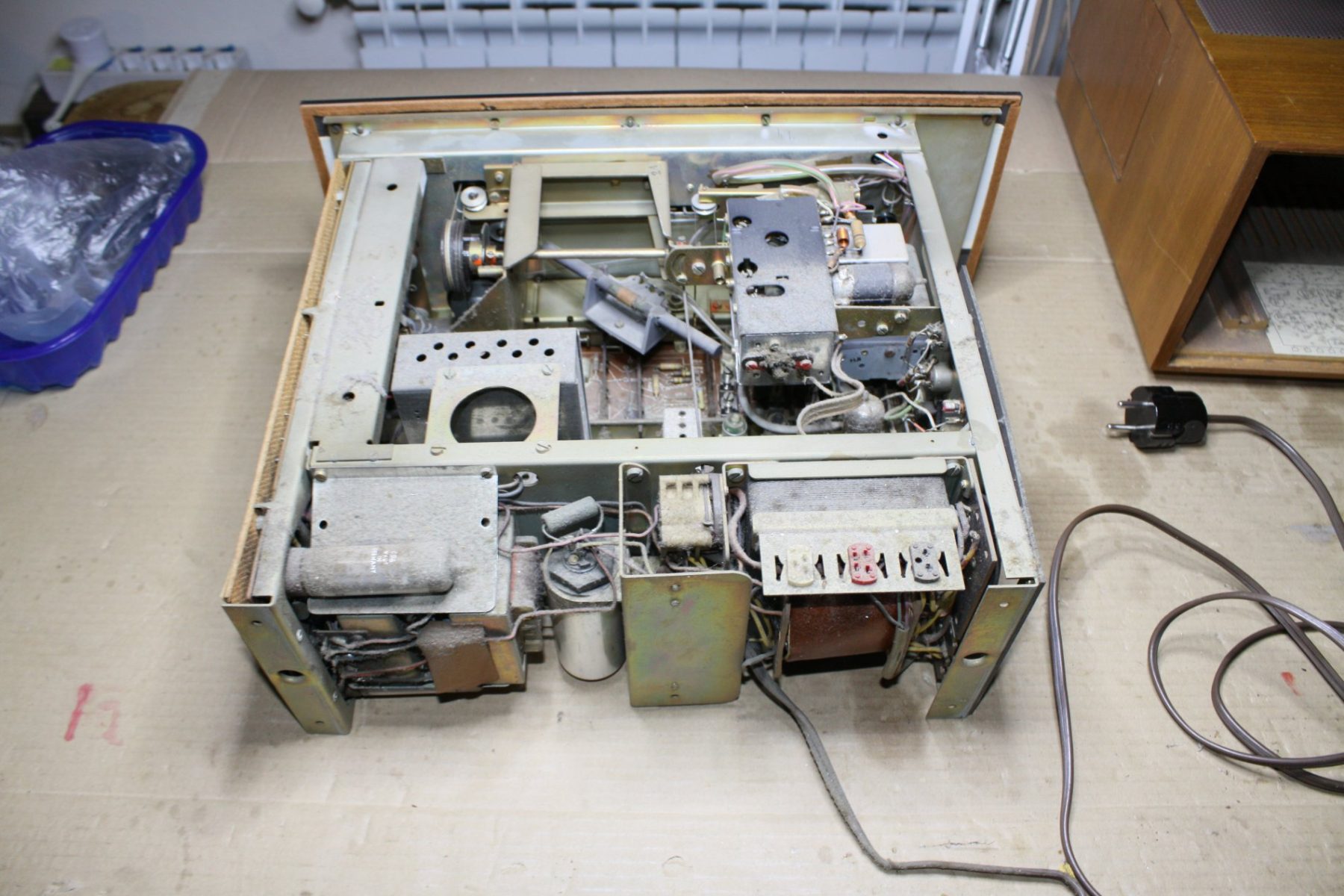


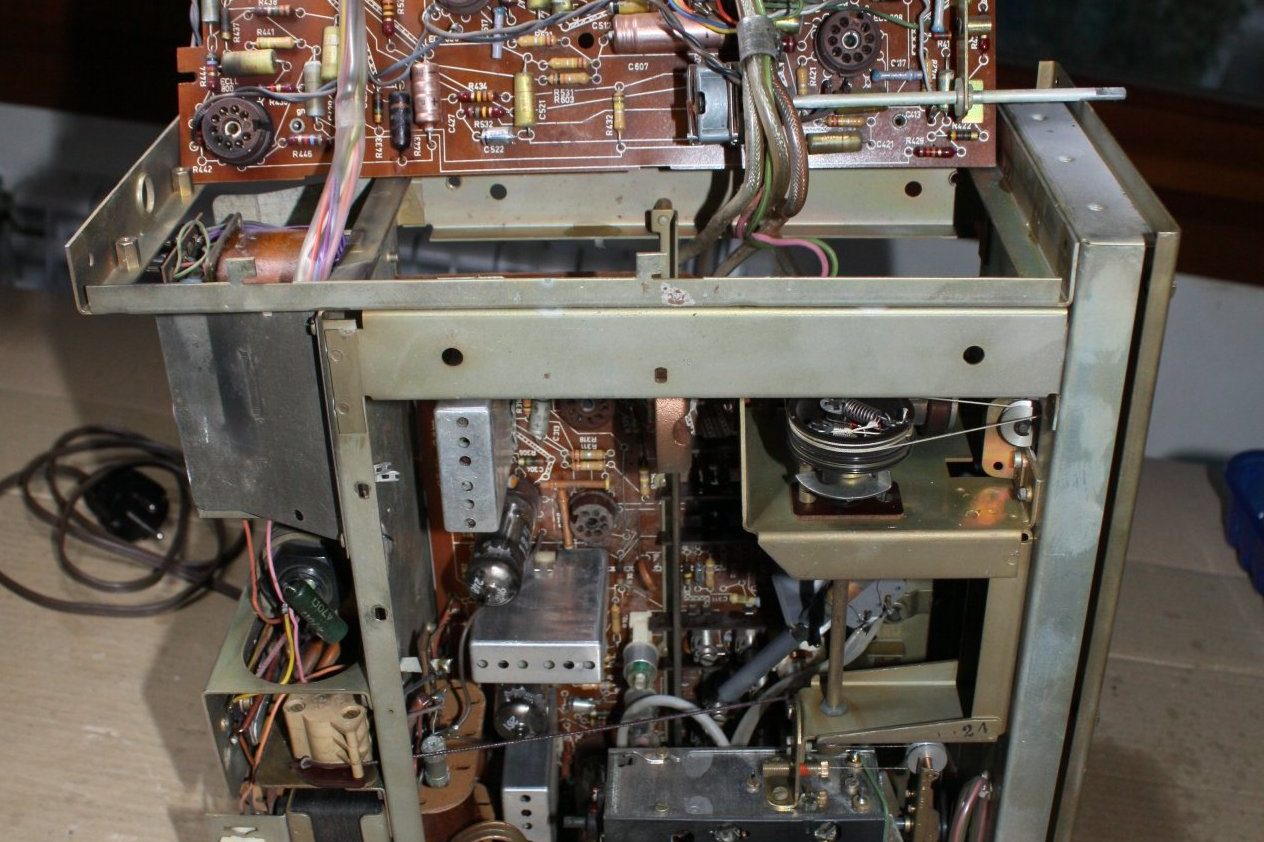



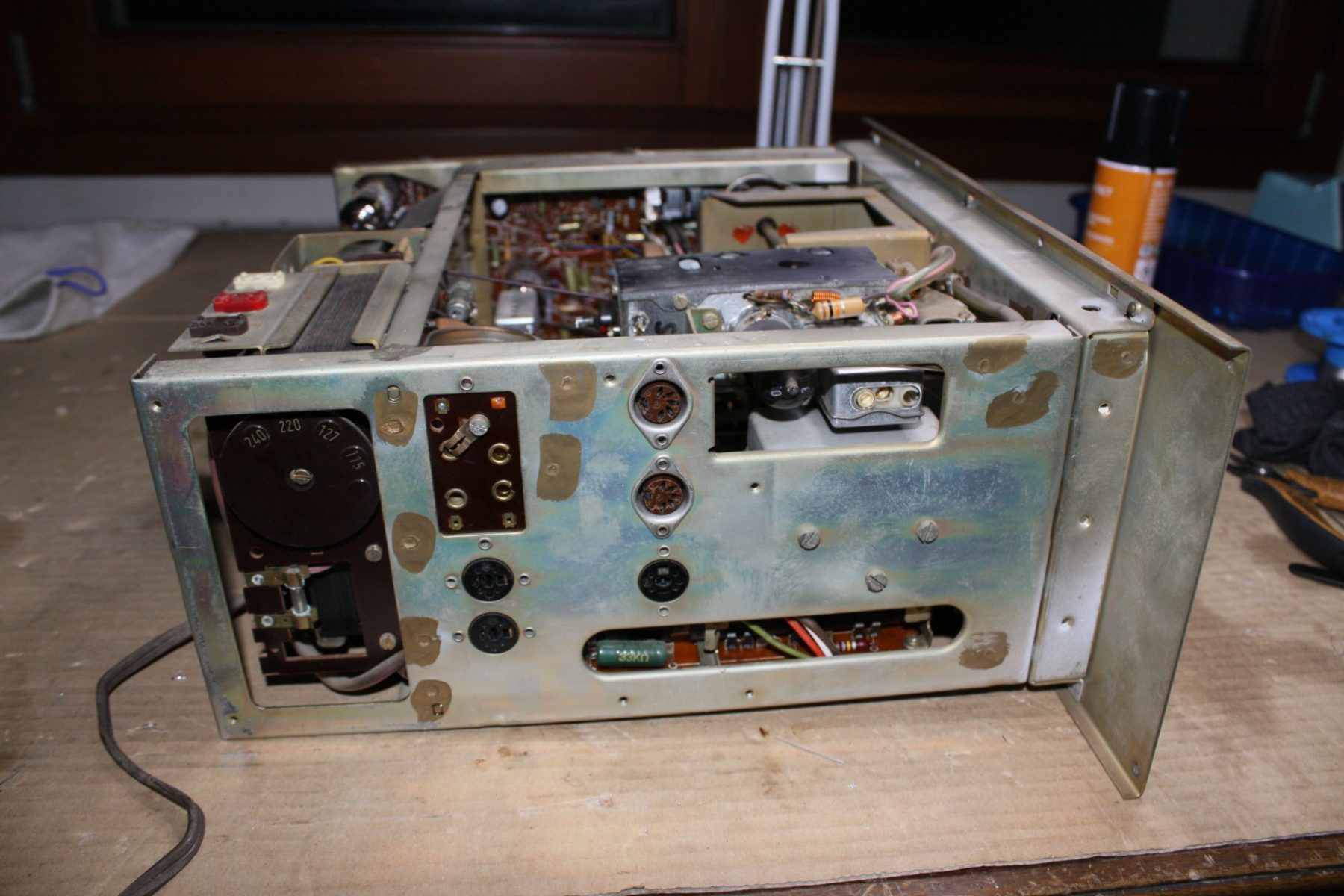

 162w - en
162w - en

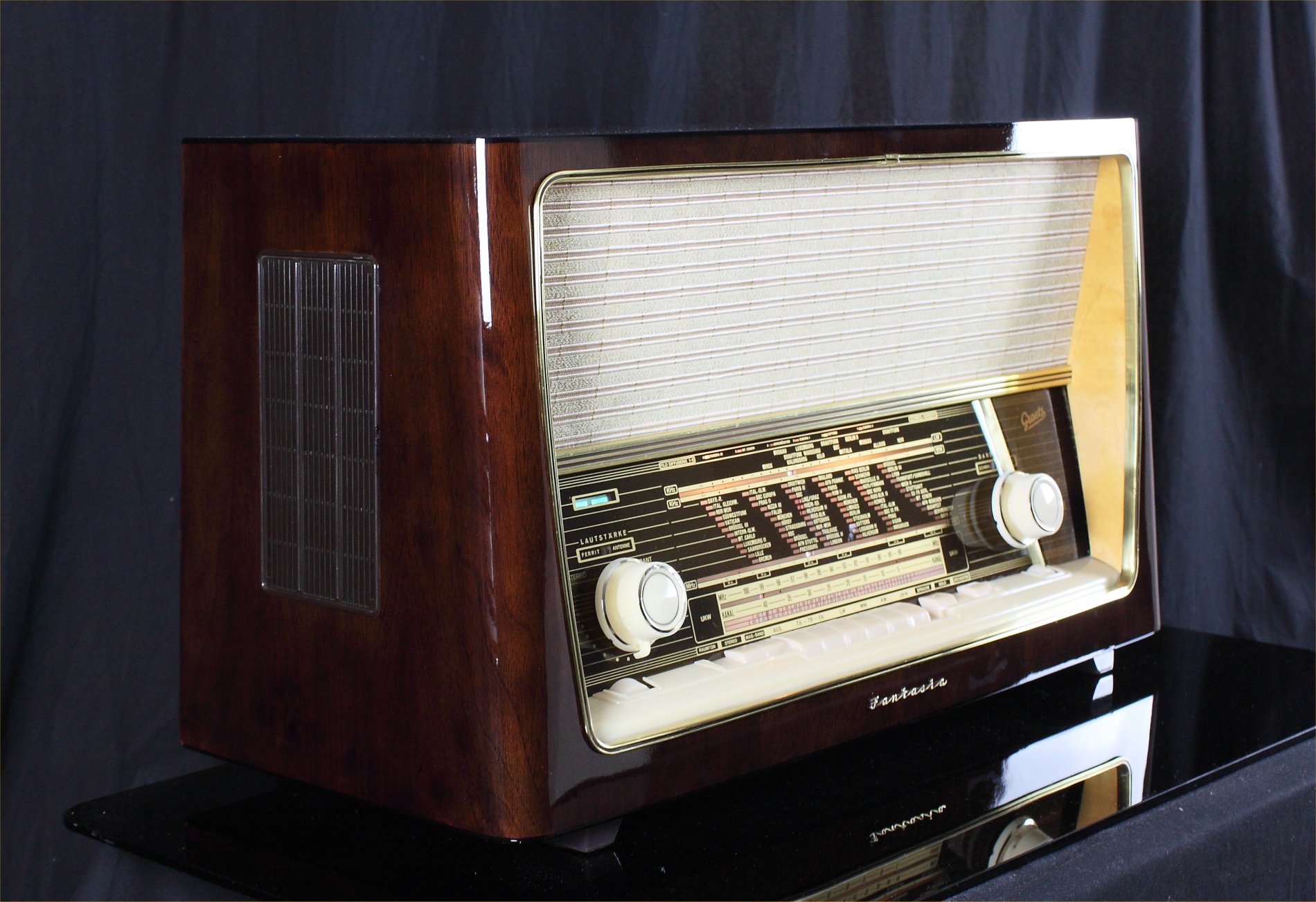
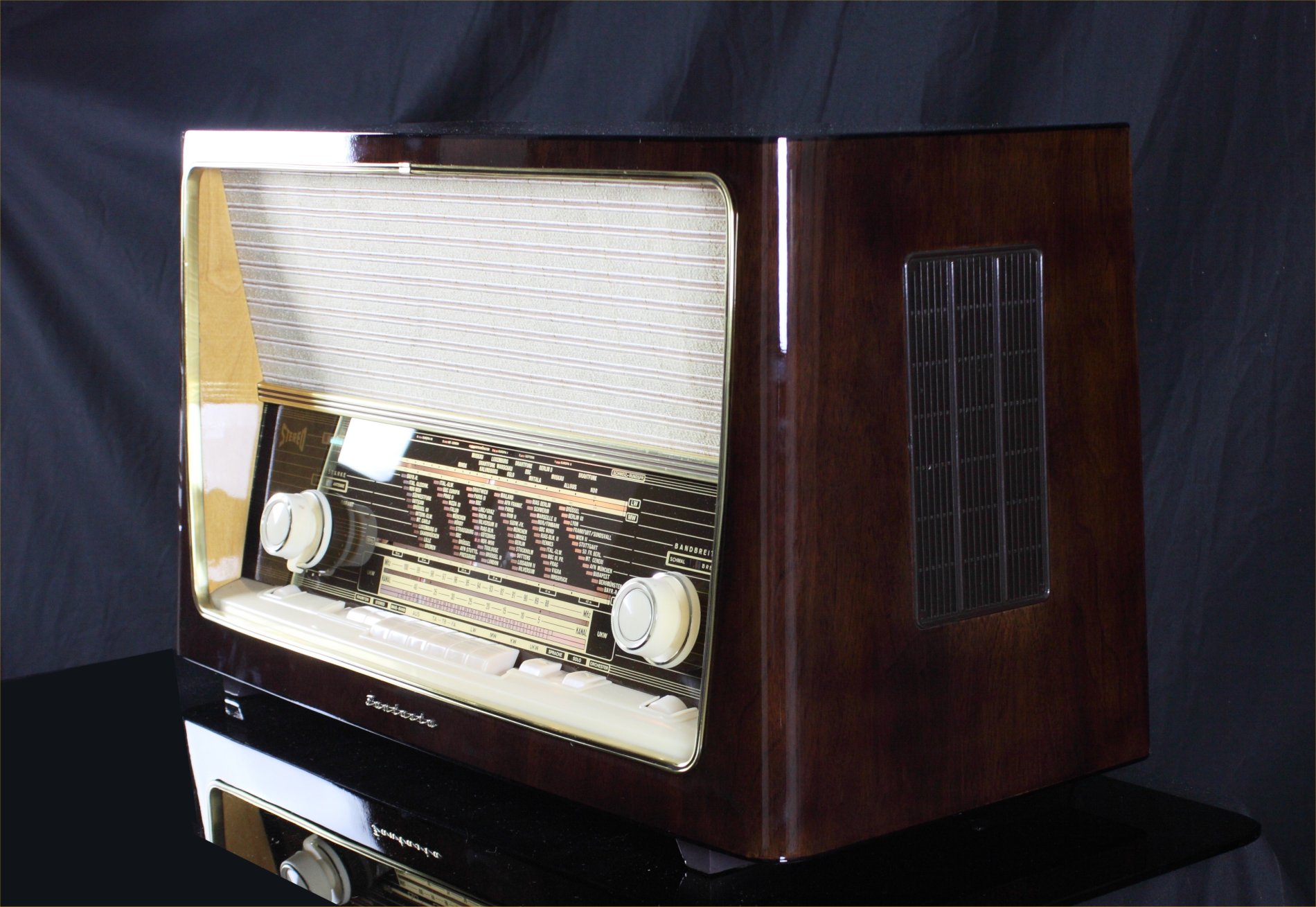


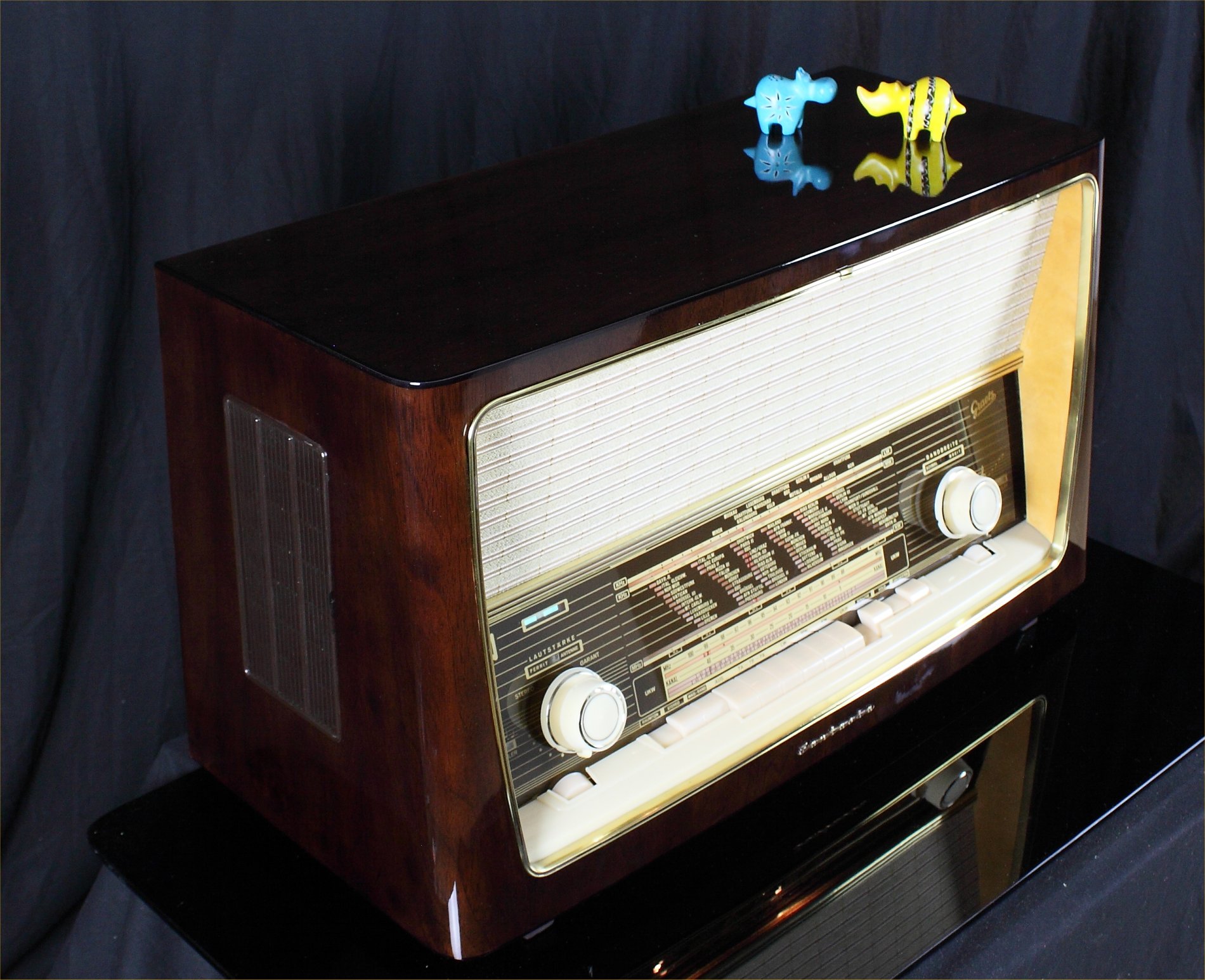





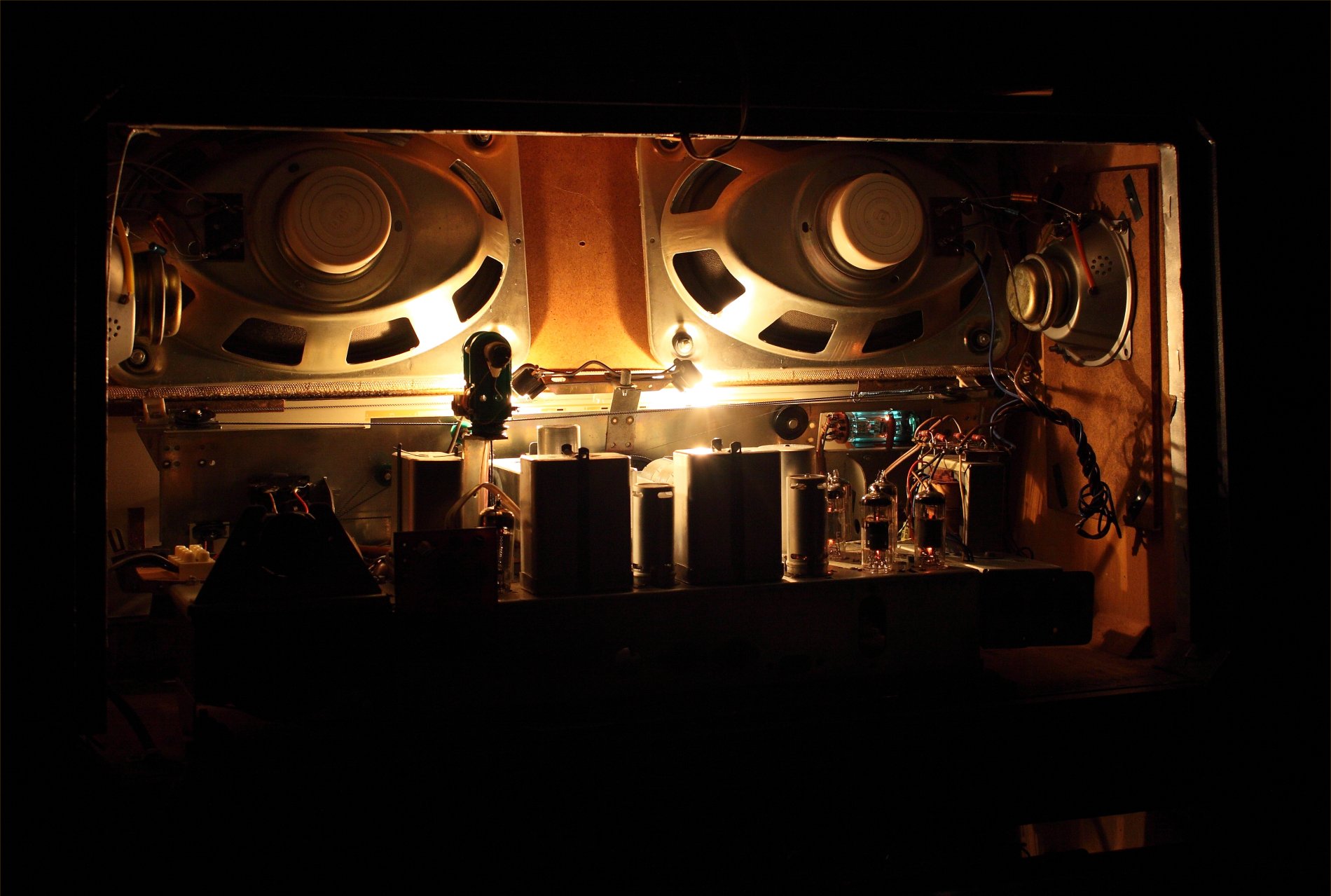
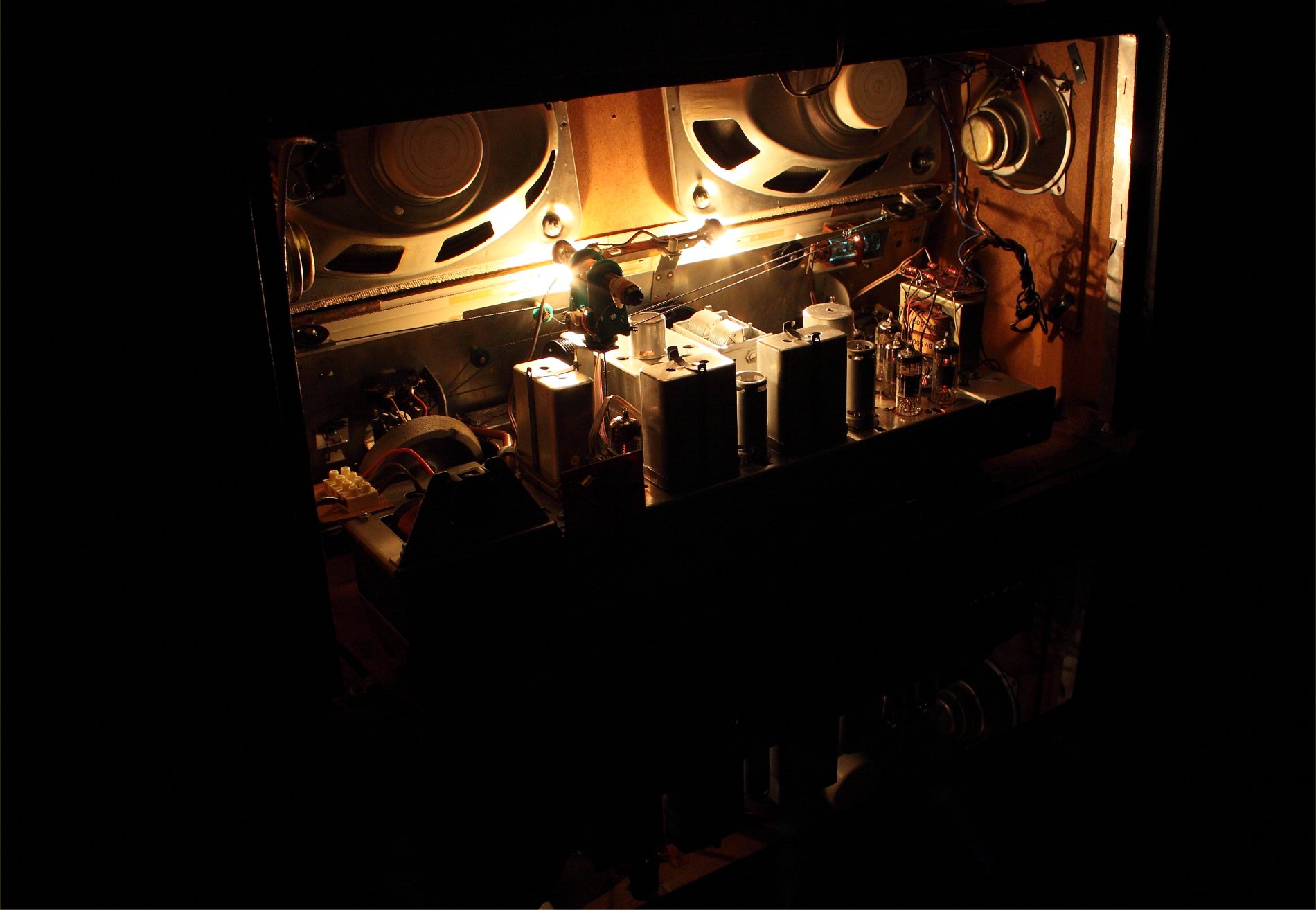

Graetz is one of the most prestigious German radio manufacturers. The Graetz Fantasia 922 Luxus - Stereosuper was the flagship model in 1960.
Graetz devices have always been appreciated for their refined and elegant finish, as much as for the innovative acoustic solutions and their respective patents.
In designing the line of their flagship model, Graetz designers chose a classical and statuary kind of elegance.
The cabinet is in dark wood and the paint is very shiny. The sides with their variable width make the profile look slimmer. The base looks wide and solid, without making cabinet look heavy.
The strongly embossed texture of the canvas covering the speakers, the golden lines highlighted on the dark display and the light knobs make the visual impression even more pleasant and lively.
The stylistic attention, as in Graetz's tradition, is very accurate.
The Amplifier Section is the best that could be imagined at the time.
The Volume potentiometer has two sockets for loudness (red). As known, in fact, when listening at a very low volume the bass frequencies and the treble are not perceived with the same sound intensity as the mid, which appear to be predominant.
The loudness modifies the response of the preamplifier stage specularly to the Fletcher-Munson curves. This allows to maintain the correct perception of the sound, even at low volume levels.
The Tone Control was designed using the complex Baxandall circuit (green). The advantage of such circuit is its high precision, while the disadvantages are its cost and construction complexity. Much simpler and cheaper circuits were normally used. But not in this device.
The Balance (pink) is inserted into the feedback circuit. It works by changing the percentage of signal that is downgraded/relegated to each of the two channels. This signal is in inverted phase compared to the main signal. In this way, by acting on the balance, the level of one channel is lowered in comparison with the other and, at the same time, the distortion is reduced.
By turning the knob at the ends, this type of balance does not cause a reset of the volume of the channels as in the modern balance control, but it is to be considered a “fine” adjustment of the level between the two channels.
The Phase Inverter (blue) is of the Catodina type. As an advantage, it is very well-balanced. This circuit is still used in hi-fi amplifiers.
The Push-Pull section (blue) uses two separate tubes (EL95) for each channel. The EL95 are pentodi expressly designed for audio use.
In the receivers, even high-class, provided with Push-Pull output power, bulbs were normally used, which enclosed multiple valves (ELL80, ECLL800). In this way, space and components were saved. But if one of the pentods inside thei complex tube decays differently, the reproduction is altered, with an exponential increase in the crossover distortion. These multiple tubes, once common, are rare and expensive today, so the replacement can be economically significant. The use of separate pentods, as in the Graetz Fantasia 922, eliminates this problem, and it is possible to select pairs of EL95 with the same characteristics.
Only the Graetz Fantasia 922 and 1022 and the Telefunken Opus 2430/2550 use 4 x EL95 in the stadio finale.
The Tuner Section is also very well taken care of.
The most interesting feature is the high selectivity of this device, due to the twin IF stage. The two EF89 pentods and the numerous IF transformers, in fact, are visible in the photos.
In FM an additional transformer has been implemented, accordato all'interno del convertitore in order to make more stable and insensibile ai disturbi the reception of such frequencies.
Finally, the L0udspeakers set.
The Graetz 922 Luxus features 6 loudspeakers. Four are placed frontally and two on the sides.
The four front loudspeakers are two tweeters and two oval wideband. The tweeters are placed in front of the wideband, on the same axis. This particular arrangement has the great advantage of making the origin of the sound close to that produced by a point source.
This characteristic corresponds to a very linear scatter diagram, and therefore to a much more regular realistic sound image than if the tweeters and the woofers were placed side by side.
The two loudspeakers placed on sides are, at such power level, the mid / tweeters, and allow a balanced listening from any position with respect to the radio, frontally or sideways.
This last feature makes the device very enjoyable as for daily listening. You will no longer want to turn on the HI-FI system ...

Bluetooth receiver embed
Each radio is equipped with a cable for connection to any digital device.
- Bluetooth receiver embed - The unit is equipped with a BLUETOOTH receiver powered directly by the receiver power supply. This makes it possible to control the amplifier from any external digital device as an IPAD, a Smartphone, or a sophisticated multimedia station. So you can hear your preferred web station or your lossesless file without cables on the room. Wireless Receiver can be equipped upon requests.
- Multi Platform Connection - A customized adaptation cable to connect any digital device as Iphone, Smartphone, Laptop, CD Player etc. will be provided with this radio. This special cable suits the different impedances between the modern equipment and the receiver. Furthermore the two stereo channels flow into one without increasing the load to the input unit.


The Ehrich & Graetz metalworks was a factory established in 1866 in Berlin by Albert Graetz (1831–1901) and the tradesman Emil Ehrich (died 1887) under the name "Lampen-Fabrik Ehrich & Graetz OHG" (E&G).
By 1897 the firm was controlled by Albert's sons, Max Graetz, and Adolf Graetz. The company grew rapidly, and in 1899 factory complexes were built in Berlin, in the United States, France, the UK, and Bombay.
Around 1910-1916 Max Graetz developed the famous Petromax Lantern. Around 1925 the factory also produced radios, and other electrical appliances under the name Graetzor.
In the Second World War, just as in the First World War, the company was part of the war industry. With the use of forced laborers from France, Russia and the Netherlands the company made huge gains in production.
At the end of April 1945 the factory was claimed by the Russian army.
In 1949 the firm became part of the "peoples" program, "VEB-VolksEigenerBetrieb" and since 1950 "VEB Fernmeldewerk, Berlin Treptow (RFFT)." VolksEigenerBetrieb, means that the factory was owned by the people for the people (Communism)
In 1948 Erich, and Fritz Graetz founded a new company in Altena, Germany known by the name The Graetz Firm, which was successor to the lost family company in Berlin. The new company produced mainly radios and televisions.
In 1961 the company was then sold to Standard Elektrik Lorenz (SEL) AG, but since 1987 has been to the present owned by the Finnish company Nokia.
Year of production: 1960/61
Superheterodyne IF 460/10700
8 AM Circuits
13 FM Circuits
Wavebands:
Medium Waves(OM), Long Waves (OL)
Short waves (OC), FM (UKW)
Loudspeakers:
2 Elliptical mid-woofers
4 Cone mid-tweeters
Dimensions (LHD): 680 x 395 x 310 mm / 26.8 x 15.6 x 12.2 inch
Net weight: 17 kg / 37 lb 7.1 oz
13 Tubes: ECC85, ECH81, 2 x EF89, EM84, EABC80, 3 x ECC83, 4 x EL95


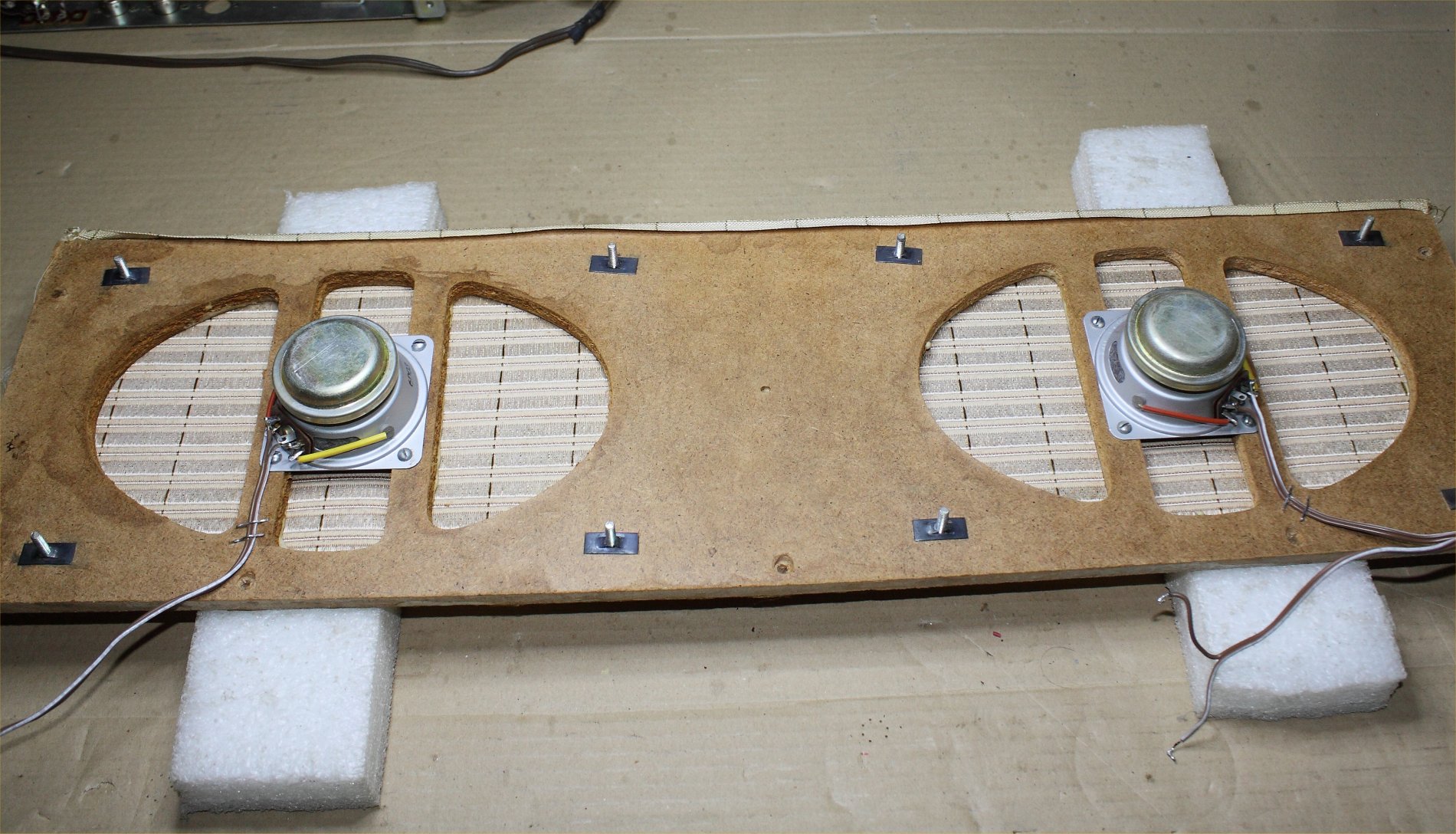

As previously mentioned, the most luxurious model produced by Graetz in 1960, the Fantasia 922, features 6 permanent magnet speakers.
The low and middle notes are reproduced by two large conical speakers, elliptical 26x17 cm.
High-pitched notes are reproduced by four cone loudspeakers. Two measuring 10 cm and two 6cm.
From the acoustic point of view, the interesting thing is not only the number of loudspeakers, but also their placement. The two 6 cm tweeters, in fact, are attached to the frontal Mid/Woofer, in a concentric position.
This is always my favourite placement and it is used in many of the best modern diffusers, such as KEF, TAD and Tannoy and many more.
The main advantage of a coaxial is the linearity of the off-axis response, both on the horizontal and vertical plane.
With the traditional positioning of the loudspeakers, the mid/woofer next to the tweeter, the off-axis listening is consistently disturbed by the phase cancellations caused by the length differences of the route between the two drivers.
The 3D graphics on the side display the measurements off the vertical axis of a box with coaxial loudspeaker KEF LS50 and one with traditional positioning of the YG Anat III. The difference is noticeable. (source: www.acousticfrontiers.com )
While frontally such an excellent configuration was used, what was done laterally is no less. In fact, on each side was installed a cone tweeter, protected by a metallic dome, Isophon HS10.
This loudspeaker has a very wide frequency response, from 1.000 to 20.000 Hz. So that all frequencies with pretty strong directivity features are reproduced also laterally.
The response to low frequencies is entrusted to the big frontal elliptics. In fact, low-frequency waves – as they are not directive by nature – do not need lateral loudspeakers in order to be perceived.
With this set of loudspeakers placed as described, the response is clearly quite linear from all angles, frontally, laterally and three-quarter.
As they are loudspeakers with an Alnico magnet, they are very efficient. The 7 Watts of each of the two channels are transformed into a noticeable acoustic pressure.
To provide a reference, during the listening at “normal” volume, not bothersome, a 0,2 Watt power delivery on the loudspeakers is measured.
The sound power is thus amply sufficient to sonorize even large environments.
The use of two separate Mid/Woofers has another advantage. The cones have less inertia compared to a larger single cone. In this way, the dynamic response is quick, and the lows are curbed and without resonance.
This feature allows to make the most of the AUX-in with lossesless digital files or CD, providing a brilliant reproduction rich in dynamism.

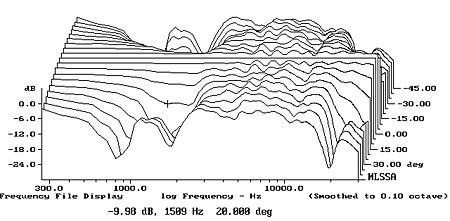
KEF LS50
vs.
YG Anat III
(fonte: www.acousticfrontiers.com )

Three keys are collected to the left of the main keyboard. The first two indicate respectively:
Raum(klang)Ton - Surround - The appliance works in MONO. It should be used when any of the keys LW, MW, SW, UK are pressed
Stereo - The appliance works in STEREO. It should be used when any of the TA, TB buttons are pressed.


The third key to the left side of the main keyboard is used to turn off the magic eye to avoid unnecessary consumption.
It must be used when the TA or TB keys are pressed and when you are tuned to a station in a stable manner and then there is no longer any interest in checking the correct centering.
Mag(isches)-Band – turns the Magical eye off

The Klangregister (Musical Register) group also consist of three buttons, which are very intuitive.
Sprache - Voice
Solo - Solo
Orchester - Orchestra
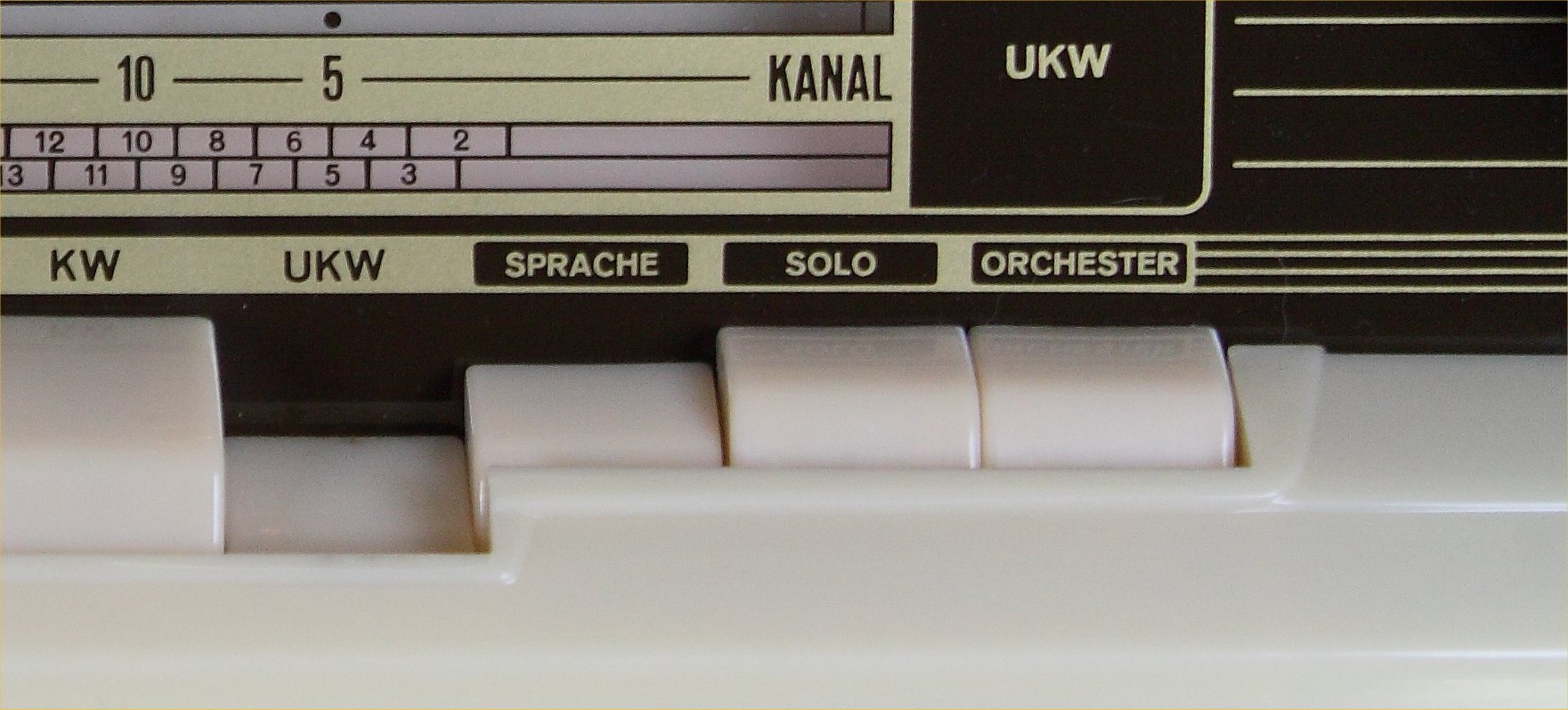
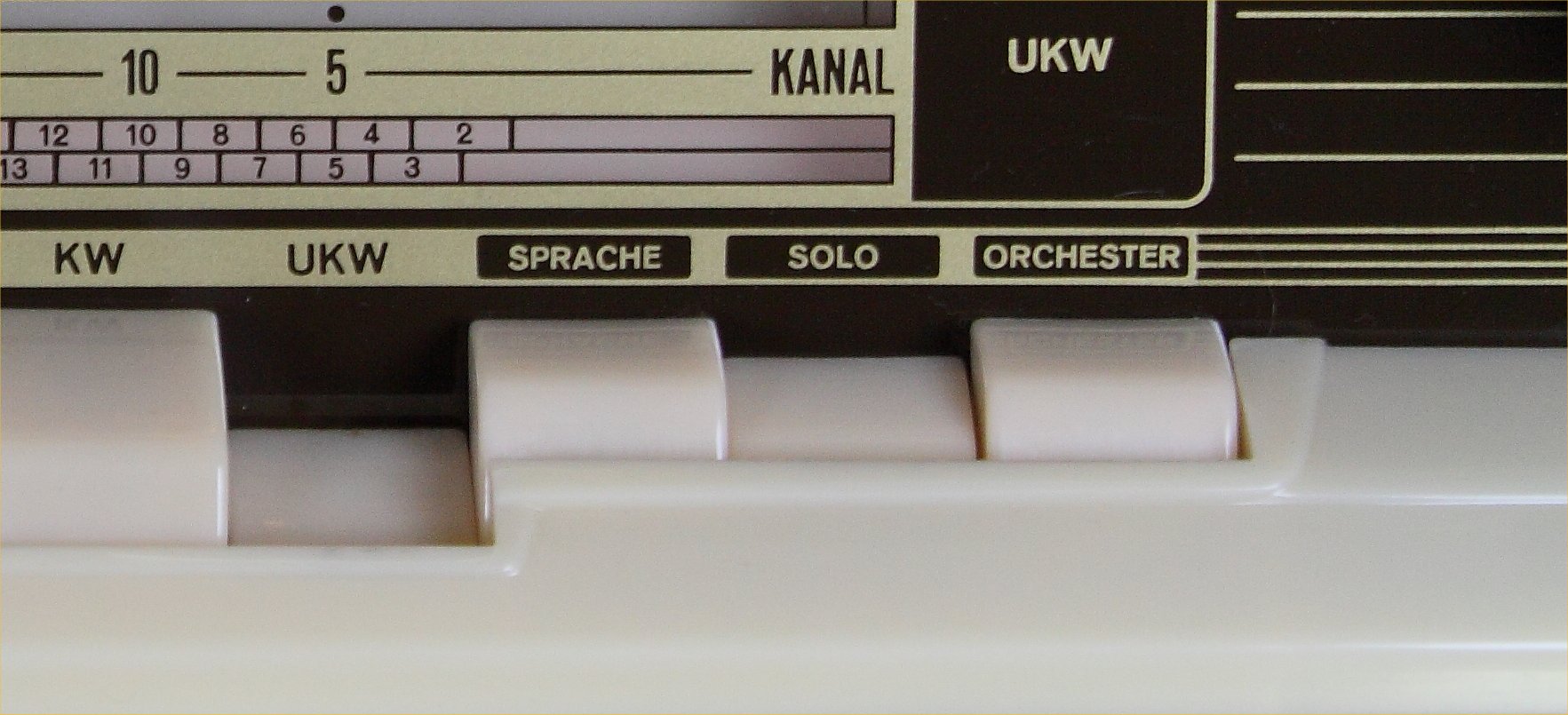
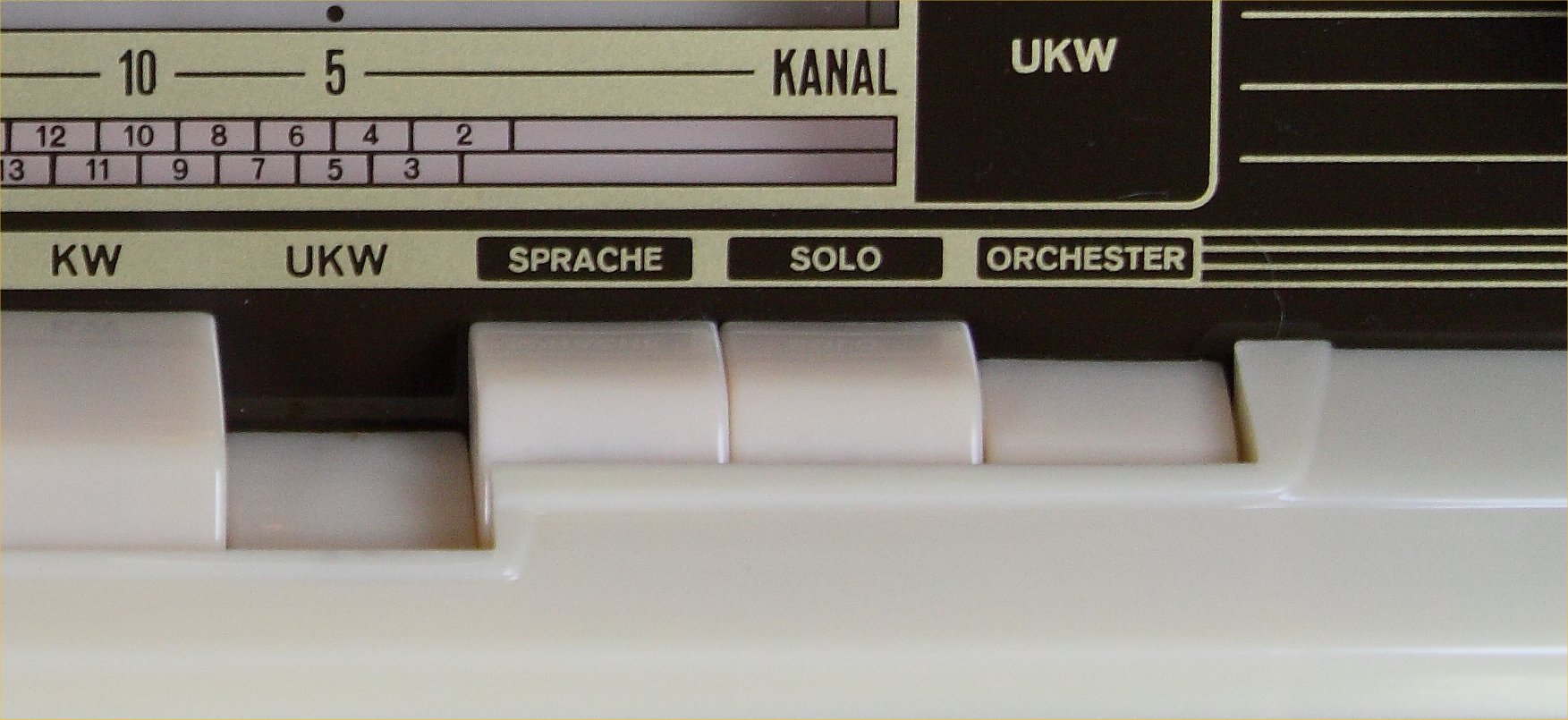
The tones control system is very efficient. Above the large tone control knobs there is a band that lights up gradually indicating the emphasis on the band on which it acts.
By pushing any of the Klangregister buttons, the tone-controls are excluded, since the frequencies connected with the chosen button are enhanced.
For this reason, the lights that enlighten the scale which indicates the tone-control position are turned off, too. They can be turned on again by pushing the Raumklang button and switching back to the manual setting of the favourite response curve.
BASS MAX

BASS FLAT

BASS MIN

TREBLE MIN

TREBLE FLAT
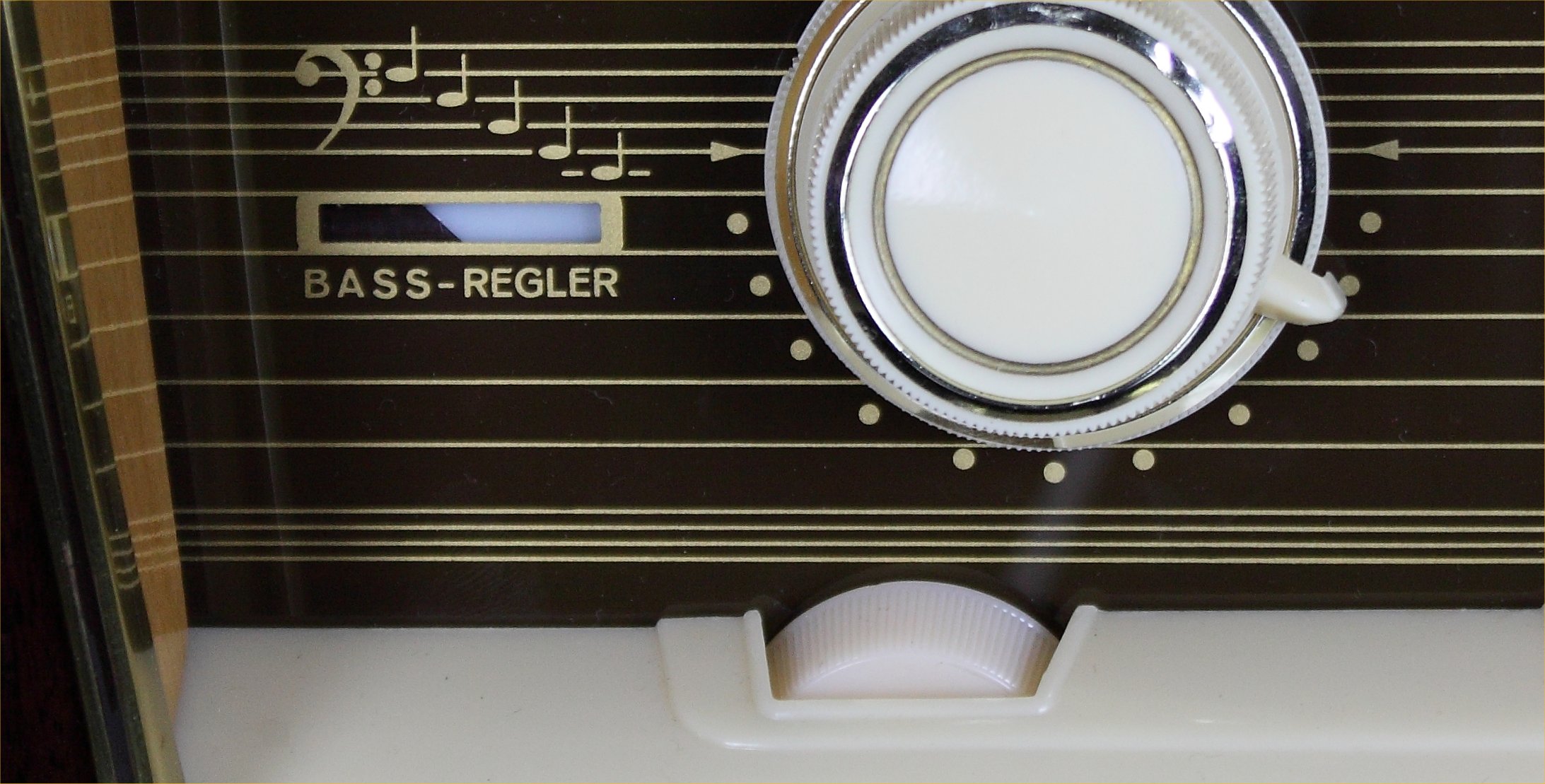
TREBLE MAX

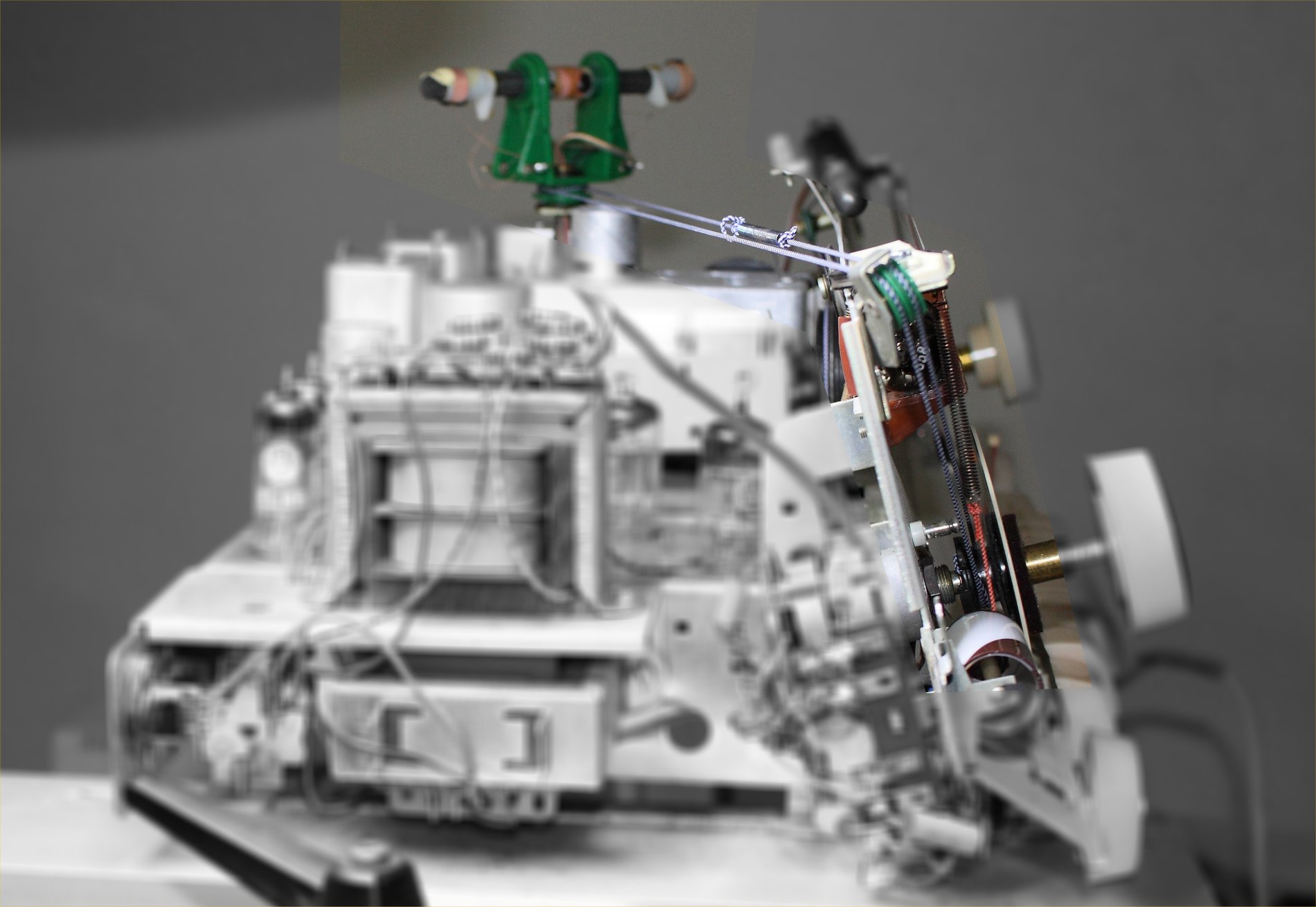
Inside the cabinet there is a dipole for FM reception and a ferrite rotating aerial for AM reception.
Ferrite aerial can be rotated from the outside to achieve a perfect tuning of the device in the AM.
In this picture you can see the rotation mechanism, and the aerial position indicator.
The reception sensitivity with internal aerials is very good. This unit was in fact produced when there were not many radio stations, and those available were far from each other.
Using an external aerial sensitivity is further increased.


The magic eye has of course been replaced.
The unit is equipped with mechanisms that keep AM and FM bands separate.
The tuning knob is single, but a selector switch commutes between cable systems (all steel made) and pulleys dedicated to each band.
The movement is transferred to both mechanisms with a system of pulleys and separated gears.











Left from the top:
- The Magic Eye that indicates the perfect tuning of each station.
- The antenna position indicator.
- The volume control (with built-in loudness)
- Axially this balancing.
- The rotation command of the ferrite antenna is still in axis.
- The bass control knob
In the center:
The AM display for long, medium, short waves and the FM display.
Right from the top:
The BANDBREITE indicator (High / Low selectivity in AM)
The tuning knob, whose movement is very pleasant being supported by a large flywheel
On the same axis there is a selector to control the selectivity in AM.
-The treble control knob.
The keyboard:
RAUMTON - Surround - Mono
STEREO - Stereo
MAG.BAND - Magic Eye
AUS - Switch off
TA - Turntables
TB (TA + FA) - Recorder
FA - Ferrite antenna for Medium and Long Waves
LW - Long Waves
MW - Medium Waves
SW - Shortwave
UKW - FM
SPREACHE - Voice
ONLY - Solo instrument
ORCHESTER - Orchestra

Output for external speakers.
Socket for recorder (tonbandgerat).
Turntable input (Tonabnehmer)
AM and FM aerial inputs and ground socket
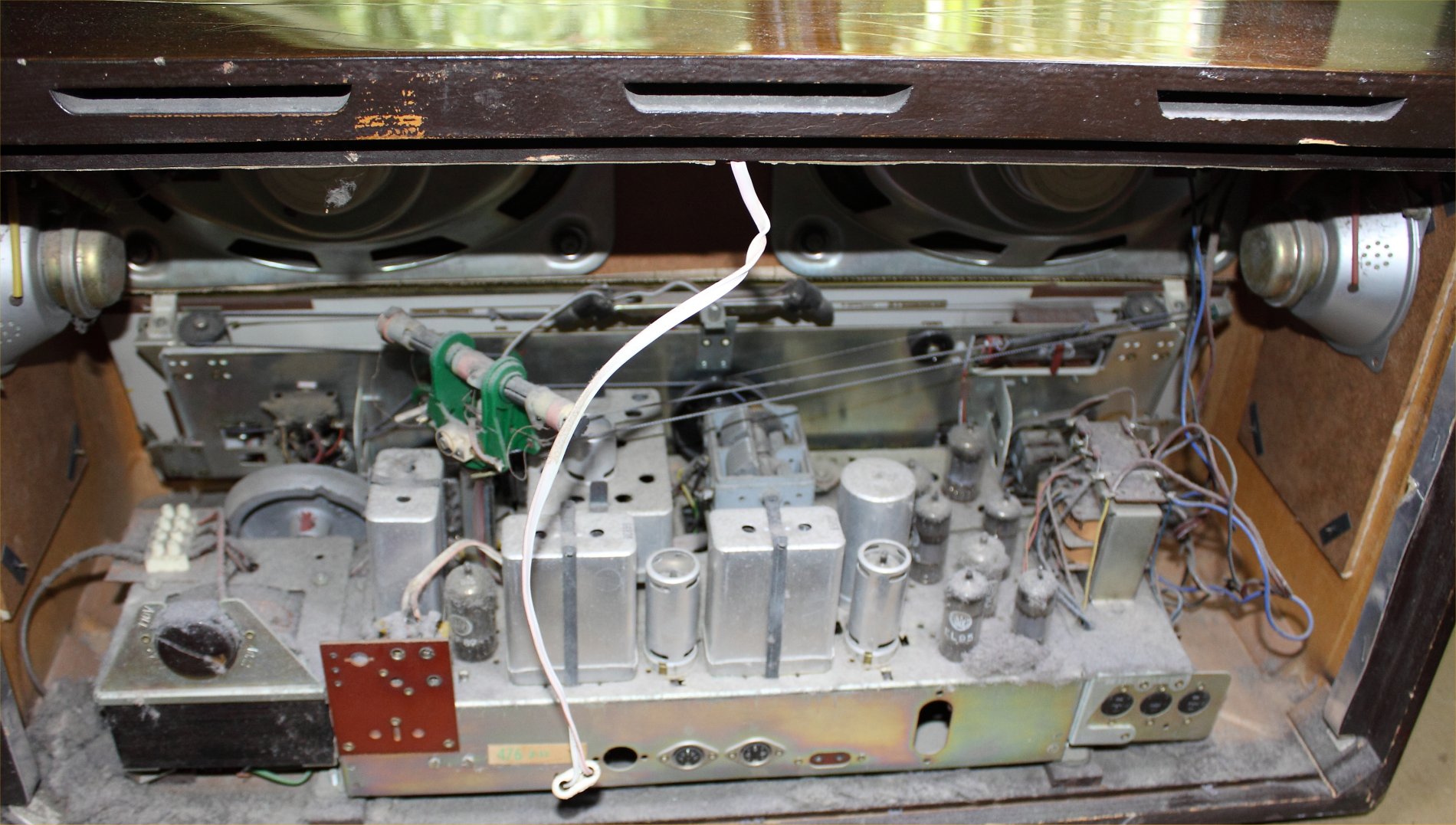








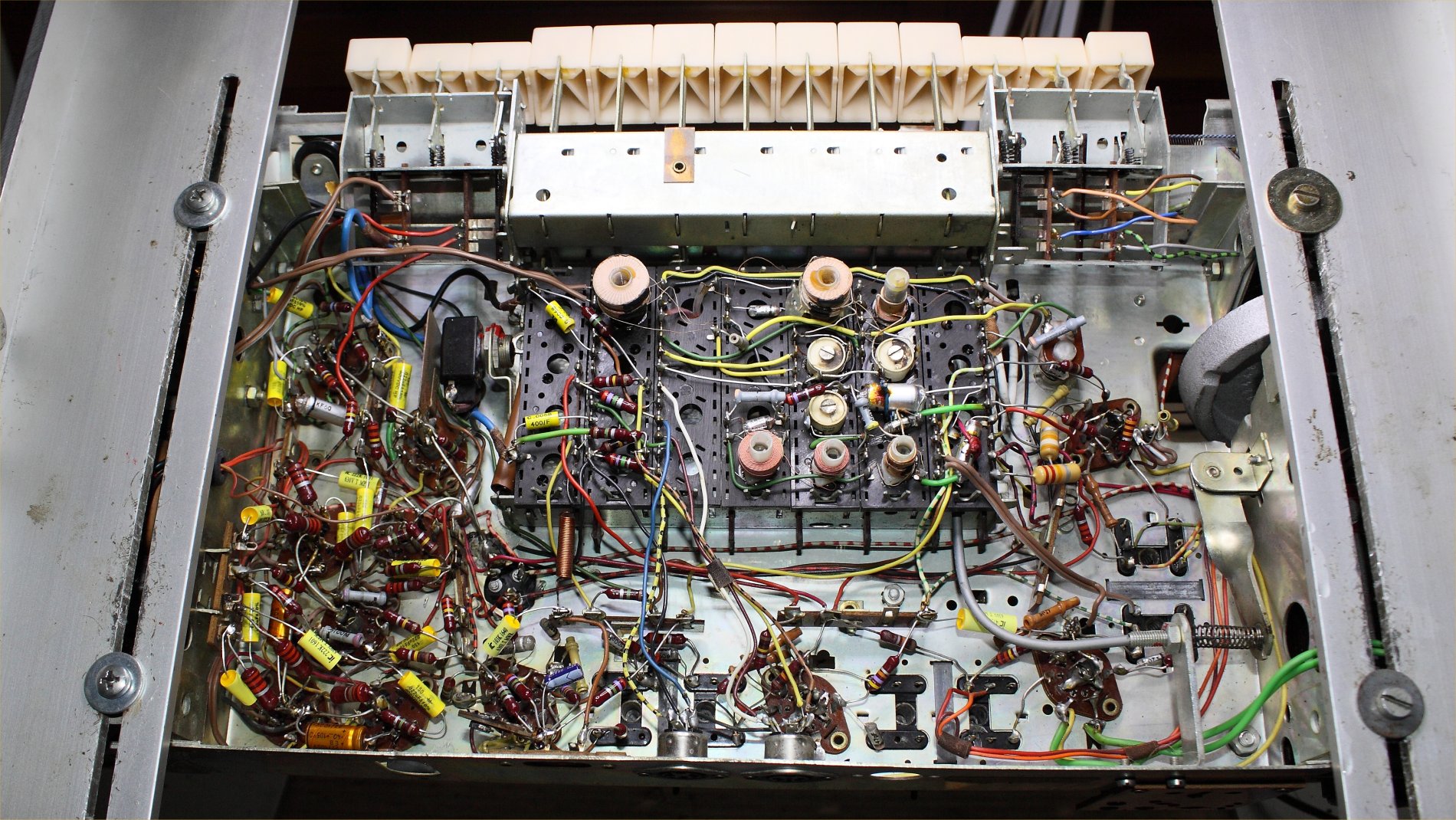
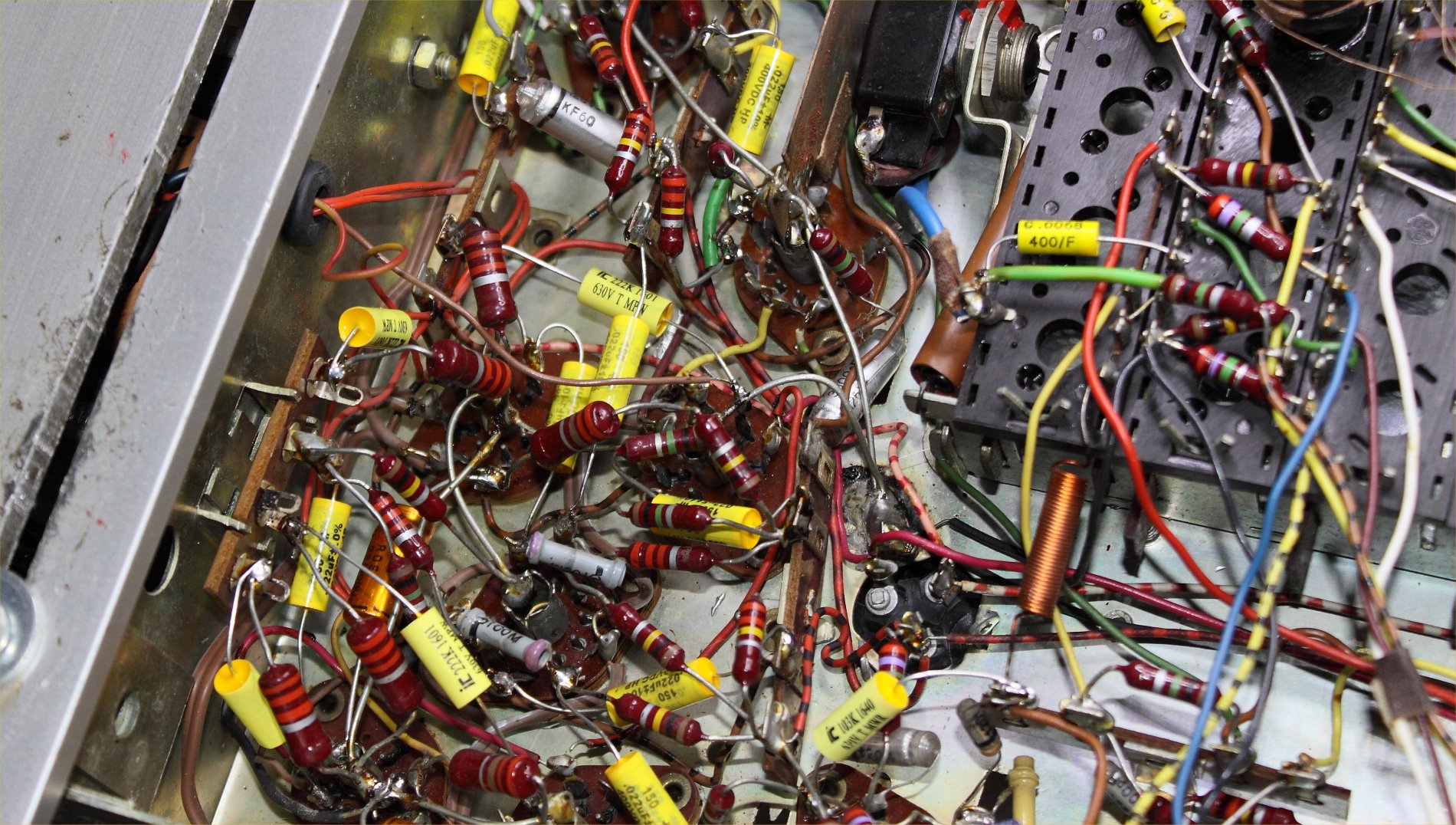
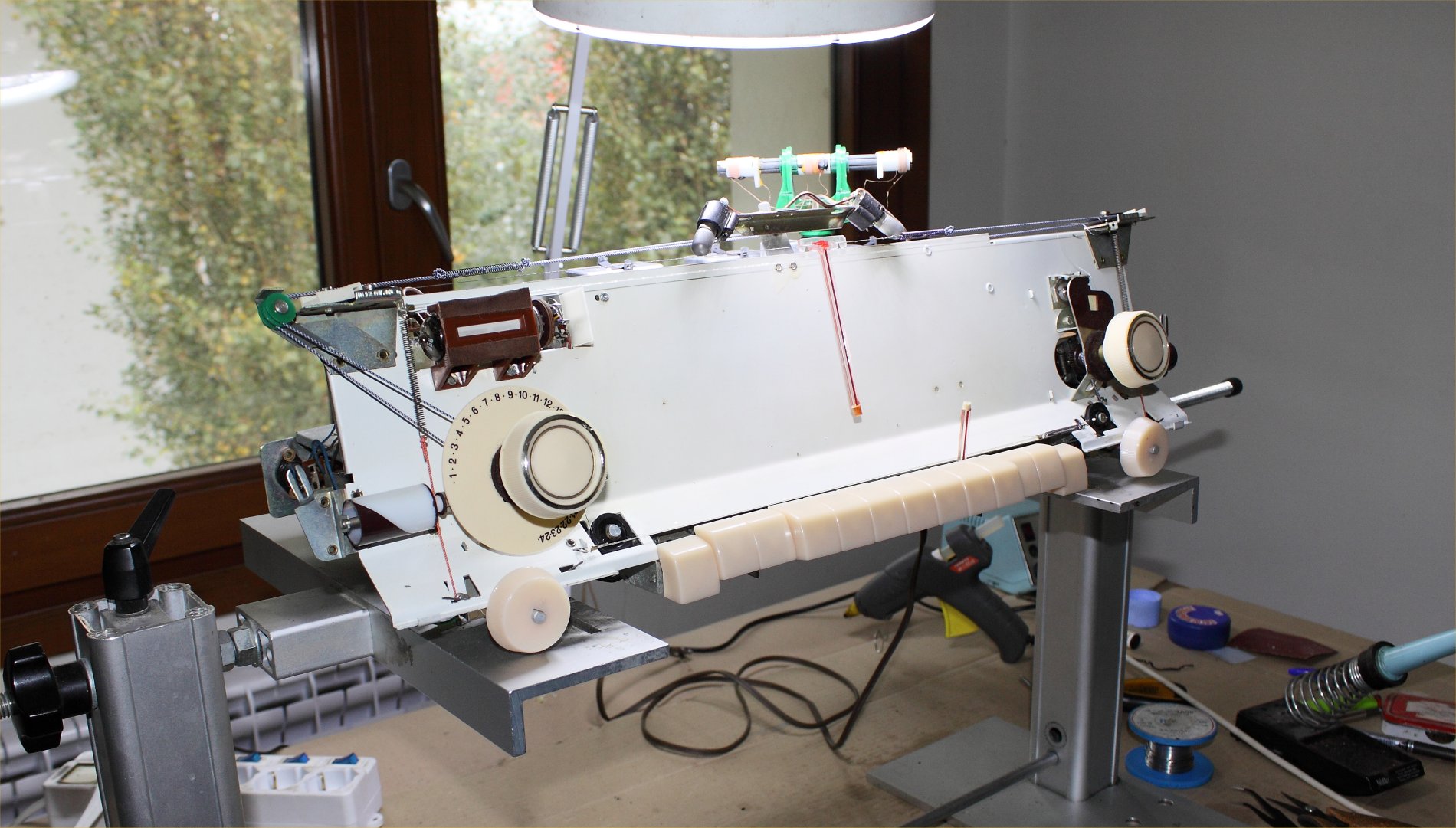



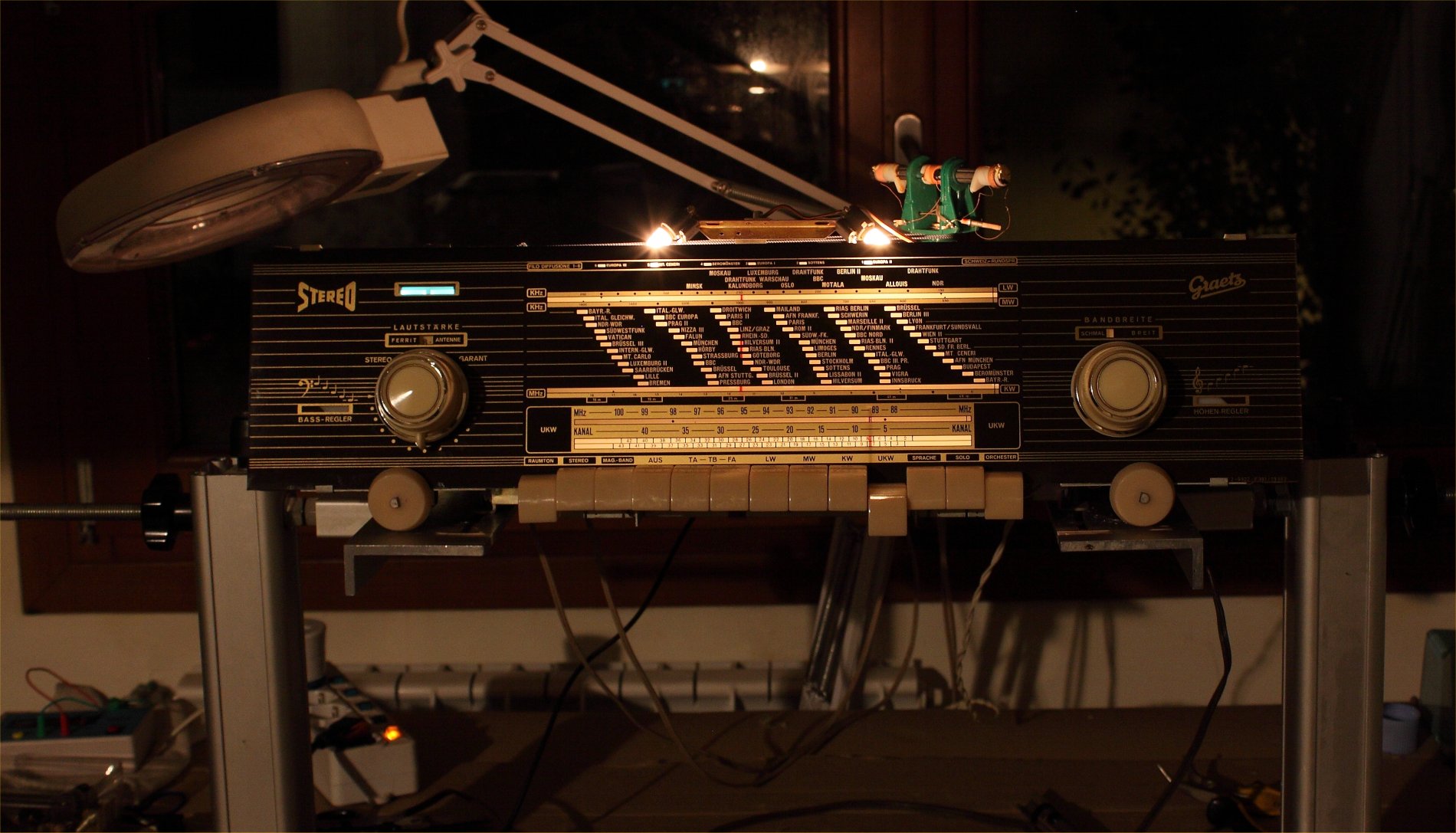

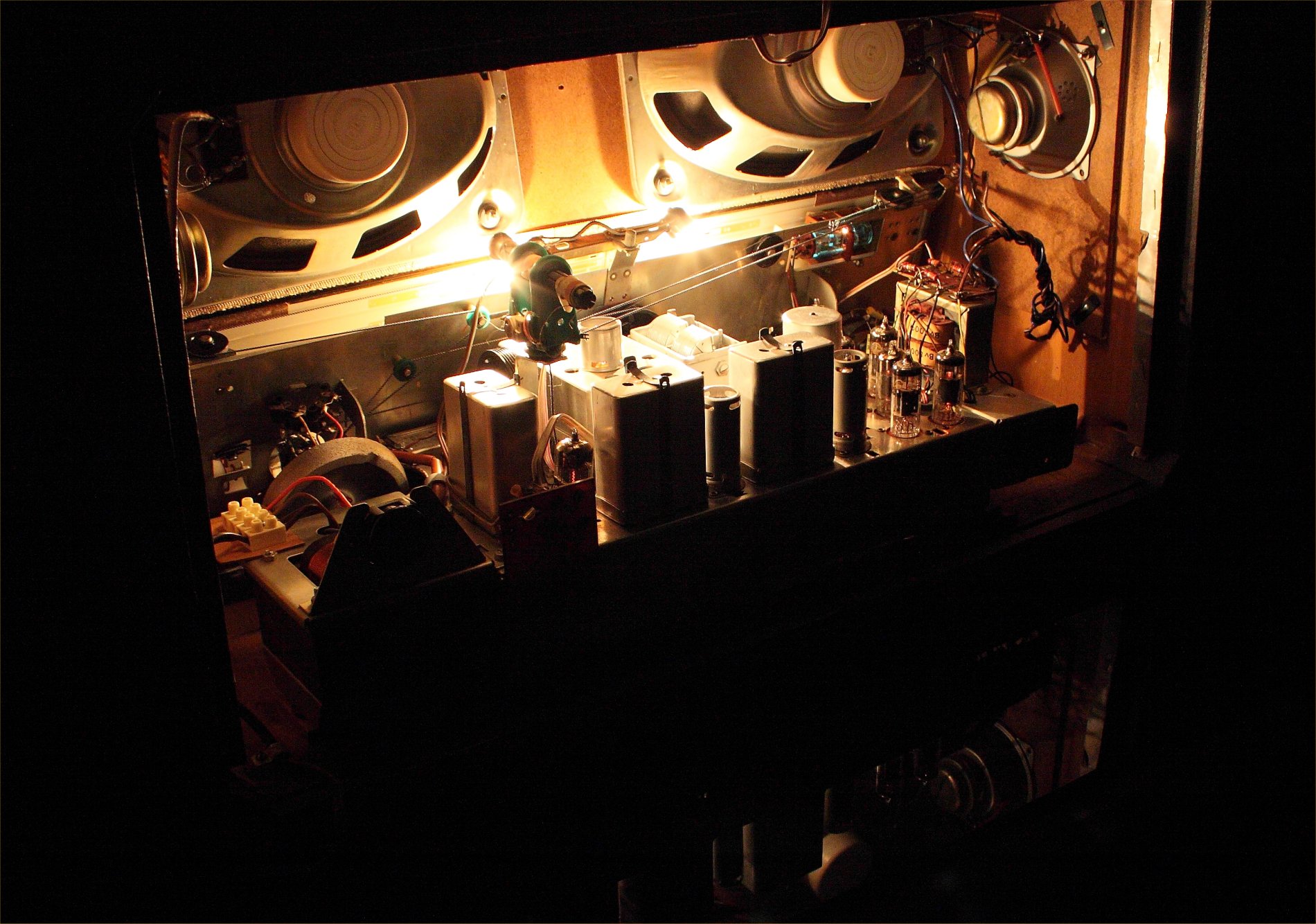
 gbc - en
gbc - en







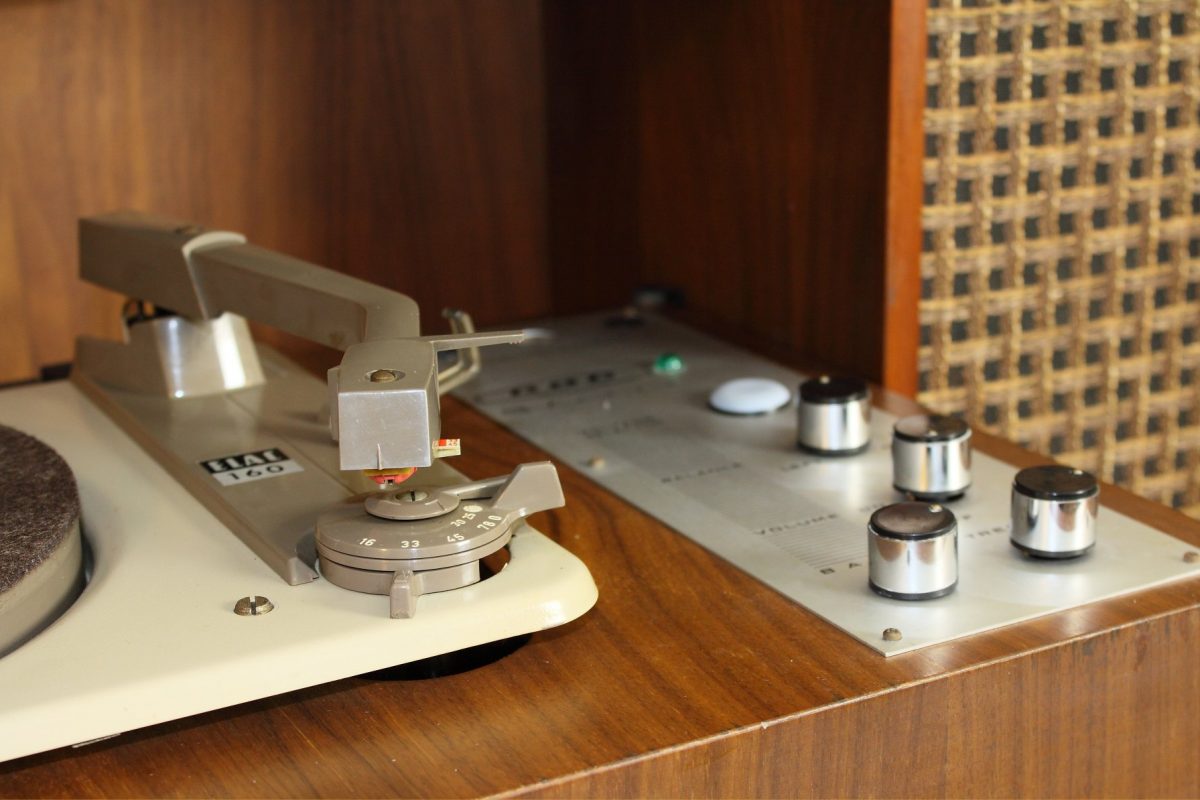








The GBC HALIFAX FV-81 was designed, produced and commercialised by GBC as its flagship model.
It was advertised as a “High-performance, High-Fidelity stereo system”.
Very curious is the definition of the “drop-down” furniture piece, which is basically a fold-out cabinet.
Also interesting is the possibility to mount the cabinet to a wall.
For this purpose, reinforced rear screws have been applied.
Both amplifiers consist of a triode-pentode ECL86, the ultimate evolution of the ECLxx tube range.
The triode is used as a preamplifier and the pentode as a power amplifier. The declared power is of 3W per channel.
It may seem little, but it is not. The IREL loudspeakers, produced in Italy, are very efficient. The boost given by the cabinet further increase the overall effect.
This cabinet effectively sonorises a medium-sized room.
It is not recommended to use a passive subwoofer because of the softening that would be introduced by its crossover filter.
This device is suitable for the listening of Jazz, instrumental, new age and ethnic music, in general.
Metal and other musical genres characterised by strong dynamics are a little too softened by ECL86.
The turntable will be described later.
This device is naturally provided with Bluetooth. The best and practically unavoidable way to use it.
Using any device, smartphone, Ipad etc. it is possible to listen to any radio station in the world, any compilation, podcast, CD and so on.
The sound, of course, is that of the tubes.

Bluetooth receiver embed
Each radio is equipped with a cable for connection to any digital device.
- Bluetooth receiver embed - The unit is equipped with a BLUETOOTH receiver powered directly by the receiver power supply. This makes it possible to control the amplifier from any external digital device as an IPAD, a Smartphone, or a sophisticated multimedia station. So you can hear your preferred web station or your lossesless file without cables on the room. Wireless Receiver can be equipped upon requests.
– Multi Platform Connection – A customized adaptation cable to connect any digital device as Iphone, Smartphone, Laptop, CD Player etc. will be provided with this radio. This special cable suits the different impedances between the modern equipment and the receiver. Furthermore the two stereo channels flow into one without increasing the load to the input unit.

Jacopo castelfranchi
GBC is the acronym for Gian Bruto Castelfranchi, who founded the company in 1958 in order to commercialize instrument accessories and related material.
It is his son Jacopo, however, who made GBC the biggest company in Italy for the commercialisation of electronic materials and devices.
Jacopo joins his father's company in 1946, starting to increase the number of represented products and expanding in the field of electronic components, tubes, passive components and various equipment such as tape recorders and turntables.
The company expands and diversifies and in 1957 the Selezione di Tecnica Radio TV periodical is born, for which is created the J.C.E., Jacopo Castelfranchi Editore.
Not to be confused with the Selezione Radio magazine, published from 1951.
In 1962 the head office is transferred to Cinisello Balsamo owing to a shortage of space.
In 1970, the magazine changes its name to Sperimentare Selezione di Tecnica Radio TV.
In 1970 it becomes a Sony distributor for Italy and it later creates a joint venture with it.
The sales points in Italy reach maximum expansion with over 150 shops.
GBC also designs and creates its own high-fidelity stereo systems and televisions.
In these years, GBC also commercialises assembly kits branded “High kit” and “Amtron”.
In the next few years, it also becomes an importer for Bang&Olufsen, Sinclair and Goldstar.
GBC is sold in 1980.
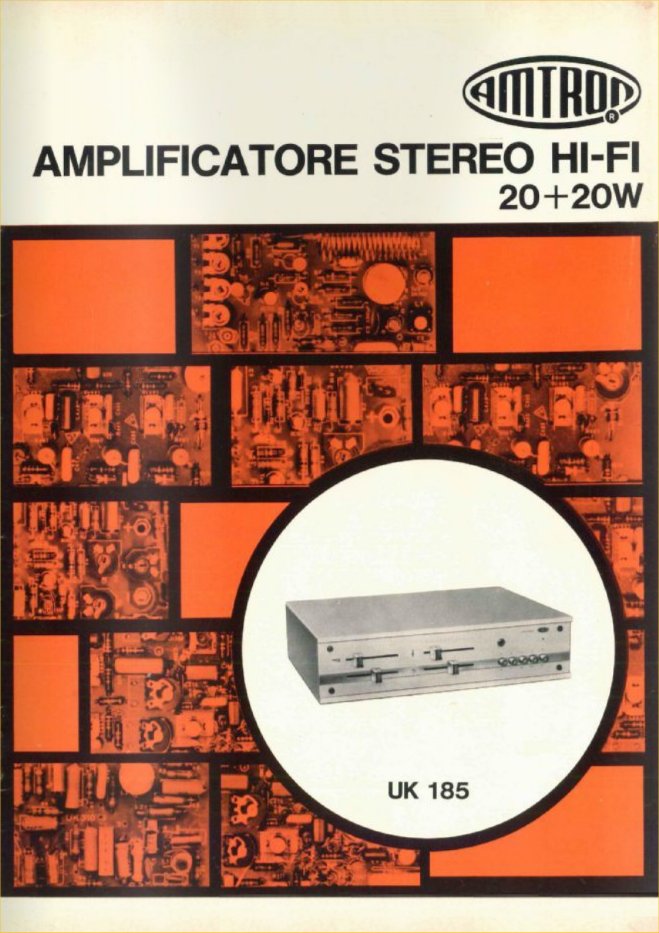
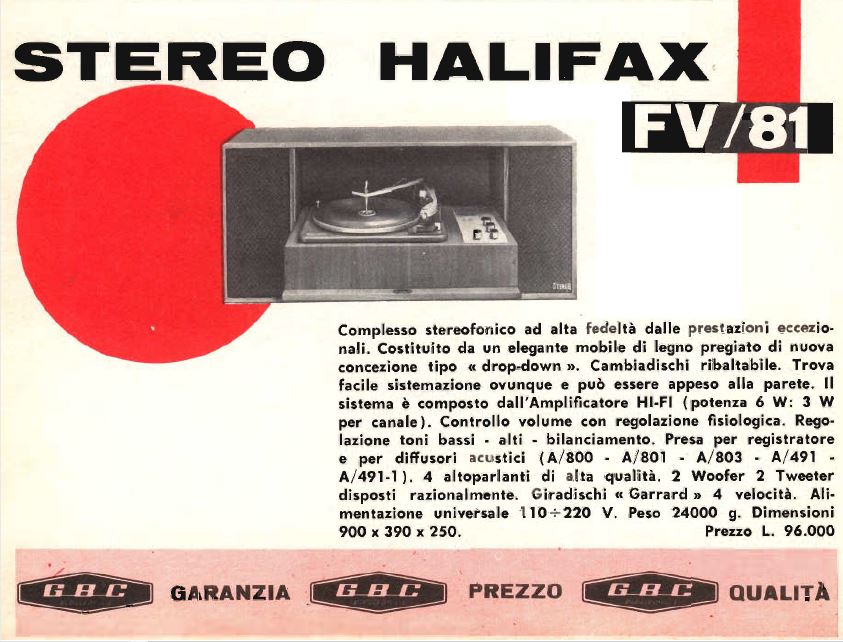
Year of production: 1965
Output power: 3 + 3 W
Turntable: ELAC 160
Loudspeakers:
2 elliptical mid-woofer
2 cone tweeter
Dimensions (LHD): ... mm / 27.6 x 17.9 x 10.8 inch
Net weight: ... kg / 39 lb 10.4 oz
Tubes: 2 x ECL86
The turntable is a semi-automatic ELAC KST106 with stereophonic piezoelectric cartridge.
The turntable is rather quiet for the time. It is very simple to use.
It can play 16-33-45-78 r.p.m. records either manually or automatically. It is also provided with Multi-LP Capable Turntables.
Moreover, it can be placed automatically on records with a 30-25-17 diameter.
The ELAC needle has got two positions 33-78 r.p.m. with two different needle diameters.
The frequency response is linear on the whole audio band.
The turntable/head complex was really good for the time.
Nevertheless, the weight of the piezoelectric cartridges is between 5 and 8 grams. This forced the builders to apply an antiskating of the same strength in grams.
The couple wight/antiskating so big damages vinyl records over time. This is why I advise against using it with rare or precious LPs.

There are four loudspeakers, two for each loudspeaker box.
The 10 cm diameter conical tweeter in cellulose is close on the rear. This kind of structure makes it completely independent from pressure variations generated by the woofer. This ensures a clean and distortion-free reproduction.
The 6 dB/oct filter is essentially composed of a good-quality condenser.
The woofer frequency cut, instead, is entrusted only to its mechanical features.
Above a given frequency, likely around 5-6000 Hz, the softening with which high notes are reproduced is such as to work as a natural filter.
This peculiar way of building filters, very common at that time, not only was economical, but practically generated a single-driver loudspeaker reproduction, with the great advantage of focusing on the audible image.


Starting from the bottom we find the tone controls: Bass and Treble
Above there is the power and volume control
Still above we find the balance control between the left and right channels.
Further up we find the input for external device, Recorder, CD player etc.
On the same line we find the outputs for external speakers.




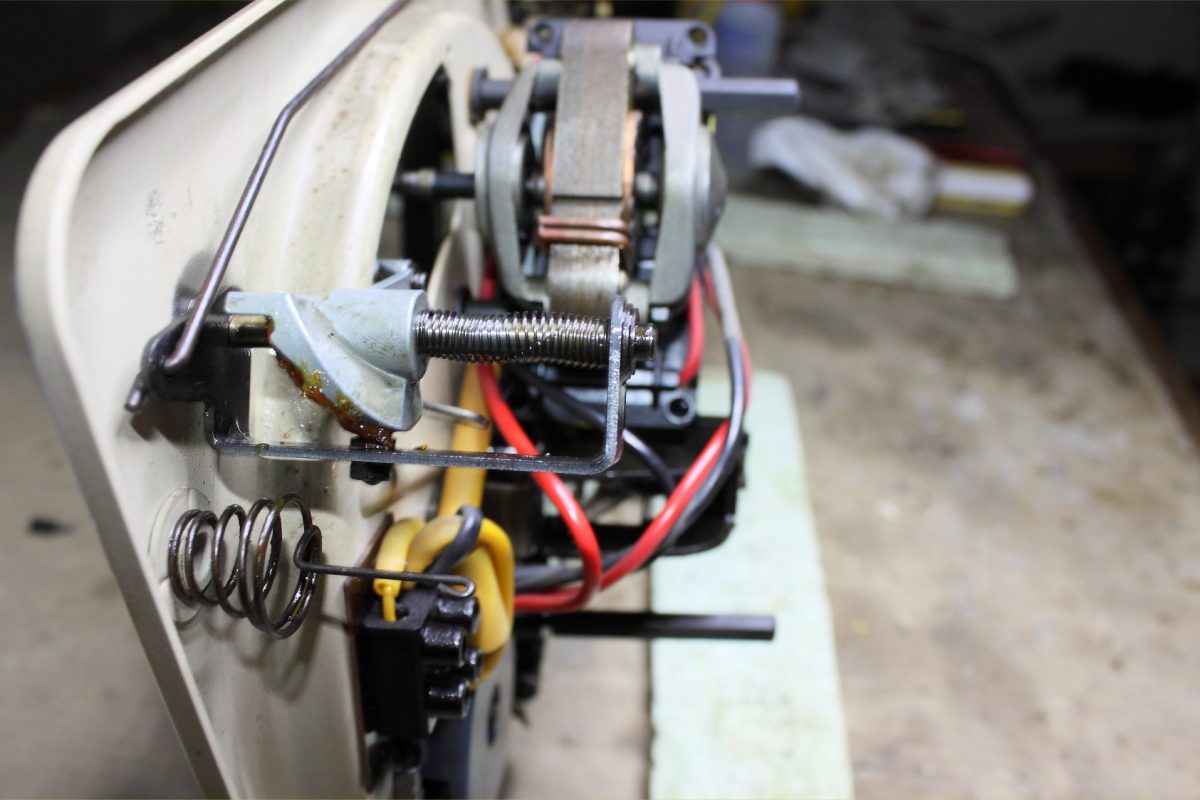


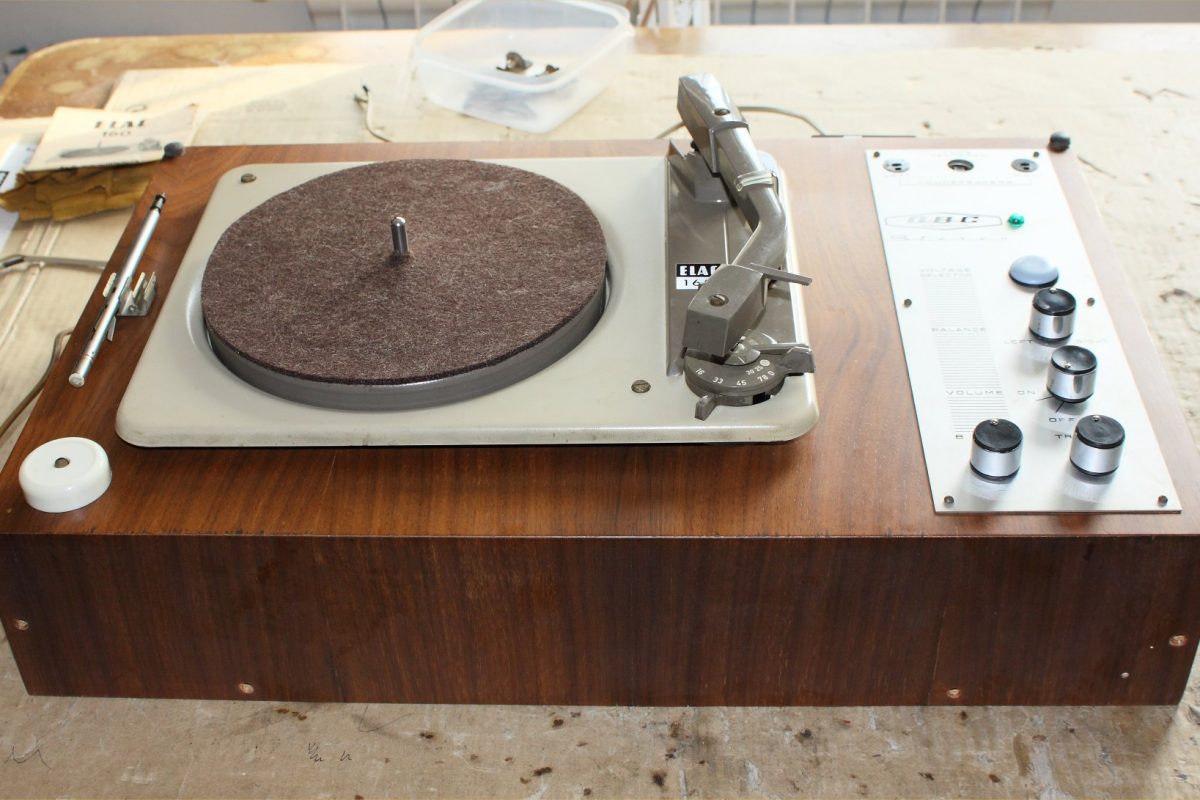



 german radios - en
german radios - en
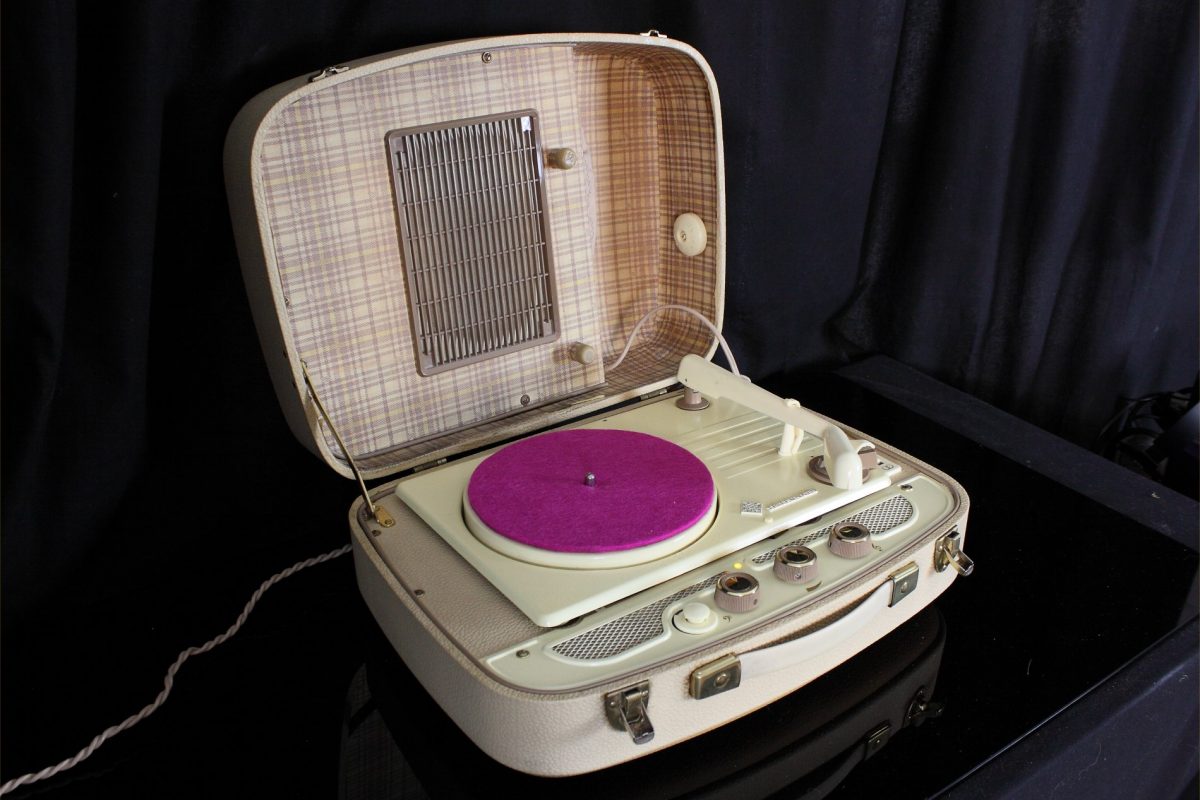
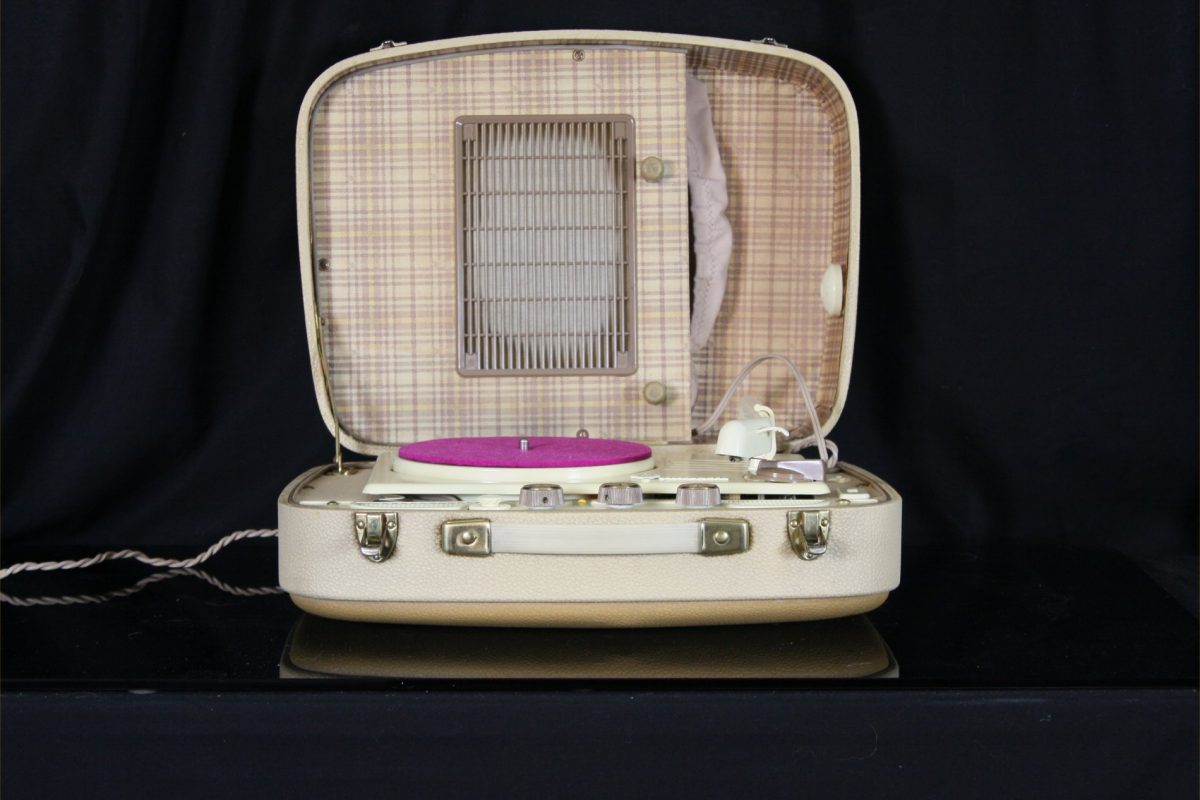






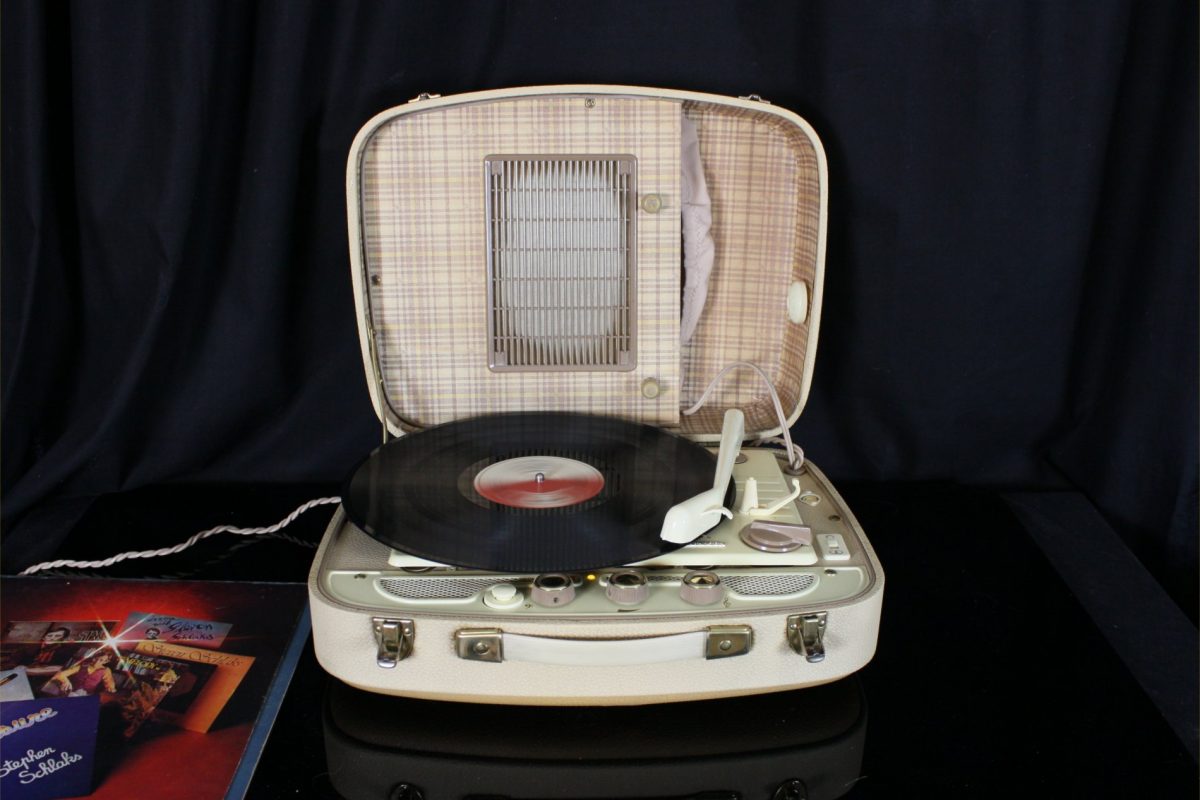


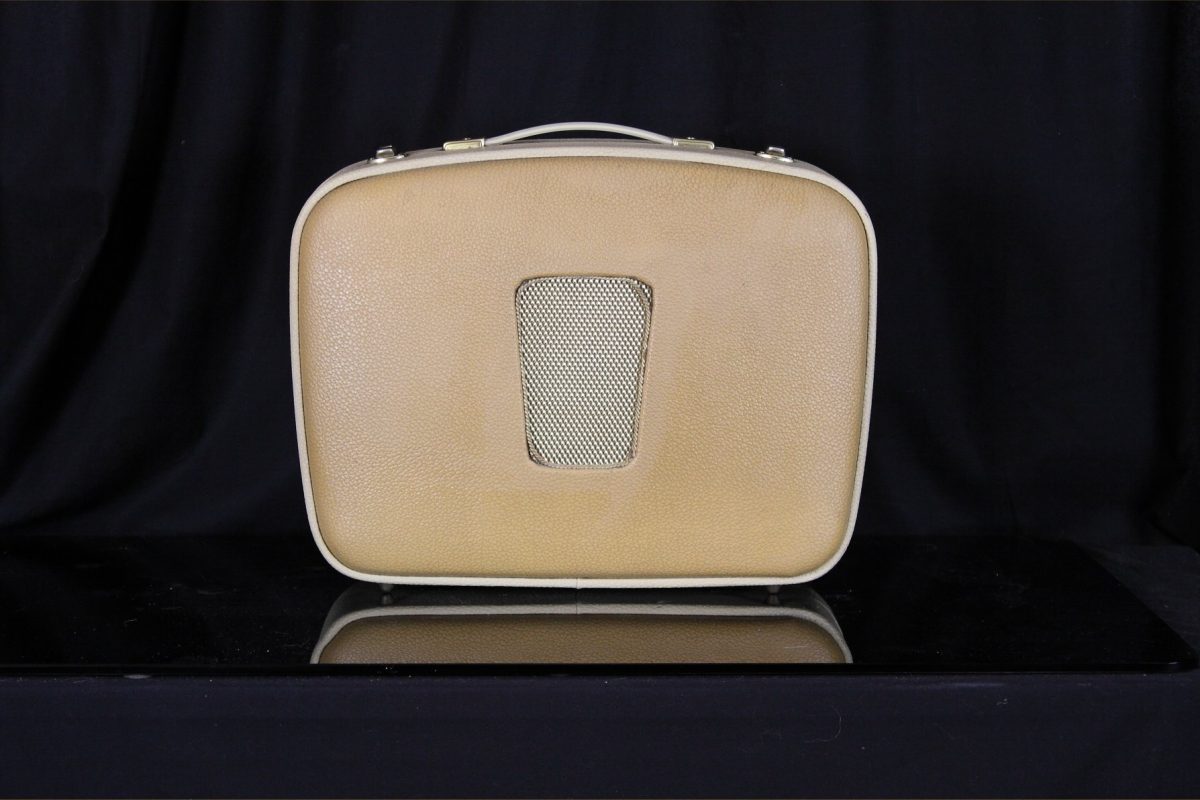
The Telefunken Musikus 5SV is one of the best portable record players built in Germany between 1960-1961.
The mechanical part is comprised of a robust Telefunken belt record player.
The record player is equipped with automatic antiskating set at the factory. It can play discs at 16/33/45/78 rpm.
It is not automatic for which the mechanics are very simple, robust and silent.
It can assemble monophonic or stereo stylus.
The electronics are established from an ECL82 polarized in A-Class.
The triode section of the ECL82 is used as a preamplifier. Between the preamplifier stage and the final stage there are separate tone controls for acute and bass.
Interestingly, the physiological control of the volume consists in three separate levels which intervenes in succession to the volume decreasing.
That physiological control is applied to both potentiometer sections. Another important feature is the ability to connect to an external amplifier, with its loudspeaker, to listen in stereophonic mode.
The traditional use is to connect the output of this record player to the input of a radio.
It is enough to turn the stylus and the Stereo/Mono switch to the Stereo position.
In this way, one channel will be audible from the loudspeaker of the portable record player, the other channel will be audible from the radio’s loudspeaker.
Activating the volume knob of the portable record player, it will act simultaneously on both channels.
The tone controls of the two devices remain separate and independent.
The listening in Mono does not require any additional equipment.
The sound is typical, substantial, sweet and obviously relaxing.
The acute tones are brilliant and the bass is quite quietly present …..within the limits imposed by the laws of physics.
A beautiful portable stereo player with the final stage “Single Ended” in A-Class, enclosed in very refined furniture.
An object which you can enjoy the transmissions of times past.
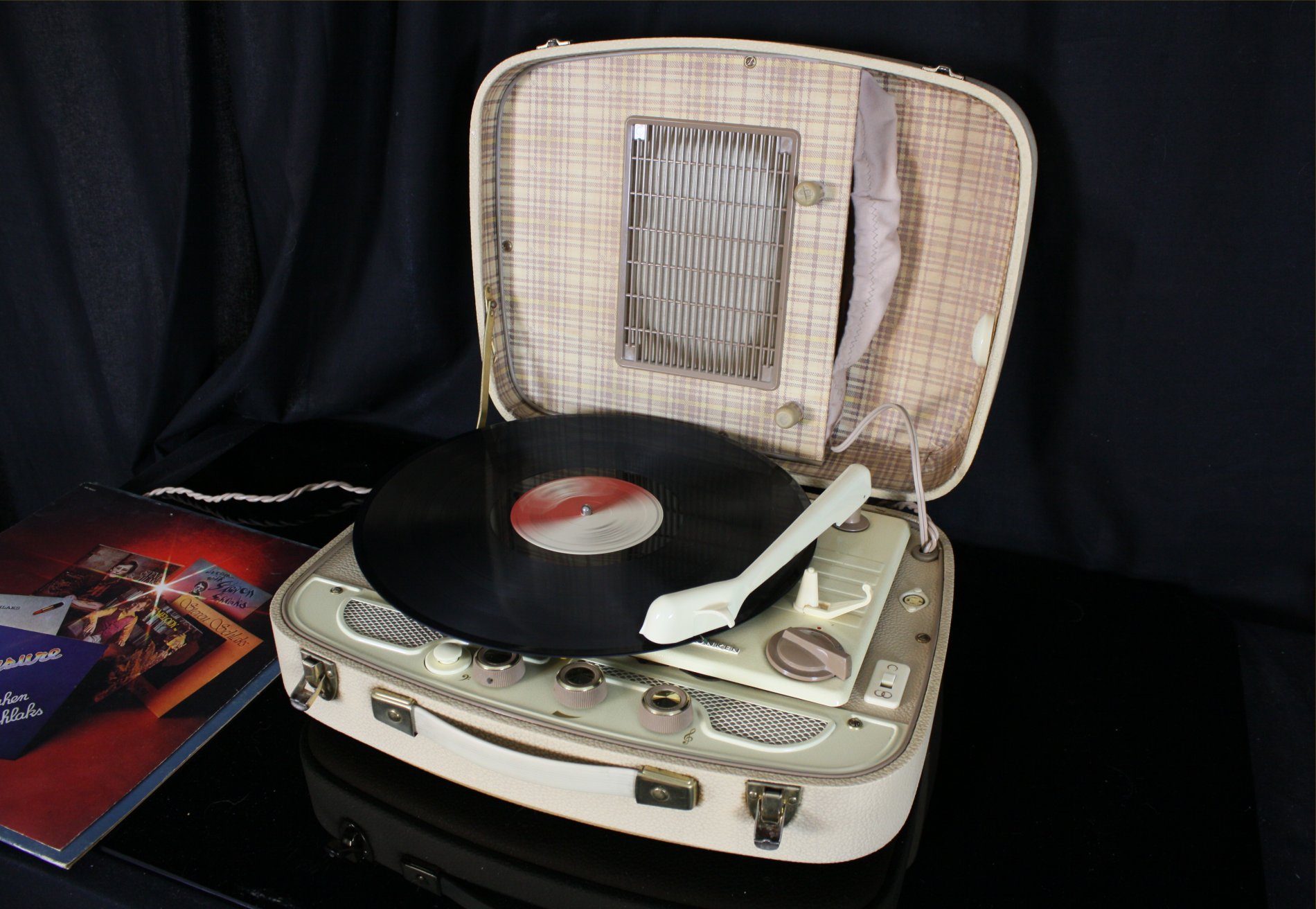



1903 To prevent the English Marconi Company from having a monopoly on wireless transmissions,,Kaiser Wilhelm II orders the company AEG and Siemens to set up a joint venture to develop wireless telegraphy in Germany. It was established under the name of Gesellschaft für drahtlose Telegrafen mbH.
1923 The company name is changed to Firmierung in Telefunken, Gesellschaft für drahtlose Telegrafen mbH. Abbreviated as Telefunken, where Tele means Telegraph and Funken means "Lightning" in the sense of being fast and immediate.
1930 Production gradually moves from military and Government equipment to the production of consumer appliances. During this period, Telefunken enters the market of radio-television, recorders and etching of records.
1930 As radio transmissions are now needed not only to transmit telegraph messages, but also true music and speech broadcasts, it becomes necessary to introduce the concept of sound compression, to avoid continual volume level changes of the radio. Telefunken designs and produces the U3, the first compressor for transmitting stations in the world,. TheU73b, as seen in the picture, represents the evolution of previous models—it allows you to change the compression level, the release times and the attack times.
1941 All Telefunken’s actions are transferred to AEG, which effectively becomes the sole owner of the trademark Telefunken, its factories and patents.
1948 Germany is not invited to the Copenhagen Conference, where the division of Medium and Short Wave radio frequencies of Central Europe is decided. The war has just ended, and officially Germany isn't considered as a technologically important nation. Because of this, Germany decides to develop FM broadcasts even if the quality of the transmissions is considerably higher than those in the AM. At this time, Telefunken develops the V72 microphone/amplification system and its evolutions, intended to be used in all German broadcasters and most European ones too, as well as at the most important recording studios, such as EMI, Decca, Telefunken, etc.
1955 The company becomes Telefunken GmbH.
1967 Telefunken is joined with AEG and the company becomes ‘’AEG-Telefunken’’.
1970 Poor management causes the company to lose market shares. AEG begins to outsource entire business segments and make constant rearrangements.
1985 Daimler-Benz AG buys what remains of AEG-Telefunken.
1996 The name Telefunken is cleared and all activities related to audio products stop.
Today The company name has been renewed in Telefunken Holding AG. Telefunken and its use worldwide are responsible for the name. In United States Telefunken USA buys the rights to build and market worldwide original microphones and some audio equipment under the brand Telefunken Elektroakustik.
The original company that helped spread the music throughout the world doesn’t exist anymore.
Year of production: 1963
VOLTAGE (AC): 110; 125; 160; 220 Volts
Loudspeaker Larga banda frontside magnet
Dimensions (LHD): 410 x 170 x 310 mm / 16.1 x 6.7 x 12.2 inch
Net weight: 4.5 kg / 9 lb 14.6 oz
1 tube: ECL82
Cartridge T20 - T20/2
Speed 16/33/46/78 rpm
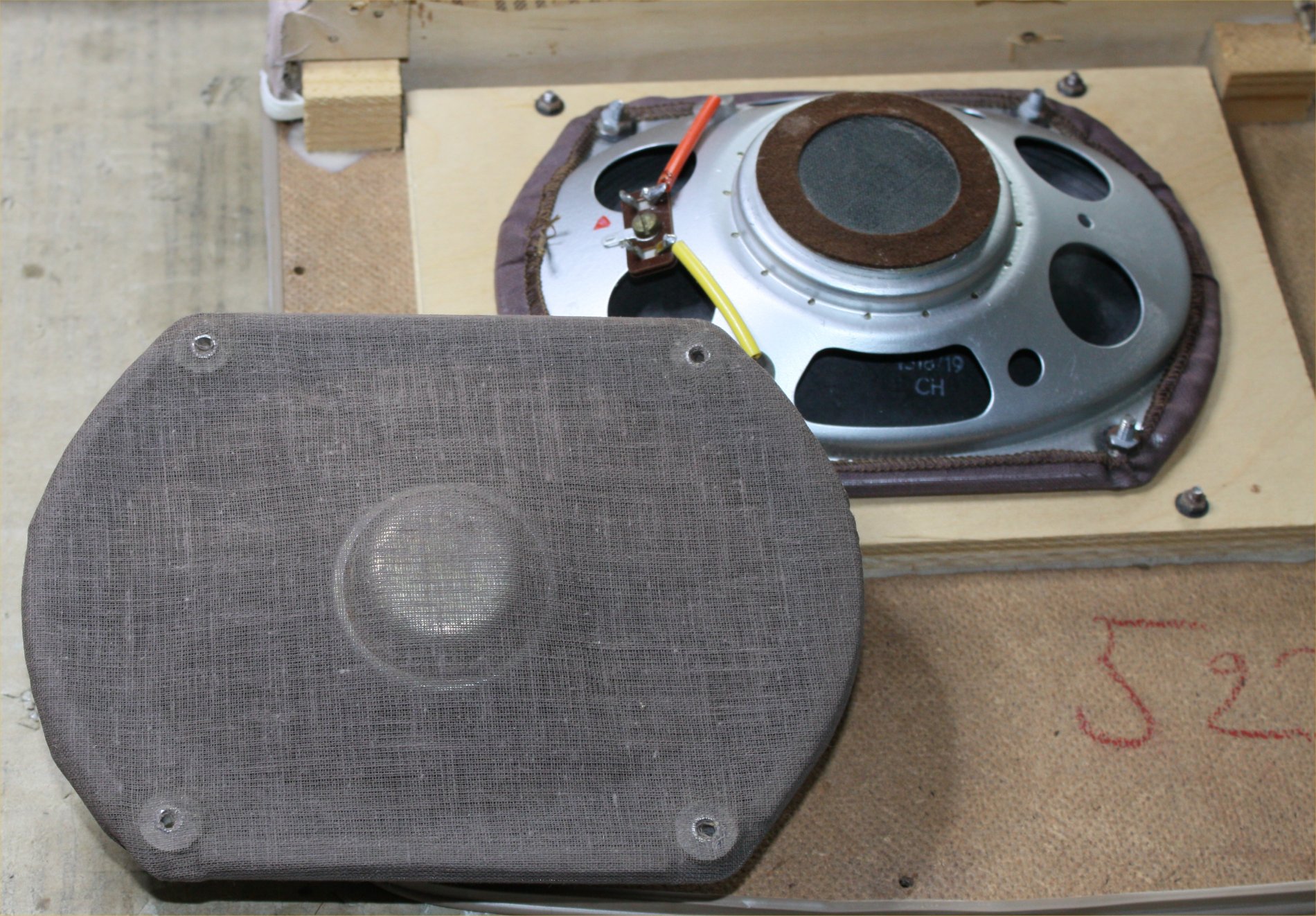
The loudspeaker of this device is very interesting.
Since it has been placed on the top of the lid of the cabinet, it has been necessary to contain the depth.
To do this, the magnet and the reel have been moved to the front of the speaker, in front of the cone.
The cone curvature is also minimized.
With these clever solutions the depth has been limited to a few inches.
The frequency response of a loudspeaker with the profile is shifted to the acute, which is really brilliant.
The cabinet built on the lid, allows the low range to be emphasized, so at the end the frequency response is rather linear.
Another important feature, that reveals the class of this device, is the tone control circuit, which consists of two separate sections for high and low frequencies.
Somewhat different to the circuits usually used in German production, here the controls are independent from the volume control position.
These controls act naturally only on the internal amplifier, not on that additional amplifier.


In the photo, on the left you can see the 3 poles DIN socket, to which it is possible to connect an additional amplifier, as specified in the presentation of the device.
When the switch is in the Mono position (a circle) on both amplifiers the internal one and the additional one, the same signal arrives.
When the switch is in the Stereo position (two circles) to the two amplifiers the signal arrives separately in the two channels. This is controlled by the volume potentiometer which consists of two equal sections.

The first command you can see to the left is the voltage changer. It should only be used at the beginning to adjust the voltage of the record players’ operation to that of the network.
Then, it must no longer be touched.
The second command is the control of low tones of the internal amplifier, to follow the potentiometer of the volume (of both channels)(di entrambi i canali)
and finally, the acute tones control knob.
Above you can see the big knob of the speed control of the record player.
At the end, the Mono/Stereo switch and the output for an additional amplifier.


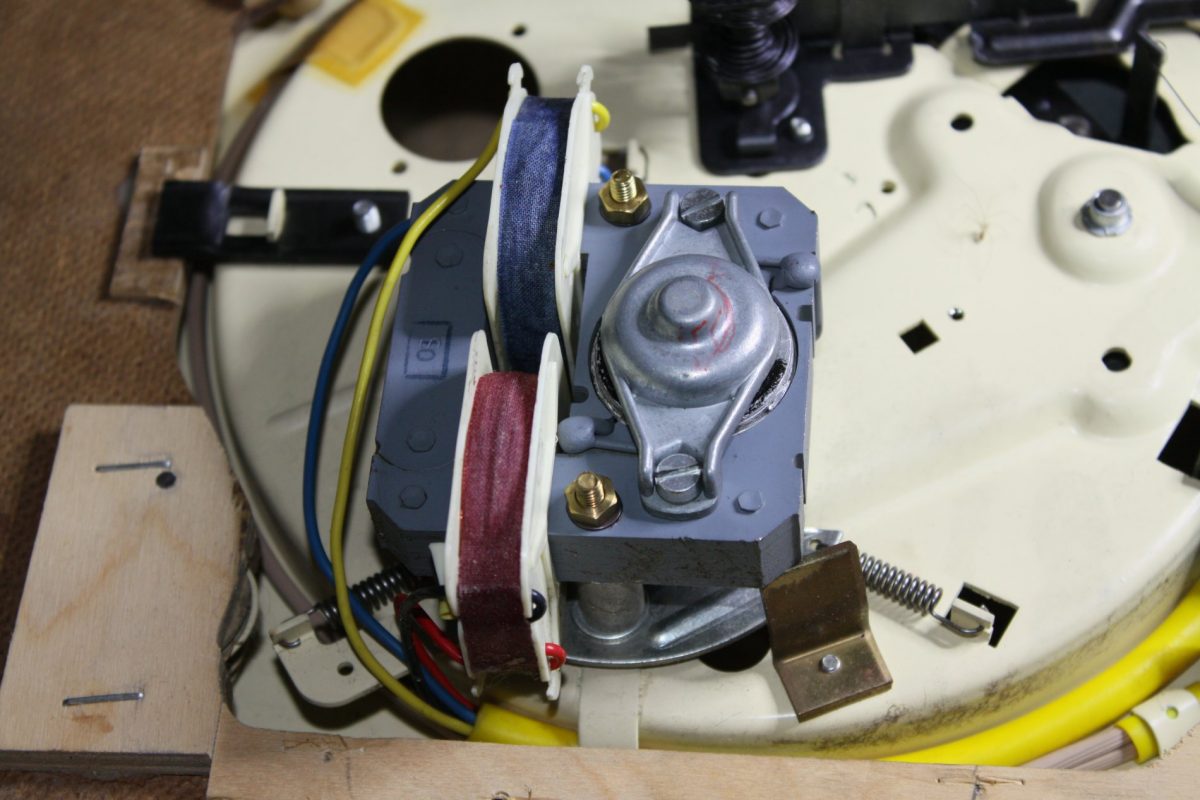





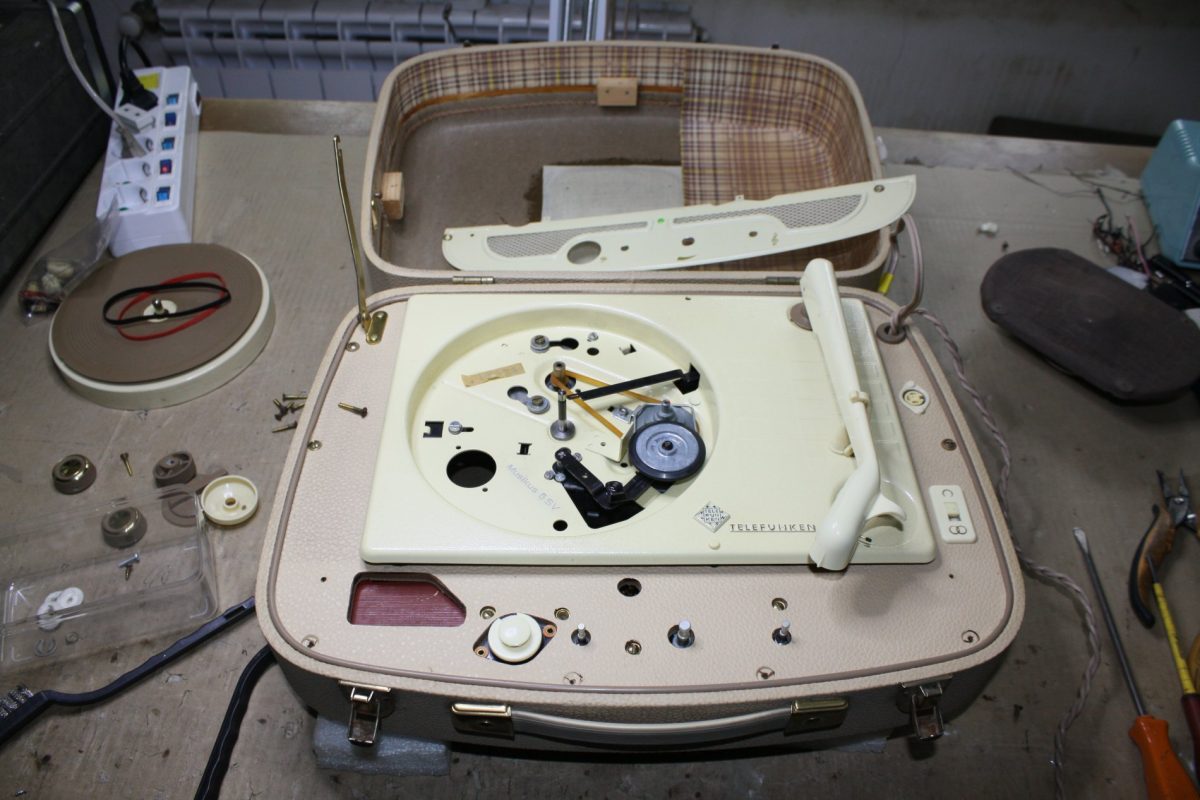
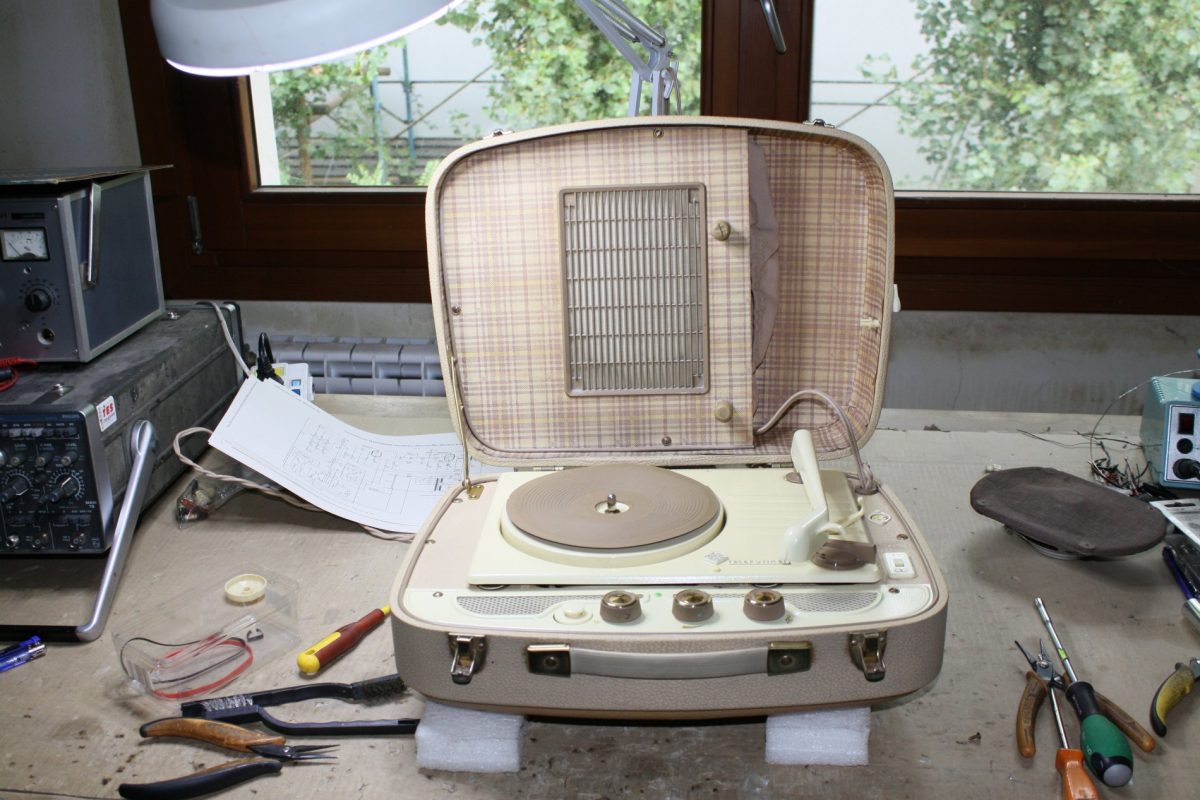
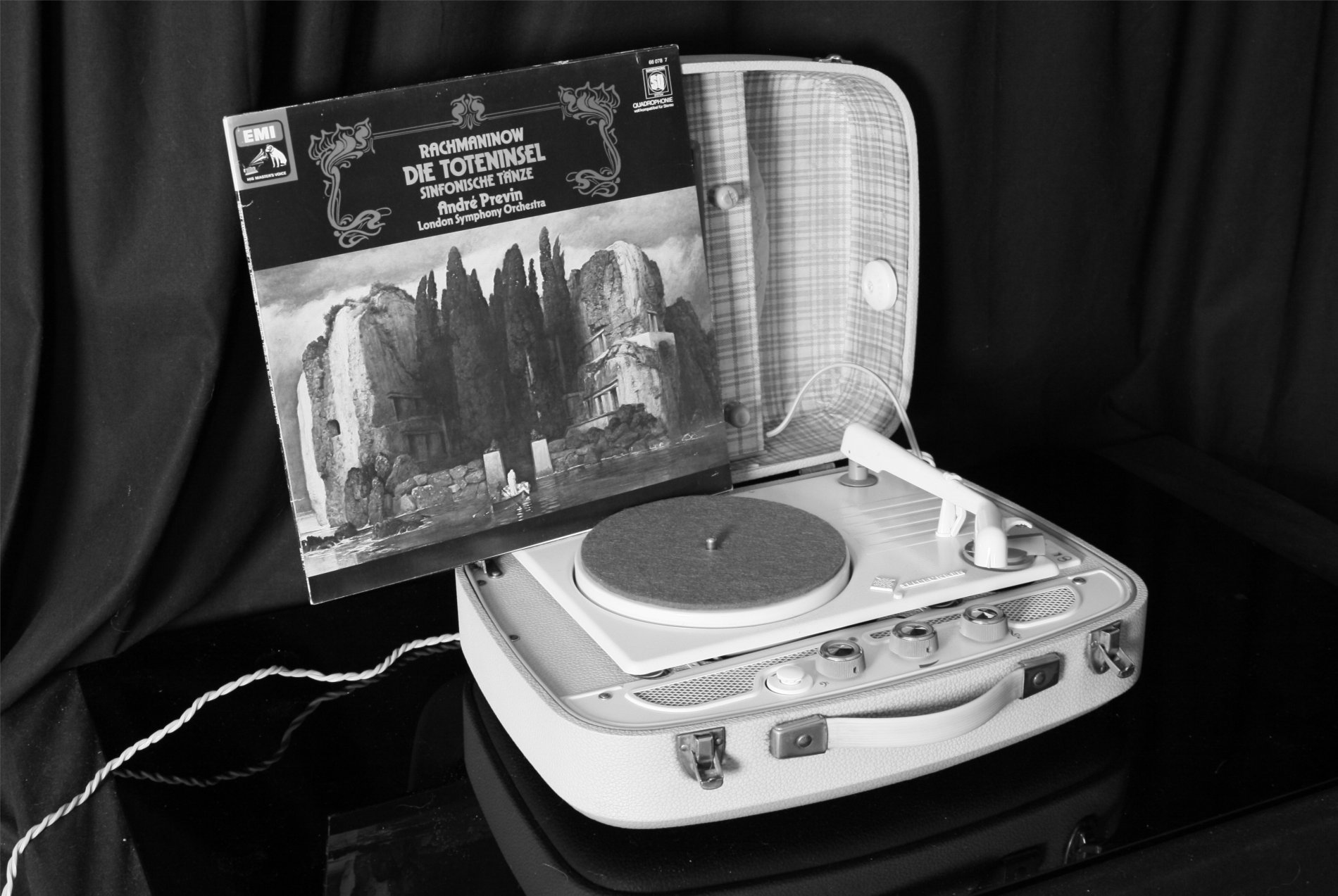
 3007 - en
3007 - en
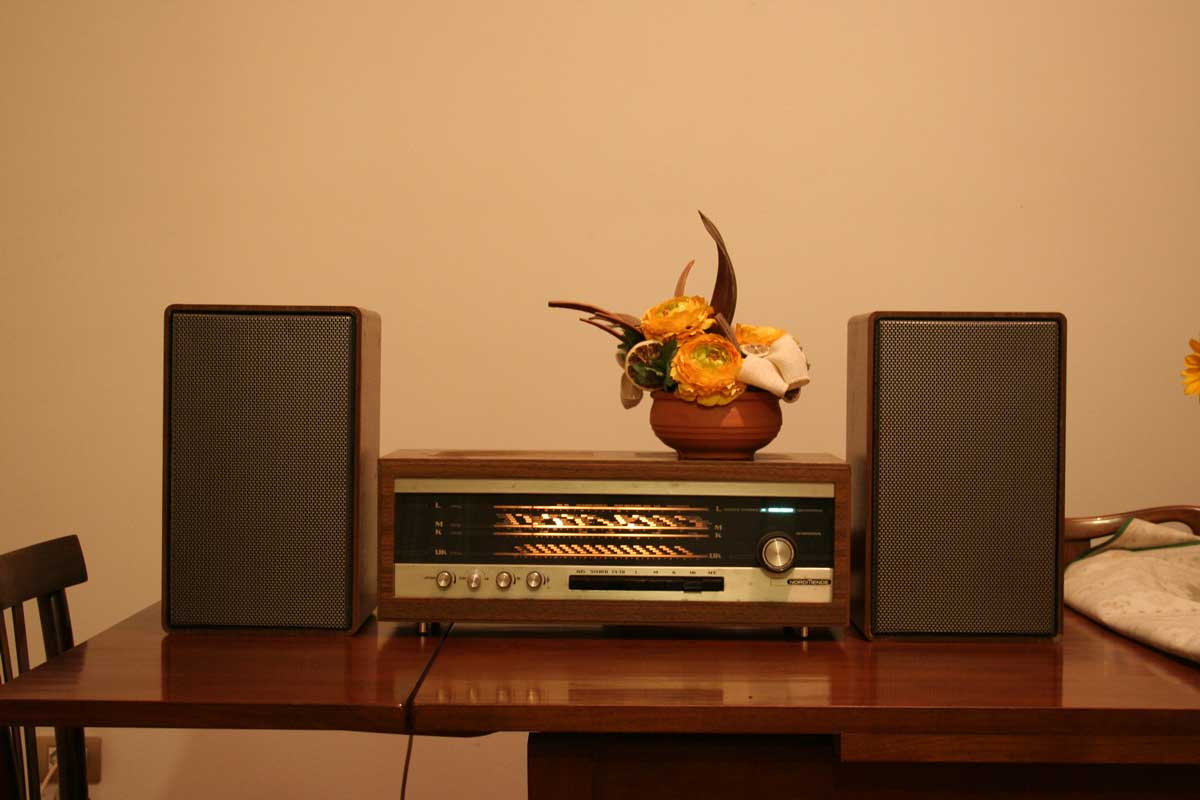








Finally we do not find passive correction or equalization filters on a machine, and this goes to advantage response linearity and signal transfer speed.
I put this note at the beginning to highlight the main characteristic of the NORDMENDE STEREO STEUERGERAT 3007, say, the extreme response linearity.
The power of the RMS output goes around 9W per channel, and its enough to pilot medium dimension and efficiency speakers.
Not having appearently a color of its own, this machine leaves musicality to the loudspeakers, that will have to be chosen with care.
This is in my opinion the harder side, but at the same time intriguing, of the placing of this Nordmende.
Very easy to use and very compact, represents a stylistc line at the top those years in Europe.
Shortly the Japanese will come with their professional-looking machines...talking about the appearence.
The cabinet is very beautiful and opaque-varnished.
The care and the precision by Nordmende in its production are notorious. The quality of the components is known over all by german collectors.
I personally prefere the “naked” machine.
Aesthetically it reminds me of the McIntosh look (don't blame me the evaluators of the legendary Chambers Street's company)
The deisgn is less heavy and immediately becomes current and this benefits the thermic balance increasing the functioning stability and the duration.
If I would have to do a tweaking and not a refurbishment, I'd protect the machine with a black shiny grid of the right dimension. I'm convinced that the result would be very interesting.
It is possible to connect any speaker, preferably with high efficiency.
The device is equipped with the rare Stereo Decoder, allowing you to listen to a multitude of FM Stereo broadcasts in stereo
Built-in Bluetooth receiver
Each radio is equipped with a special cable that connects with any digital source.
- Altoparlanti separati - Poter utilizzare diffusori separati è una possibilità importante per ricevitori stereofonici. In questo modo è possibile accoppiare al ricevitore i diffusori più adatti alle esigenze di spazio, di design o di prestazioni acustiche. I diffusori più adatti sono analizzati in seguito, nella sezione altoparlanti.
- Stereo Decoder - L'apparecchio è dotato di Decoder Stereo integrato. Questo permette di ascoltare in stereofonia le stazioni che usano tale sistema trasmissivo. Molti ricevitori stereofonici non sono dotati di Multiplexer per cui funzionano in stereofonia soltanto quando si seleziona l'ingresso Giradischi/Registratore/Aux. Tali ricevitori, nell'ascolto della radio, inviano ad entrambi i canali lo stesso segnale, per cui l'ascolto è monofonico. Non è il caso della Concertino 2380 che è totalmente stereofonica.
- Ricevitore Bluetooth integrato – Questa unità può essere equipaggiata con un ricevitore BLUETOOTH alimentato direttamente dall'apparecchio Questo rende possibile usare l'amplificatore da qualsiasi dispositivo digitale esterno, come IPAD, Smartphone, o sofisticate stazioni multimediali. Potrete ascoltare le vostre Stazioni Web o le vostre musiche preferite senza cavi in giro per la stanza. Su richiesta è possibile anche montare un Ricevitore Wireless.
- Connessione MultiPiattaforma - Con l'apparecchio viene fornito un cavo adattore di impedenza per connettere qualsiasi sorgente digitale, come Iphone, Smartphone, Computer, CD Player ecc. Questo cavo appositamente costruito adatta le differenti impedenze delle moderne apparecchiature digitali. Inoltre i due canali stereofonici vengono raccolti in un unico flusso senza aumentare il carico dellunità sorgente.
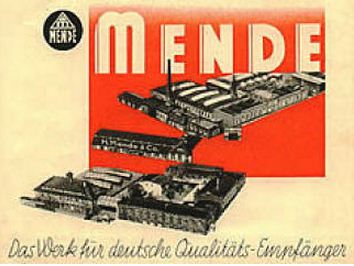
In 1923 Otto Hermann Mende founded Radio H. Mende & Co. in Dresden. After the bombing of the factory in 1945, Martin Mende (son of the founder) created a new company in Bremen, the "North German Mende Broadcast GmbH" whose name was later changed into NORDMENDE.
In the 50s and 60s it became one of the most prestigious German TV and radios manufacturer.
In the 70s the televisions by NORDMENDE became famous for their frames, cards and for the rigorous testing and quality controls carried out on their finished products. Unfortunately, the high cost involved in such detailed quality determined a competitive disadvantage when the price of color television began to fall.
In 1977 the majority of the shares was sold to the French Thomson. The following year, the family sold the remaining shares. In 1980, the factories of Bremen was closed, NORDMENDE becoming purely a trademark of Thomson.
Year of production: 1966/68
Superheterodyne IF 468/10700
6 AM Circuits
10 FM Circuits
Wavebands:
Medium Waves (OM), Long Waves (OL), Short waves (OC), FM (UKW)
AC Voltage: 110 - 220 Volt
External loudspeakers output
Dimensions (LHD) : 550 x 210 x 230 mm / 21.7 x 8.3 x 9.1 inch
Net weight: 9.2 kg / 20 lb 4.2 oz (20.264 lb)
Tubes 8: ECC85, ECH81, EAF801,ECC808, EMM803;ECC81, 2 x ECLL800

The tube sockets are made of ceramic and not bakelite.
The use of this expensive material ensures the grip of the contacts even with high temperatures and without spurious capacities and and interferences thanks to the best dielectric characteristics of the ceramic compared to other cheaper materials usually used in commercial devices.
Inside the cabinet there is a dipole for FM reception and a ferrite aerial for AM reception.
The reception sensitivity with internal aerials is very good.
This unit was in fact produced in a period when there were not many radio stations and those available fairly apart from each others.
Using an external aerial sensitivity is further increased.

The tuning system is interesting and different than other devices made in Germany.
The device is equipped with separate tuning mechanisms for AM and FM bands.
There are two tuning knobs, separate but coaxial, with cable and pulley systems separated depending on the band. This type of tuning has a very strong mechanics.
Regarding maintenance, cleaning and lubricating once every 10 to 15 years is sufficient.
The magic eye has of course been replaced.

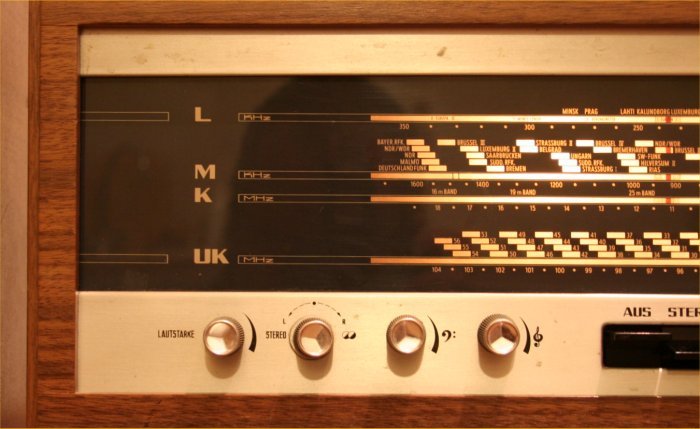
On the left we see the volume command with incorpored loudness.
After that on the right the L-R channels balance control.
Bass tones knob, treble tone knob.

We find then these buttons, in this order:
Power On/Power Off,
Stereo/Mono,
Turntable/Recorder Input,
Long, Medium, Short Waves,
FM,
Automatic Frequency Control (keeps an FM station centered once tuned in)

On the right we find then the magic eye that indicates with the left bar the presence and the level of a Stereo Station, with the two little bar on the left the perfect tuning of each station.
Finally we find the two axial knobs for the tuning of the AM and FM bands.
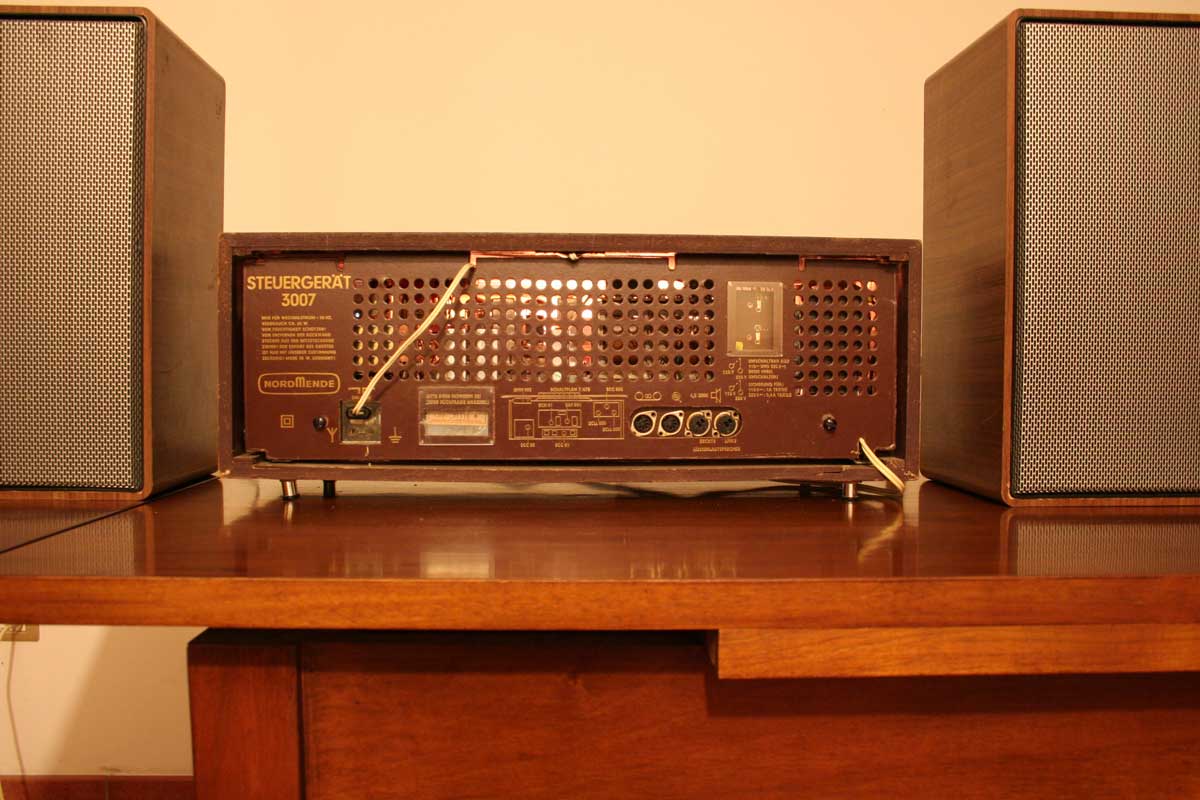
Output for external speakers.
Socket for recorder (tonbandgerat).
Turntable input (Tonabnehmer)
AM and FM aerial inputs and ground socket.
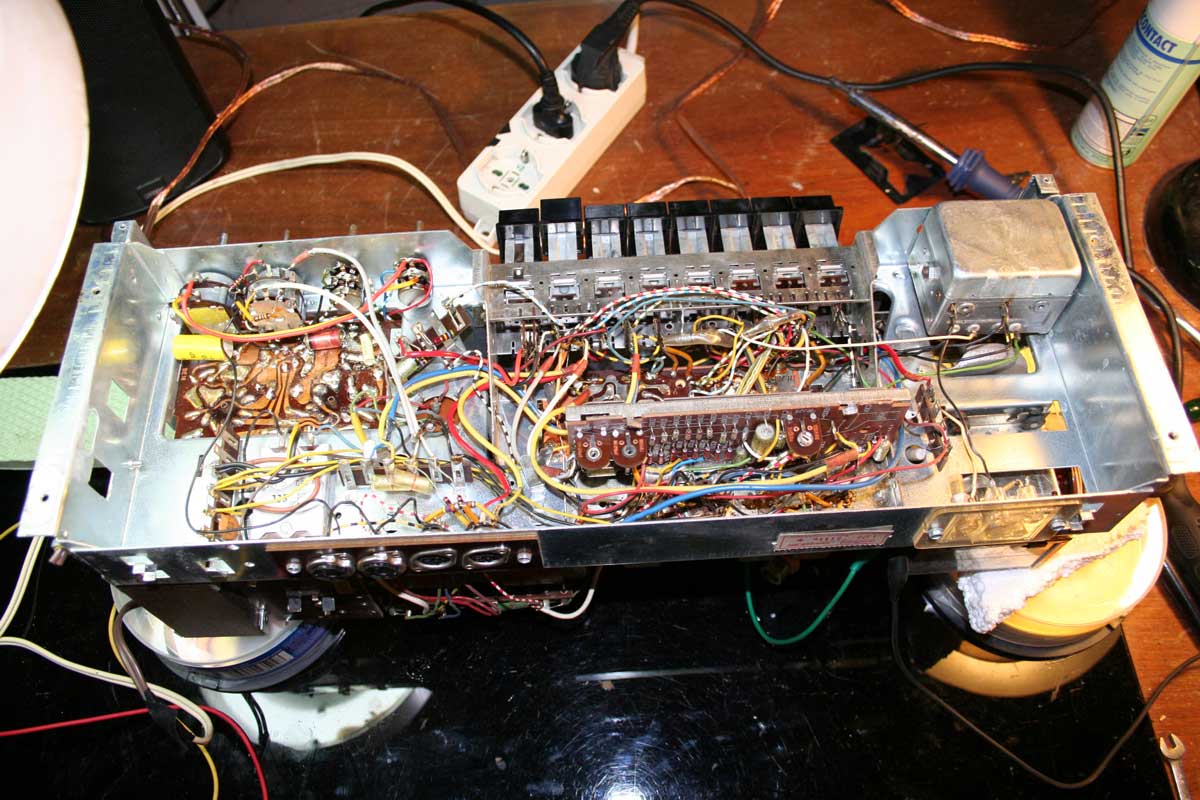



 freiburg studio a - en
freiburg studio a - en







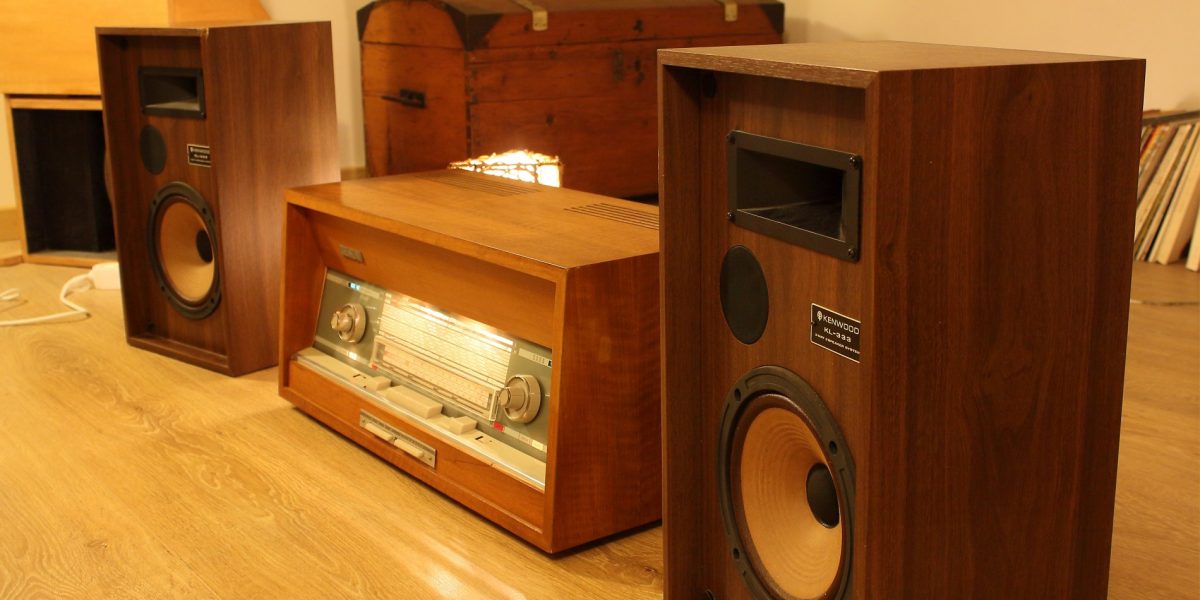



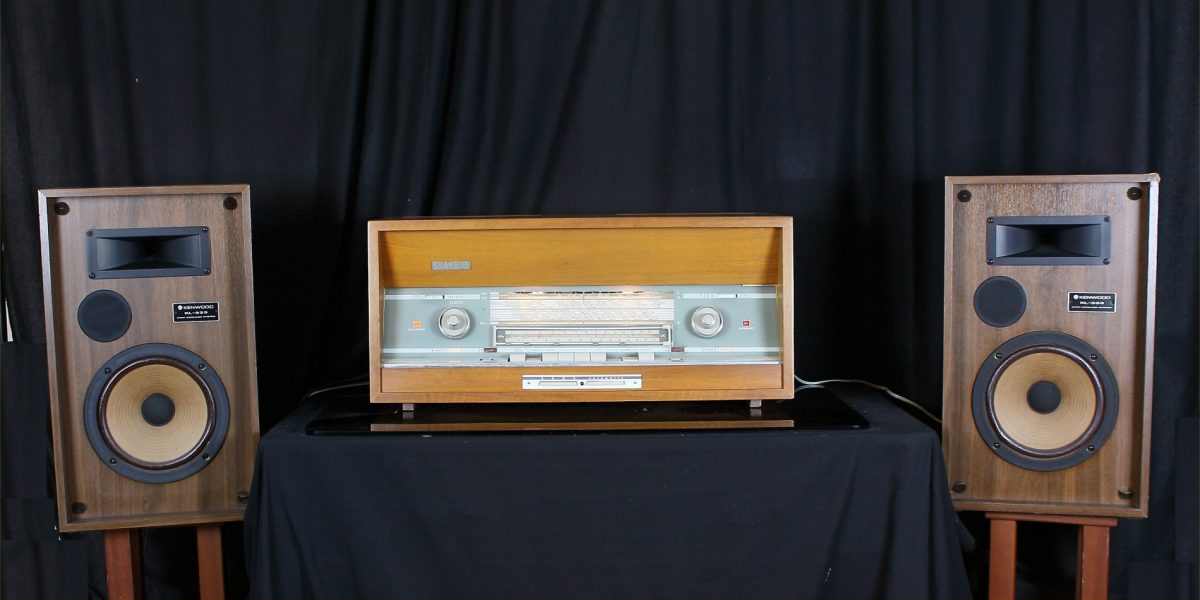

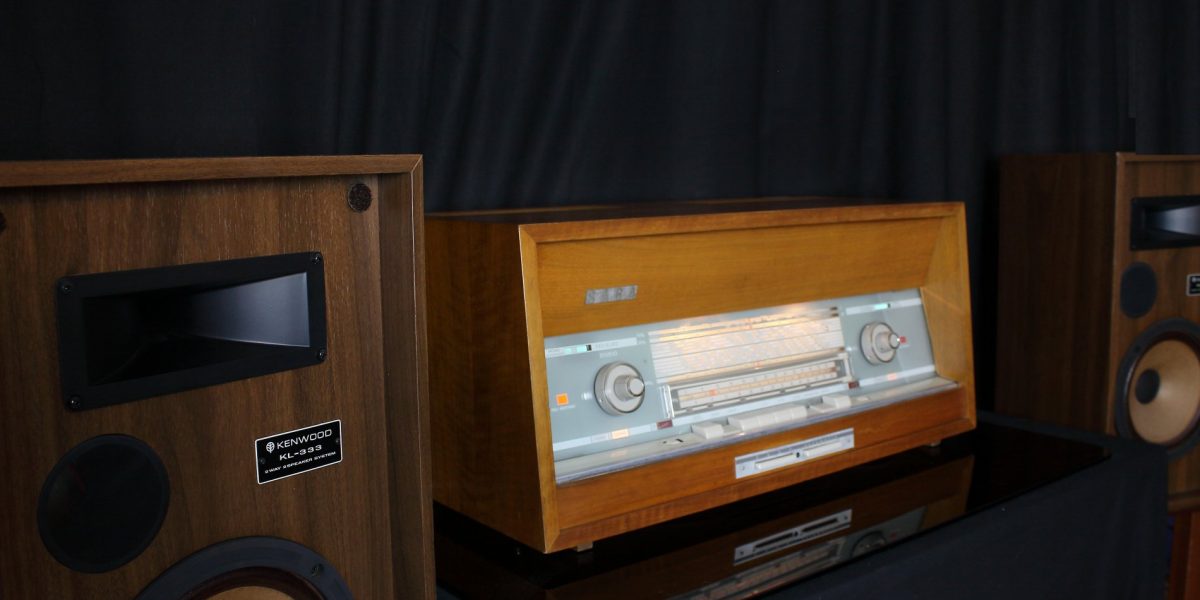

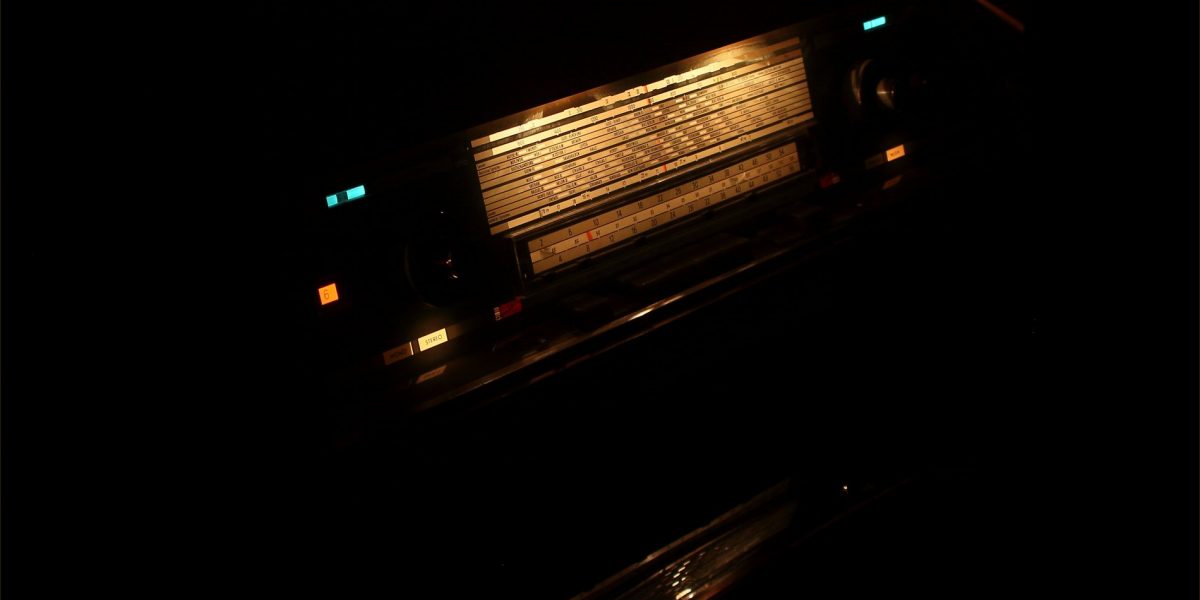
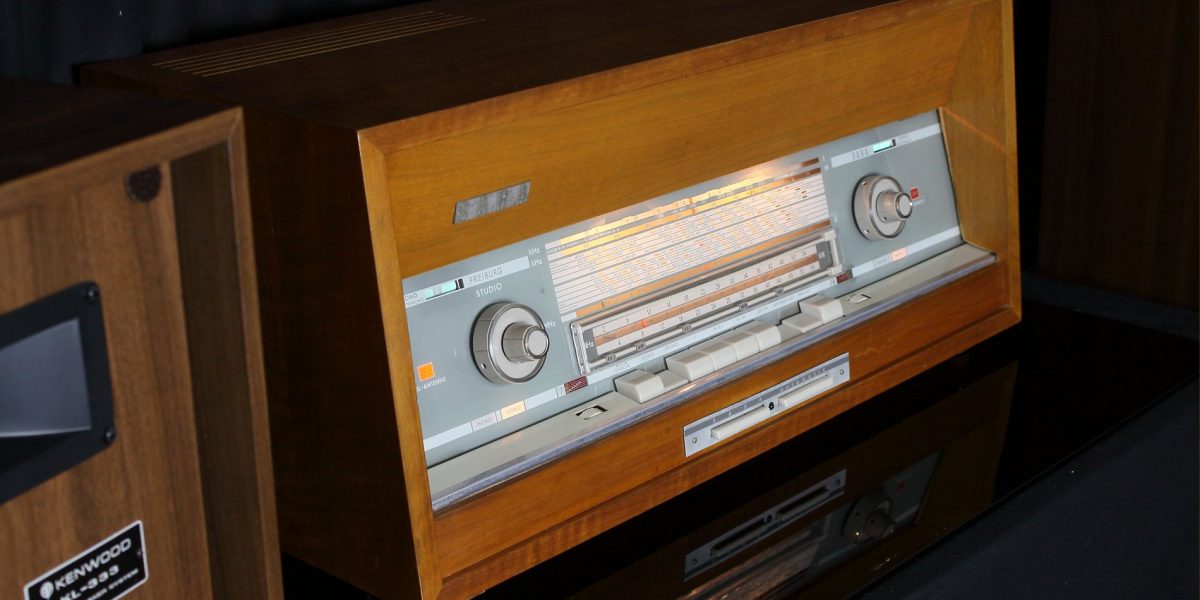
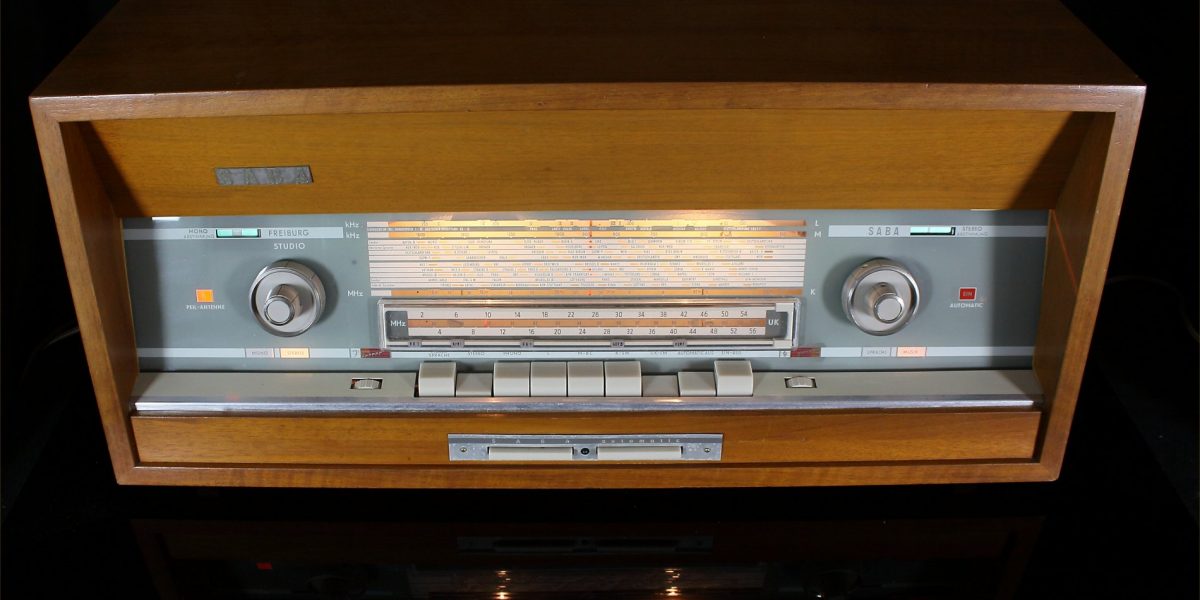





Saba Freiburg Studio A is the utmost expression of German production concerning the tube receivers equipped with automatic search.
None of the German receivers can give more and none have all of the features and performance of the Saba Frieburg Studio A.
Electronically, it is the same machine’s body used in the Saba Frieburg 14. Regarding this technical description you can refer to their page, but the possibilities of usage are different.
The first advantage – without loudspeakers, the furniture is more compact and is more easily arranged in any given space.
The second advantage – it is possible to join the device with compatible loudspeakers and place them in the most appropriate position for ideal listening.
The range of possibilities that receivers offer, as for example, the Saba Frieburg Studio A are very important. If used well, they can radically change the sound of a system.
As part of this particular review, I would strongly recommend consideration is given to the following advice to enhance the listening experience:
1- Do not place the electronics between the two loudspeakers.
In the pictures the receiver is in the middle of the two loudspeakers, are exclusively for photographic needs.
In a real configuration it must be placed on one side.
Listening to music is a total experience and captivates other senses beyond hearing. Try to listen to a track in the dark and then listen to the same track in the light in your home. Also, listen to the same track used as a soundtrack watching a film. Lastly, try to listen to the same track once more watching the video of the concert.
In all these cases, and in many other situations, the brain will detect and develop sound in different ways. It will create different feelings even though we are listening to the same track.
Placing the electronics in the middle of the loudspeakers distorts our perception of the sound.
Also pay attention to the mechanical resonance of the equipment placed in the centre of the loudspeakers.
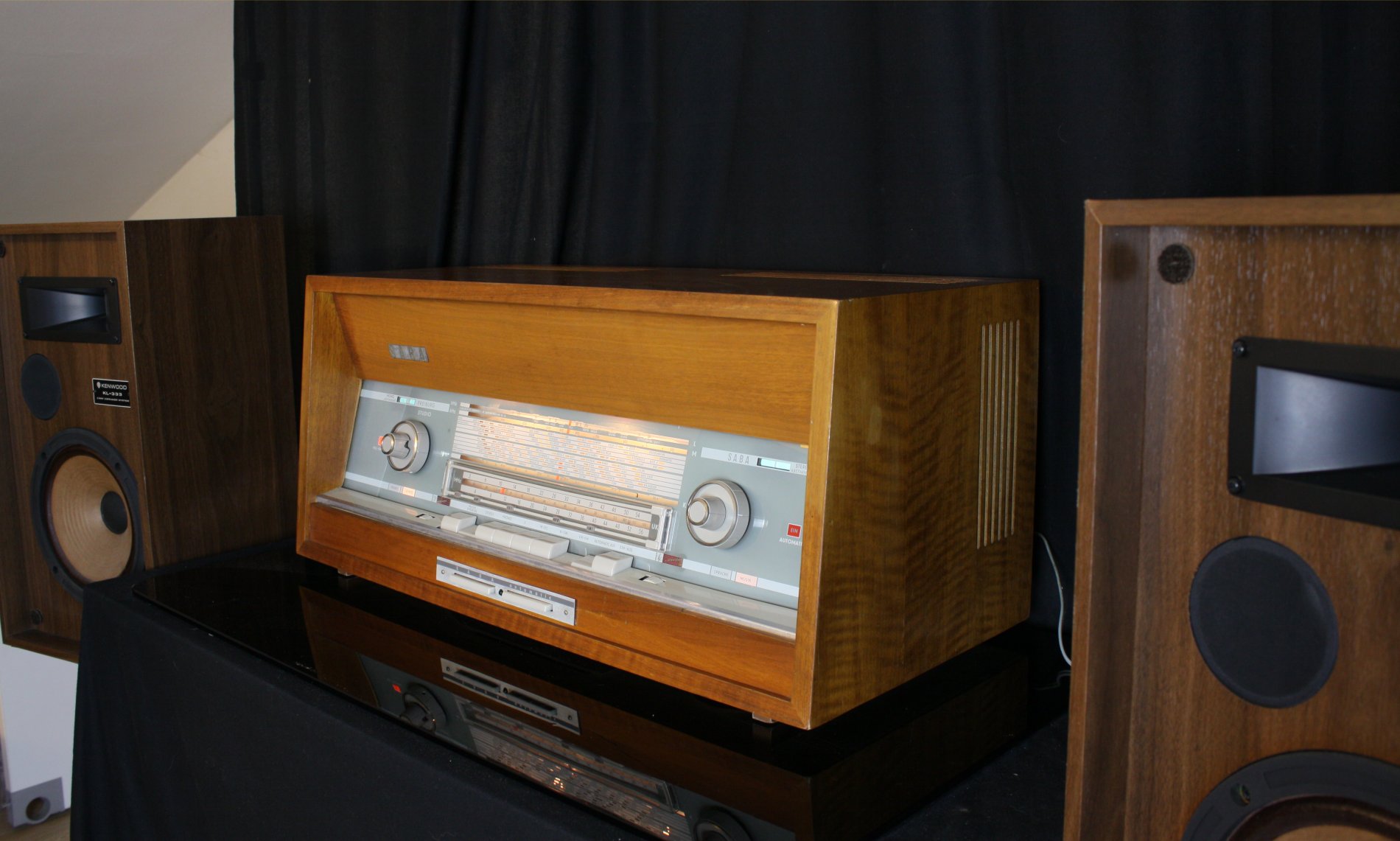
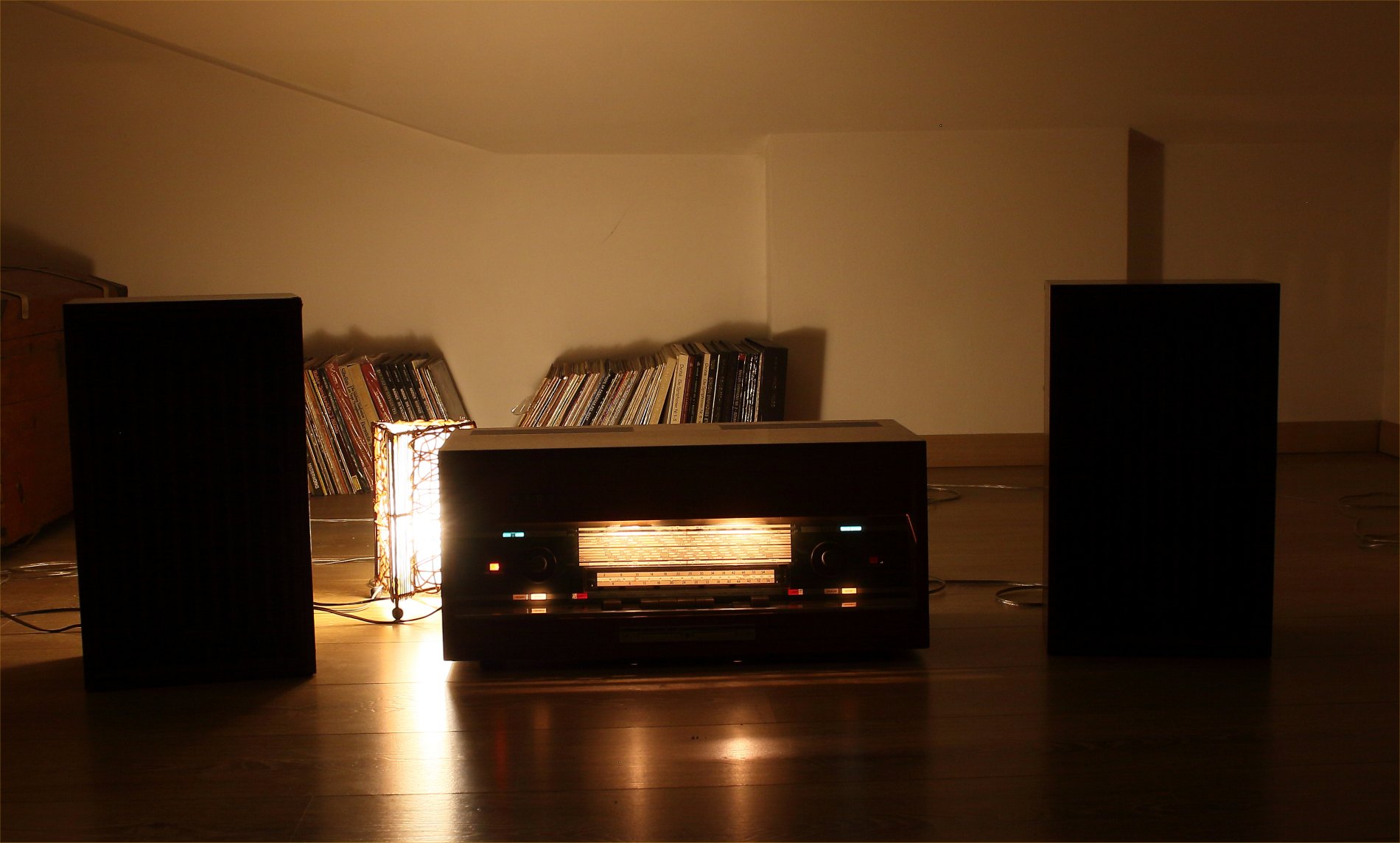
Bluetooth receiver embed
Each radio is equipped with a cable for connection to any digital device.
- Bluetooth receiver embed – The unit is equipped with a BLUETOOTH receiver powered directly by the receiver power supply. This makes it possible to control the amplifier from any external digital device as an IPAD, a Smartphone, or a sophisticated multimedia station. So you can hear your preferred web station or your lossesless file without cables on the room. Wireless Receiver can be equipped upon requests.
– Multi Platform Connection – A customized adaptation cable to connect any digital device as Iphone, Smartphone, Laptop, CD Player etc. will be provided with this radio. This special cable suits the different impedances between the modern equipment and the receiver. Furthermore the two stereo channels flow into one without increasing the load to the input unit.


SABA is the acronym for Schawarzwälder-Apparate-Bau-Anstalt meaning engineering institute of Technological appliances of the Black Forest.
The company was founded back in 1835 by Joseph Benedikt with the initial name of Jockele-Uhren, but only in 1923 the production of radio devices began and the company went under the name of SABA.
Toward the end of the 20s SABA became famous with the well-known S35 and in the following years it became the second German producer after Telefunken. During the war SABA produced military equipment and in 1945 the company was completely destroyed by a bombing.
In 1947 the production of radio devices began again and SABA distinguished itself immediately for ist avant-garde and high- quality production.
hey also began to produce TVs (the first PAL color TV is a SABA), house appliances and medical equipment. Many Italians used to work there. The Alnico Greencone loudspeakers became popular for their linearity, power handling, constant impendence that would be employed in each Hi-Fi devices of that time.
The radio devices with motorized tuning became popular as well and SABA became the representative German brand meaning quality, reliability and detailed precision. In the 1970s the decline began. According to specialized magazines of that time not having a Japanese device at that time meant not having Hi-Fi. In the 80s Thompson took over SABA. In the 90s the other way around, having a Japanese device of the 70s meant not having Hi-Fi. They found out that they functioned with a 96% counterreaction and that a device with 0.001 db from 1 to 100 KHz extension did not necessarily sound good.
We do not trust our ears and we do trust what other people say not necessarily with a good purpose.
2007: due to insolvency SABA disappeared from the TLC (Chinese) and Thompson (French) joint venture, and SABA ceased to exist.
Year of production: 1963-64
10 AM Circuits
13 FM Circuits
Wavebands: Medium Waves (OM), Long Waves (OL), Short waves (OC), FM (UKW)
Dimensions (LHD): 680 x 310 x 310 mm / 26.8 x 12.2 x 12.2 inch
Net weight: 20.5 kg / 45 lb 2.5 oz
14 Tubes: EC92 EC92 ECH81 EF89 EM87 EBF89 EF86 EF86 ECC83 ELL80 ELL80 EM84 EABC80 ECL80
Ferrite rotating aerial
Automatic tuning research
Optional remote control
FM stereo decoder






The tone control system is really efficient. Above the tone control knob you can find a small window that progressively lights up indicating the emphasis given to the band.

Rotating ferrite curve with lightened window indicating its position.
The ferrite curve can be rotated through a big knob which is coaxial to the volume knob. Inside the piece of furniture there is a dipole for the FM reception and a directable ferrite curve for the AM reception.
The device is equipped with separated tuning mechanisms for AM and FM bands and for each of the FM bands.
There is only one tuning knob but the selector changes on a cable and pulley system that are separated according to the band.
Worth noticing is the accuracy and the complexity of the motorized FM group.

The tuning system is a masterwork.
It is a motor with windings supplied in a phase shifted by some capacitors. It permit to change the motor rotation direction of according to whether the search is in one sense or another.
The tuning is centered by drawing part of the signal from the CAC circuit and by using a relais controlled by a tube.
As already mentioned, calibration is rather complex and it cannot be put into practice without referring to SABA’s original manuals.
Below a detail of the engine and the scheme section to control the automatism.


Another interesting feature is the volume control.
The knob does not automatically control the volume potentiometer. It controls through an unknot push-back.
The motorized remote control has a slight friction effect which strengthens the resistance when you turn the knob.





Another remarkable feature is the lightened keyboard.
The selected button lightens up.
The small Light bulbs are very rare and hard to be found.
Mono/stereo commutator does have its lightened indicators as well.
Usuallu the stereo position work only when you are listening to CDs or IPODs, but this model is equipped with a stereo decoder allowing an accurate stereophony FM reception.
The magic eye on the right side works as a modulation intensity indicator of the stations that have been received in stereophony.
The picture above shows the reception of a stereo station.
This receiver could be coupled with any loudspeaker, equipped with a high efficiency.
If there is insufficient space for the Open Baffle, or horn loudspeaker, this can be remedied by coupling this Saba to two other favourite loudspeakers of mine.
One is the KL333, a two way Bass Reflux with horn tweeter, manufactured from the Trio-Kenwood in 1972. These loudspeakers are excellent, very pleasant and defined.
They have an efficiency of 98dB and answer infrequency nearly linear from 45 to 20.000Hz.
These loudspeakers have been designed with great care.
The Bass Reflux duct, completely eliminates the tails on the bass, the weakest point of this type of speaker.
The most interesting feature is the slant of frequency to 6400 Hz.
This slant is very high and the resulting effect is almost like that of full-range loudspeakers.
There is a great presence and precision in the localization of instruments and the voices.
Compared to the classic, full-range loudspeakers, there is a bass reinforcement thanks to the duct system and reinforcement for acute sound thanks to a horn tweeter.
With some care in the arrangement of the speakers, the resulting sound will surprise you for its freshness and depth.

The first small window that can be seen on the left side indicates whether the ferrite curve is inserted and its position.
On the left side you can also find the volume control (with incorporated loudness) and the ferrite curve rotation control.
Right above the volume control there is a magic eye indicating the perfect tuning of each station.
Below you can see the Mono/Stereo indicator and further below the bass control knob.
The AM bands with Short, Medium and Long Waves and the FM displays.
Starting from the lefthand corner you can see the Musik/Sprache, Stereo/Mono, AUX input buttons, the band switch buttons, the Long, medium, short waves and FM switch buttons and the motorized tuning system (Automatik) button.
Lastly the ON button.
Next to it the acutes control knob is to be found.
The Musik/Sprache equalizer indicator.
On the right, the tuning knob, which is supported by a big fly-wheel that renders its movement really pleasant.
The automatic tuning functioning indicator is to be found on the right as well.
Above the stereo modulation indicator and below two buttons for the automatic tuning functioning. Each button activates the automatic tuning mechanism in one or the other direction. By pushing one of those buttons the engine constantly activates the tuning indicator for a fast reposition.

Output for external speakers.
Socket for recorder (tonbandgerat).
Turntable input (Tonabnehmer)
AM and FM aerial inputs and ground socket.
Remote control inputs
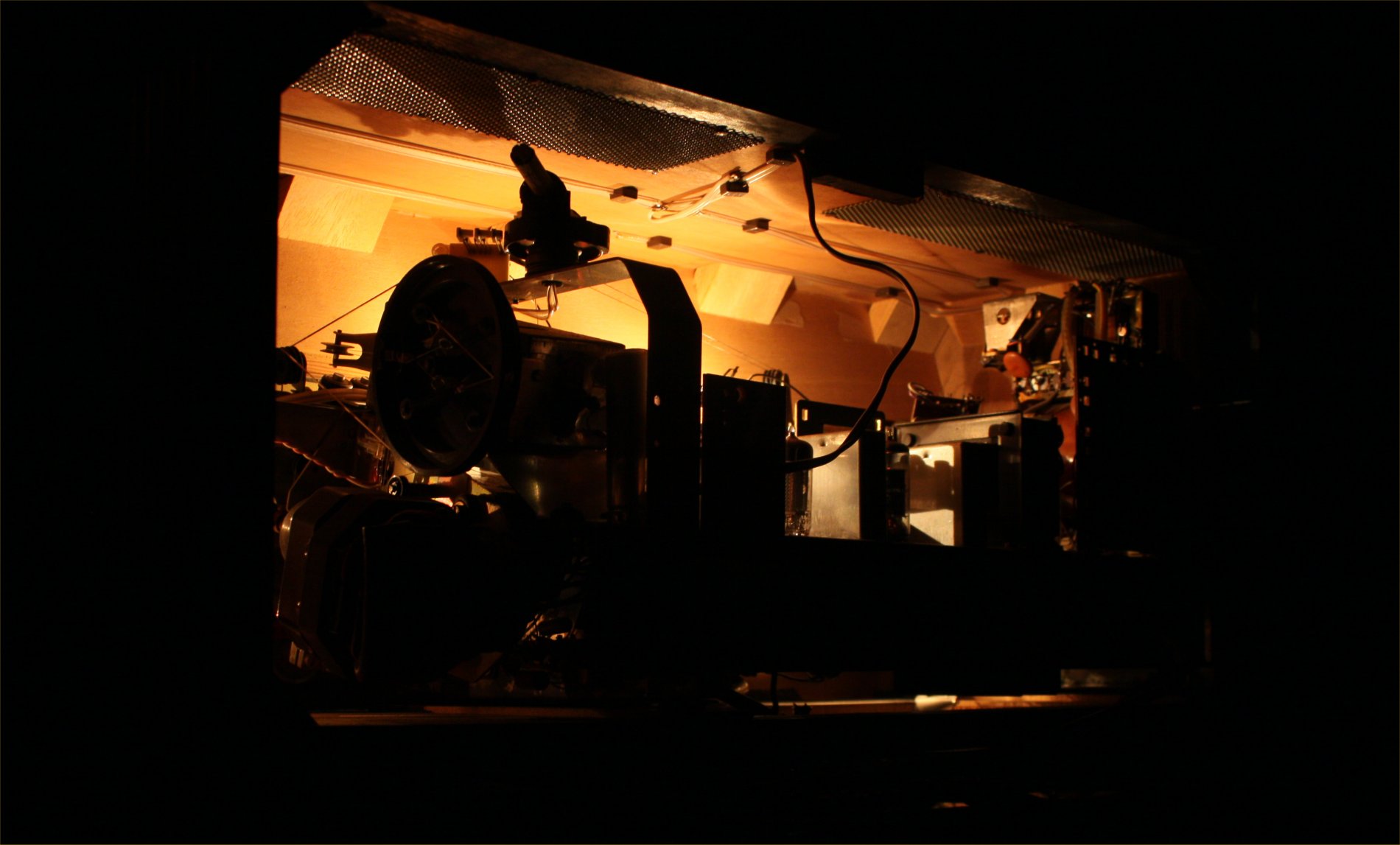
 tambour 61 - en
tambour 61 - en











The original cabinet was built by AEG but the frame, electronic parts and various components derived from Telefunken even if it is the same company.
For example, the AEG Tambour 61 is the same Telefunken Concertino 2194 rebranded. The device is particular because it has different stages at medium frequency respecting all other vintage devices.
In this case the device has an MF amplifier stage and Automatic Frequency Control (AFC) which fits automatically once tuned into the station while it remains excluded during the search.
In all other devices, pressing the AFC button you get perfect tuning stability, but during the search it is only possible to receive the strongest station; conversely without pressing the AFC button it is possible to receive all the stations but the tuning is unstable.
AEG and Telefunken have developed a brilliant system to resolve this problem as explained as follows:
In FM modality, the radio reception is absolutely perfect and free from rustles.
The section of low frequency is magnificent because there are two finales in A- class equipped with a couple of ELC86.
The ELC86 are excellent vacuum tubes. The A-class does the rest.
The power, by virtue of the body of the loudspeakers at high efficiency is remarkable and the sound is very sweet and energic.
Regarding the position of the loudspeakers, the sound remains about the same, from whatever angle you listen to the device.
This makes it more enjoyable and affords the opportunity to listen to music and the programmes whilst multi – tasking.
Lastly, the furniture is shiny and in an excellent state. It is well proportioned, with innovative design and evokes the waves of a Lyra.
The vacuum tube is almost double or triple for the total amount of 17 single vacuum tubes.
- AFC automatic excludable


- Bluetooth receiver embed - The unit is equipped with a BLUETOOTH receiver powered directly by the receiver power supply. This makes it possible to control the amplifier from any external digital device as an IPAD, a Smartphone, or a sophisticated multimedia station. So you can hear your preferred web station or your lossesless file without cables on the room. Wireless Receiver can be equipped upon requests.
– Multi Platform Connection – A customized adaptation cable to connect any digital device as Iphone, Smartphone, Laptop, CD Player etc. will be provided with this radio. This special cable suits the different impedances between the modern equipment and the receiver. Furthermore the two stereo channels flow into one without increasing the load to the input unit.


In 1883 AEG “Allegemaine Electricitats Gesellschaft “ ( General Company of Electricity ) was born thanks to Emil Rathenau, an engineer from Berlin. He bought Edison’s lightbulb license and started to commercialize it in Germany through his company “Deutsche Edison Gesellschaft” (OEG)( German Edison Company .
In 1887 AEG presented the first electrical appliances during a World Exhibition; an iron kettle and curling tongs.
AEG became the most important electrical producer in Germany.
In 1903 AEG together with Siemans A.G founded Telefunken. The idea was to transform Telefunken into the first technology company with video - radio – electrical and military skills in Germany.
In 1907 AEG hired the architect and designer Peter Behrens as industrial engineer.
In 1911 Kaiser Guglielmo sent Telefunken’s engineers in West Sayville (New York) to build a radio tower 180 metres high. A similar tower was erected in Nauen ( Germany), creating the unique wireless communication network between North America and Europe. During construction of the tower in New York the German employees were forbidden access to the American employees in the work area.
In 1912 AEG produced the “famous Dandy” hoover and from that moment, dominated the German market with constant innovation to equip the home and professional environment.
Today, AEG belongs to the Electrolux Group.
MAIN FEATURES
Year of production: : 1961
Superheterodyne IF: 472/10700
8 AM Circuits 11 FM Circuits
Wavebands: LW, MW, SW, FM
Loudspeakers:
2 elliptical fullrange
2 Tweeters
Dimensions (LHD): 640 x 375 x 270 mm / 25.2 x 14.8 x 10.6 inch
Net weight: 14.3 kg / 31 lb 8 oz
9 Tubes: ECC85 ECH81 2xEF89 EM84 EABC80 ECC83 2xECL86
Rotating ferrite aerial for AM bands

Two front speakers emission behaviour
Each of the two front speakers has a fairly wide angle of emission.
Standing in front of the radio, centrally located, the output areas of the two loudspeakers intersect.
In monophonic listening, the acoustic feeling is to hear from a single central speaker.
But being two, the emission surface is very high, producing the same sound impact as a large woofer.
At the same time, the two front speakers, having smaller and lighter membranes and reels than a single large woofer, so they are much faster.
The low frequencies are therefore more ready and tail-free, and the range in the high frequencies is very extensive.
An expensive but highly performing choice.
The tone control system is very efficient. Above the large tone control knobs there is a band that lights up gradually indicating the emphasis on the band on which it acts.







Klangregister, sound registers, are buttons that introduce the prearranged equalization curves. They are divided into two groups, on the right and on the left of the button range selection.
Bass: emphasizes the low loudness
Solo: introduces the medium loudness
Intimi : reduces the high notes
Jazz: enhances the high notes

Inside the cabinet there is a dipole for FM reception and a ferrite rotating aerial for AM reception.
Ferrite aerial can be rotated from the outside to achieve a perfect tuning of the device in the AM.
In this picture see the rotation mechanism and the position indicator of the aerial.
The reception sensitivity with internal aerials is very good. This unit was in fact produced in a period when there were not many radio stations and those available fairly apart from each others.
Using an external aerial sensitivity is further increased.
The tuning system is another gem.
The unit is equipped with mechanisms for keeping separate the AM and FM bands.
The movement is transferred to both mechanisms with a system of pulleys and separated gears.


This an exclusive feature of this device, the Automatic Frequency Control (AFC) that excludes itself automatically.
The mechanism works like this:
To tune into any FM station it is necessary to rotate the biggest knob, the one with the silver edge.
To rotate it, just press on the white small pipe the AFC, via the internal contacts of the knob, then it is possible to tune into all the stations with both the strongest and weakest signal.
As soon as you release the knob, through the same contacts, the AFC automatically inserts itself and the station is engaged at the maximum power.
Other devices do not appear to use this system. Too much expensive I suppose!
The magic eye has of course been replaced.
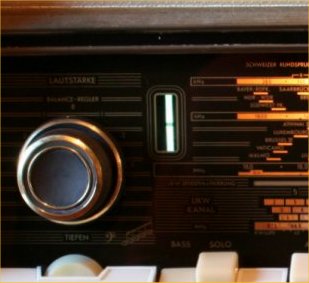
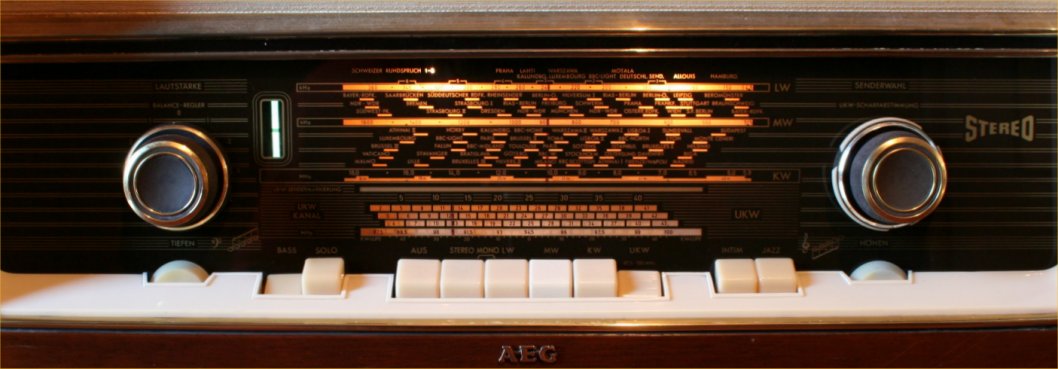
On the left there is the volume command (with the incorporated loudness) and axially to this, the balance command.
The Magic Eye indicates the perfect tuning each station.
The AM band for the long, medium short waves and FM band.
Below from the left, there are in order the bass knob, the Bass and Solo buttons, powering off, Stereo Record Player, Mono Record Player, buttons for tuning in long, medium and short waves, FM buttons, Intim and Jazz. At the end the check high notes knob.
Under each button is shown the frequency band.
Finally, there is the tuning knob, coaxial AM and FM, which makes the movement pleasant because it is supported by a two fly- wheel.
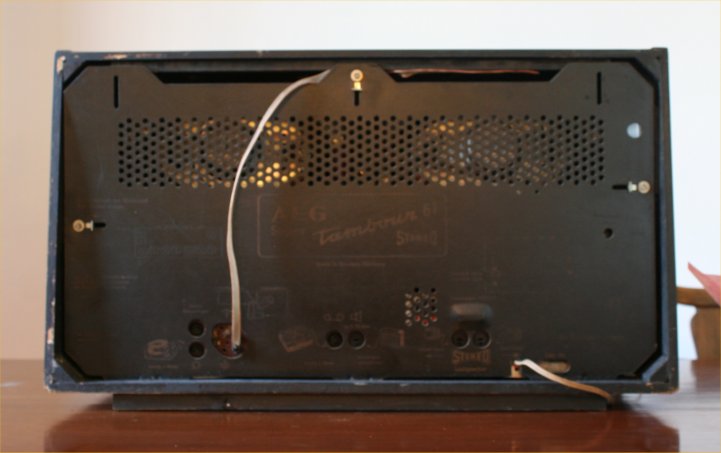
Output for external speakers.
Socket for recorder (tonbandgerat).
Turntable input (Tonabnehmer)
AM and FM aerial inputs and ground socket.












